The New Business Context for Leaders
Back to basics Maximize your adaptability
The Asian Century Insights from the East
The innovative leader Creating change
Less is more Implement strategy efectively


Back to basics Maximize your adaptability
The Asian Century Insights from the East
The innovative leader Creating change
Less is more Implement strategy efectively

How leaders can tune in to the needs of a changing world

































MEGAN REITZ Professor of Leadership and Dialogue at Hult International Business School












PAUL (PABLO) ETTINGER Chairman of TALENTBANQ and one of the founding team of Cafe Nero












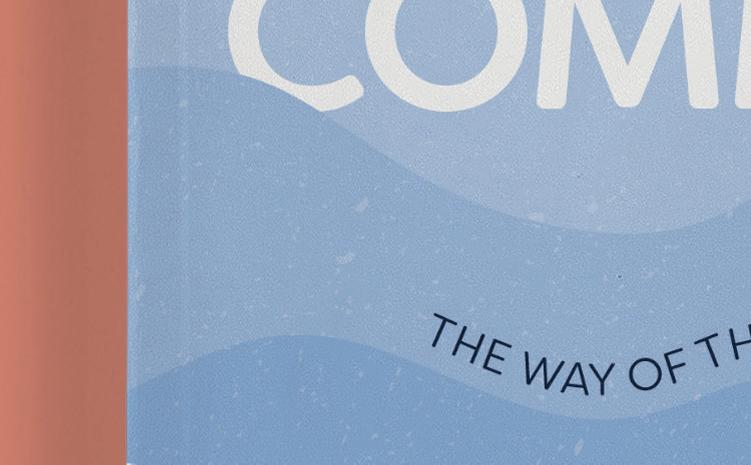


“This concise and thoughtful volume masterfully demonstrates the power of the leader who shows up mindfully, with clarity, calmness, compassion and courage. It condenses a huge body of wisdom into an original and accessible framework, with tools and practical advice to improve both leadership skill and life fulfilment.”
“This is an immensely valuable book for anyone who would like to understand what good leadership behaviours look like and would like to improve their own leadership.”














“ Sally-Anne’s book captures an important nuance of leadership through storytelling and blends her experience with a wealth of practical guidance.”
LARISSA HARRISON Global HR Director






The old world is dying, and the new world struggles to be born: now is the time of monsters.” The words of Antonio Gramsci, the Italian thinker and politician, orginally described the crises of the late 1920s – yet they feel apt for our times, nearly a century later.
We live in a world that is being reshaped at pace by multiple crises. Can we transform the global economy so as to produce net zero carbon emissions and avert catastrophic climate breakdown? Can we harness the power of AI and other breakthrough technologies for good? Can we navigate deep differences of opinion and endemic mistrust to begin healing the divisions that scar our societies? If the answer to these questions – and other, equally challenging ones – is to be “Yes”, then it is surely essential to rethink our ideas about leadership.
Yet where to start? Our old paradigms are premised on a very different world; it may be dying, but its ideas, its systems, its ways of working remain pervasive. The shift begins with tuning in to the signals of the emerging new world: recognizing that they are impossible to ignore, and acting courageously in response.
In this issue of Dialogue, our Focus authors explore the interwoven crises that are impacting businesses around the world – and the implications for leadership. Start with a trio of insightful articles from Duke CE’s own leaders. Sharmla Chetty and Vishal Patel (p16) both diagnose the challenges we face, and identify the elements of a new way of leading. Making the necessary shift is far from straightforward, they warn. Today, many organizations find themselves, in effect, frozen – stuck between yesterday’s requirements and tomorrow’s demands. Leadership is essential to escape from that bind.
Andrés Saint-Jean, meanwhile, takes the long view, arguing that humanity’s history is defined by cycles of disruption and adaptation (p20). The adaptive capabilities that have seen us through earlier upheavals will again stand us in good stead.
Finally, Beth Ahlering and Dennis Foo draw our attention to the ongoing rise of Asia (p28). Yes, there are complex geopolitical questions at play as the Asian Century takes shape. But there are also important lessons to be gleaned for leaders globally: communitarian values that emphasize the need to optimize for diverse stakeholders’ needs are well suited to markets that are increasingly shaped by ecosystems, they point out.
Richard Freishtat of the Fuqua School of Business, meanwhile, zooms in on the impact of professional development for both individuals and organizations (p24). The new mantra: disrupt or be disrupted. Elsewhere, Asad Hussein warns of the risk of career sleepwalking, a reminder to every professional of the importance of taking ownership of their own development and progression (p46).
Michael Chavez and Jeremy Blain highlight the need for organizations to develop CEOs at every level. It is a task requires both an organizationallevel commitment to supporting leaders in developing the right capabilities, and the creation of cultures that unleash talent at all levels to drive new levels of performance (p38). Blaire Palmer takes aim at the ideas of the industrial era that still exert a baleful influence on how organizations operate today. It’s time to leave those old ideas behind, she argues, and recalibrate around a more trusting, more emotional, purpose-driven vision of work (p42).
Yes, we live in a time of monsters. But heed the signals of the future, and we will find the answers needed to defeat them. Enjoy the issue.

Our old paradigms are premised on a very different world
Dialogue is brought to you by:
LID Business Media
Editor Patrick Woodman
patrick.woodman@lidbusinessmedia.com
Art director Kate Harkus
Chief subeditor Luisa Cheshire
Editor-at-large Ben Walker
Publisher Martin Liu
Associate publisher Alec Egan For advertising sales: alec.egan@lidbusinessmedia.com
Duke Corporate Education
Chief marketing officer
Christine Robers
Publisher
Published in the United Kingdom by LID Business Media Ltd, LABS House (5.12), 15-19 Bloomsbury Way, London WC1A 2TH
Disclaimer
Copyright 2024 by Duke Corporate Education and LID Business Media Ltd. All rights reserved. Material may not be reproduced without permission of the publisher. While we take care to ensure that editorial is accurate, independent, objective and relevant for the readers, Dialogue accepts no liability for reader dissatisfaction rising from the content of this publication. The opinions expressed or advice given are the views of individual authors and do not necessarily represent the views of Dialogue. This journal is also supported by Knowledge Partners, including Duke Corporate Education as Lead Knowledge Partner. Whenever an author is related to a Knowledge Partner it will be noted as such. Dialogue takes every effort to credit photographers but we cannot guarantee every published use of an image will have the contributor’s name. If you believe we have omitted a credit for your image, please email the editor. Cover image Shutterstock
ISSN 2053-4361
Printed by Paragon www.paragon.world


The power of the many Why one CEO just isn’t enough
Punks in suits Purpose, not profit, drives great organizations forward
Wake up call Take control of your career


Wadhwa on
AI become
the
it’s already here
nation Can a new government solve the UK’s economic woes?
Timms on
Piers Cain on The Problem with Change
word Sanyin Siang on the ecosystem mindset
Gunther McGrath on strategy How to pick up on early warning signs
revolution To achieve more, do less



















solvers Learn from five market-changing businesses






DR MARIA KATSAROU-MAKIN is the founder of the Leadership Psychology Institute and has over 20 years of experience in organizational development and executive coaching. She is a Chartered Psychologist and has done extensive work and research in team dynamics.







“…an intellectual tour de force through many of the primary sources, theories and research about effective teams…[the author] even sensitively examines the dark side of teams and frequent pathology. It is guaranteed to spark ideas about how to lead and infect your teams”

RICHARD BOYATZIS PhD, Distinguished University Professor, Case Western Reserve University, and co-author of bestselling Primal Leadership


Sharmla Chetty
Chief executive of Duke CE and its former president of global markets North America, Europe & UK, Asia, and Africa. Chetty is a visionary driven by one purpose – transforming organizations and society through leadership. She was previously head of human capital development at Nedbank for over 19 years and has a proven track record of driving transformation through leadership in a wide range of industries. Focus p16
Duke CE’s regional managing director for Middle East and Asia, leading the strategy, client portfolio and Duke CE team for the region. Ahlering has held a variety of leadership at roles in progressive leadership firms. She was previously chief executive of Cambridge Judge Business School Executive Education, regional managing director for Duke CE in Europe, and a senior consultant in the people consulting practice at KPMG. Focus p28
Stephen Wunker
Managing director of New Markets
Advisors, a consulting firm focused on innovation. Wunker was responsible for one of the first smartphones, and partnered with longtime colleague Clayton Christensen to build consulting firm Innosight. He is the author of The Innovative Leader: Step-by-Step Lessons from Top Innovators for You and Your Organization. Innovation p50



Duke CE’s lead for the ESG Leadership Academy, its digital and partnerships teams, and the South Africa office. Originally from Chilean Patagonia, Saint-Jean was previously a management consultant at McKinsey & Company, where he was a VP of McKinsey Transformations and led the launch of McKinsey’s Sustainability Academy. Focus p20

A former BBC journalist turned organizational culture and leadership specialist, and keynote speaker. For the past 24 years, Palmer has helped organizations drive real change in their businesses and create places where people do their best work. She is the author of Punks in Suits: How to lead the workplace reformation.
Leadership p42
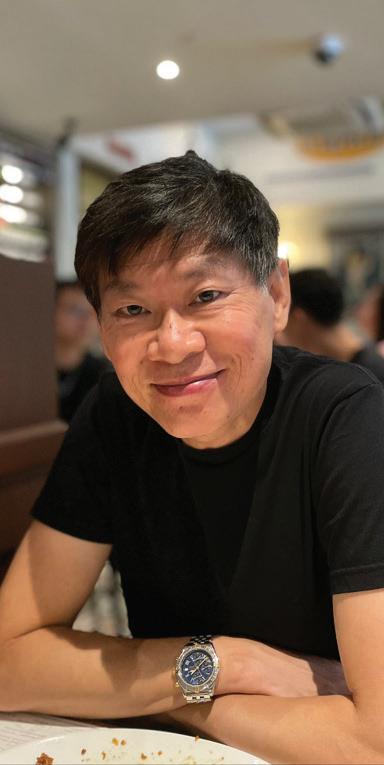
Join the Dialogue
Managing director for Asia and the Middle East at Duke Corporate Education, based in Singapore. Foo was previously director and chief operating officer at PwC’s Academy in Singapore. Prior to joining PwC, he was managing director for qualifications (Asia Pacific) and vice president for global venture markets at Pearson. Focus p28


Into the unknown
Duke Corporate Education’s Sharmla Chetty and Vishal Patel examine the crises that are unleashing radical changes around the world, and explore the leadership that’s needed to shape the future, today (p16). Andrés SaintJean argues that human history is a story of adaptation to crisis. Leaders can thrive in their own era of disruption by going back to basics: think critically, influence others and empathize deeply (p20).







The power to create
Century
Beth Ahlering and Dennis Foo assess what can be learned from the rapid rise of Asia as a political, economic and cultural force (p28), while Catherine Hua Xiang explores the intercultural concepts leaders need to understand in order to sell in China (p70).

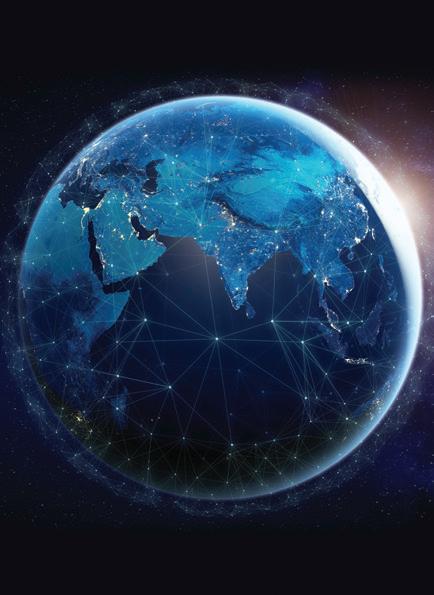
Less is more
Businesses regularly overestimate their ability to implement strategy, writes Johan Grönstedt. The key to achieving more? Focusing on less (p74). Robin Speculand explains why discipline is needed to deliver digital and business transformation (p54).
Stephen Wunker looks at the six traits of the innovative leader (p50). Blaire Palmer takes aim at the Victorian ideas that continue to influence today’s organizations, and argues for a reset based on clearly defined purpose (p42), while Anthony Tasgal highlights how insights drawn from behavioral economics can shape a better understanding of customers (p66). Sally Percy takes a look at the strategies pursued by five disruptive businesses (p78).
The idea that DEI is just a trendy cause bears no scrutiny
The backlash has begun. Diversity, equity and inclusion (DEI) is under fire, at least in America. Ten states in the union have approved legislation to starve DEI programs of public funding or political support, or rendering them illegal altogether. Academia is at the forefront of the revolt. The great state of Texas has banned diversity offices in universities.
Yet corporate America has been targeted too. Florida legislated to prohibit diversity programs run by private businesses. A lawsuit by companies led to the move being declared unconstitutional (although the state may appeal).
It is undeniable that the 2020 killing of George Floyd caused businesses to look again at their recruitment practices, leading to a boom in awareness of DEI among organizations. “After the killing… the heat could be felt in the airconditioned corner offices above,” The Economist wrote at the time. “America Inc rushed to announce plans to tackle racial inequality.”
It is a matter of record that DEI policies within major organizations have become higher profile in the intervening years. Yet it is wrong to consider – as many DEI critics do – that business’s drive towards greater equality and inclusion is a bandwagon that should be stopped in its tracks. It is neither a reaction, nor a fashionable cause. Rather, it is the modern incarnation of ongoing social progress. And that should be encouraged, not resisted.
I was struck by the words of Sarah Boddey, global head of DEI at Munich Re. “We need to challenge the concept that DEI is new,” she told delegates at Duke CE’s Lead with Her conference earlier this year. “Humanity has been fighting for diversity, equity and inclusion for as long as humanity has existed – particularly the underrepresented groups within humanity.”
The recent backlash against DEI is a response to the post-Floyd world. But DEI as business policy traces its origins back more than 100 years. The
DEI is neither a reaction, nor a fashionable cause. It is the modern incarnation of ongoing social progress. And that should be encouraged

Women’s Bureau was established in 1920, a few months before women won the right to vote in the US. (It remains part of the US Department of Labor today.) The Bureau enabled the Fair Labor Standards Act (FLSA) of 1938; it documented wage inequality between Black and white women, and allowed women to sit civil service exams.
In 1963, the US Congress issued the Equal Pay Act. The act protected against sex-based wage discrimination. But, while government acts laid the groundwork, the private-sector maintained progress. By the 1970s, many Fortune 500 companies emphasized diversity in their hiring practices as a conduit toward a larger, more richly talented, labor pool.
Boddey is right: there is nothing new about DEI. It has come under the spotlight because of its widespread adoption by the West’s most dynamic companies. But that is because of its strengths as a concept, not its flaws. DEI is an enduring business decision. The research is clear: inclusive teams can make better decisions nearly nine times in ten. More diverse companies are likely more innovative and react quicker to market trends.
Sharmla Chetty is chief executive of Duke Corporate Education
The drive towards DEI is the story of human progress itself. It is part of our DNA. Companies support DEI because it is good for people – and good for business. “We don’t need to persuade most businesspeople on diversity,” Marc H Morial, president of the National Urban League, told NBC News recently. “We just have to encourage them to be courageous – and not be intimidated.”













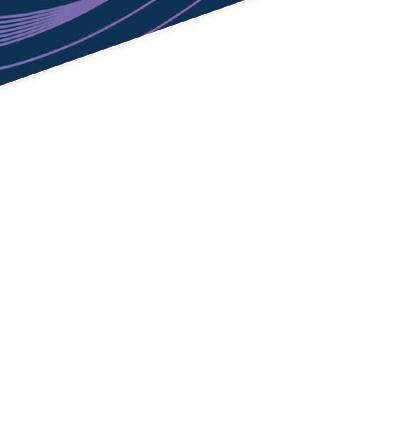



“[Simone Fenton-Jarvis] uses a wealth of personal experience and the latest psychology insights to rethink the purpose of the workplace and how we can create spaces that allow us to bring our best to every visit.”
ANTONY WILTSHIRE
Director of Workplace, UK&I, Edelman
“ If you want to truly understand what it means to bring your full self to work, how the brain is both rational and emotional, what good leadership looks like, how to detect a supportive workplace culture and what roles space and technology play, this book is for you.”


DR KERSTIN SAILER
Professor in the Sociology of Architecture, The Bartlett School of Architecture, University College London






Constancy is paramount in the storm of change
One of the most significant facts about humanity,” noted the anthropologist Clifford Geertz, “may finally be that we all begin with the natural equipment to live a thousand kinds of life but end in the end having lived only one.”
Geertz’s words speak to the wonder of unlived lives. Where and when we are born is an accident of history. Yet it sets us on a path that, for the most part, changes little as we age. Sure, we can switch jobs and pivot along the way. But, for most individuals, the world we inhabit is an artefact of birth. Humans born to wealthy families in Old Europe command the same genetic tools as those born to a Serengeti tribe, but the European lives one life, the African a different one. Rarely, if ever, does the same human spend her life in more than one world.
Why not? The answer comes from a human preference for stability. The science is clear. The American Psychology Association has shown that humans prefer a sense of control and are more motivated when part of reliable interpersonal relationships. Other studies similarly indicate that we perform better when our environment is predictable. Permanency matters.
This makes it peculiar that modern leadership theory centers so often on managing change. If it is stability that makes us tick, shouldn’t our aim be constancy rather than elasticity?
When Ashley Goodall led a research team at the tech giant Cisco, he unearthed a telling truth. Three conditions predicted high team performance. The first condition centered on individuals:
employees had clarity and consistency about their role and the way they could deploy their skills. The second condition related to teams: members supported each other and had a collective grasp of what success looked like. The final condition focused on organizations: the wider mission of the company resonated with teams and their members.
But here’s the rub: each of the three conditions varied by team. Only the second of the three conditions related directly to team dynamics. Yet this condition remained the key arbitrator of the other two. Those in well-functioning,
The companies that succeed in the long-term are grounded in enduring principles
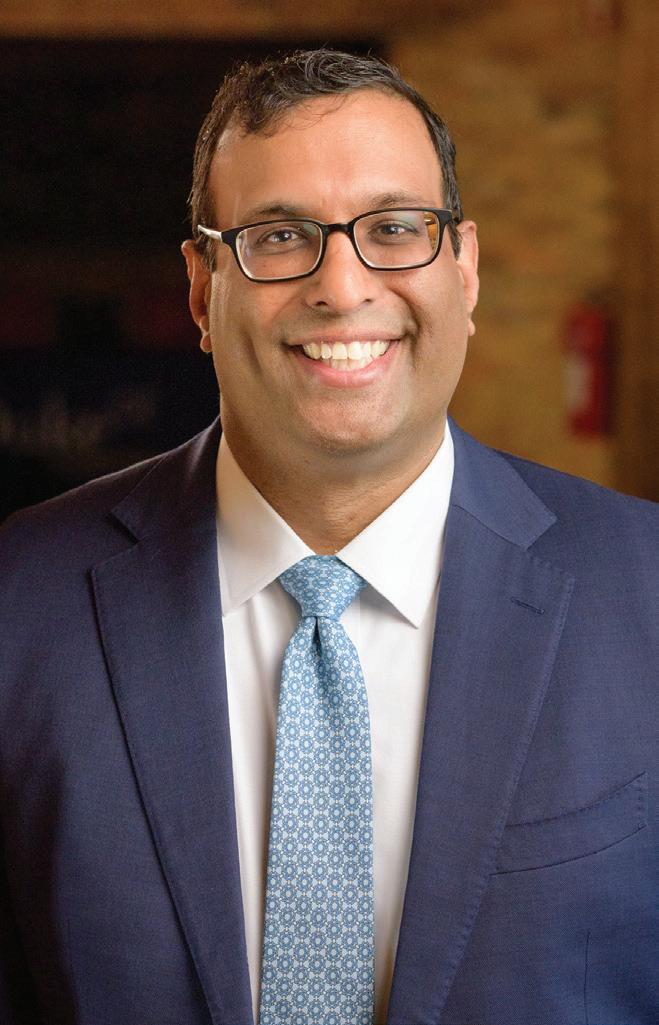
stable teams likely meet all three conditions. “Our experience of work is created by those around us,” writes Goodall in the Harvard Business Review “The different sets of conditions were those that distinguished the higher performing teams. And stability runs like a seam through all of them.”
Change management is in vogue. The world is volatile. Thus, adaptability and changeability is prized. Sure, agility in business can be valuable. But the fact that impermanence is normalized ought not make it desirable. Quite the opposite. In an uncertain world, there is a case for seeking the sanctuary of stability rather than the ambiguity of change. “We have come to believe that change is (necessarily) good, that disruption is (necessarily) the way to a better future, and that when people resist the latest new strategy or structure, that resistance is a failure to be overcome, rather than a signal of what humans need at work,” writes Goodall. “Of course, some change is necessary, and some is inevitable. But not all of it.”
So pervasive is the preoccupation with change management that the idea of stability management barely exists in the consciousness of many organizations. Yet it should, because stability breeds relatability, agency, security – all things that are proven indicators of high teamperformance. The key to creating winning organizations is fostering stable teams, not amorphous companies.
When Geertz wrote about humanity being equipped for a thousand lives yet leading just one, he might have extended his theory to organizations. Innovation, flexibility and agility are precursors to success. Yet the companies that succeed in the long-term are grounded in enduring principles, drawing resilience from stable, coherent teams built on shared understanding. They stand strong in the storm of change, like rocks in the rain.
Ashley Goodall’s “The Problem with Change” is reviewed on p85
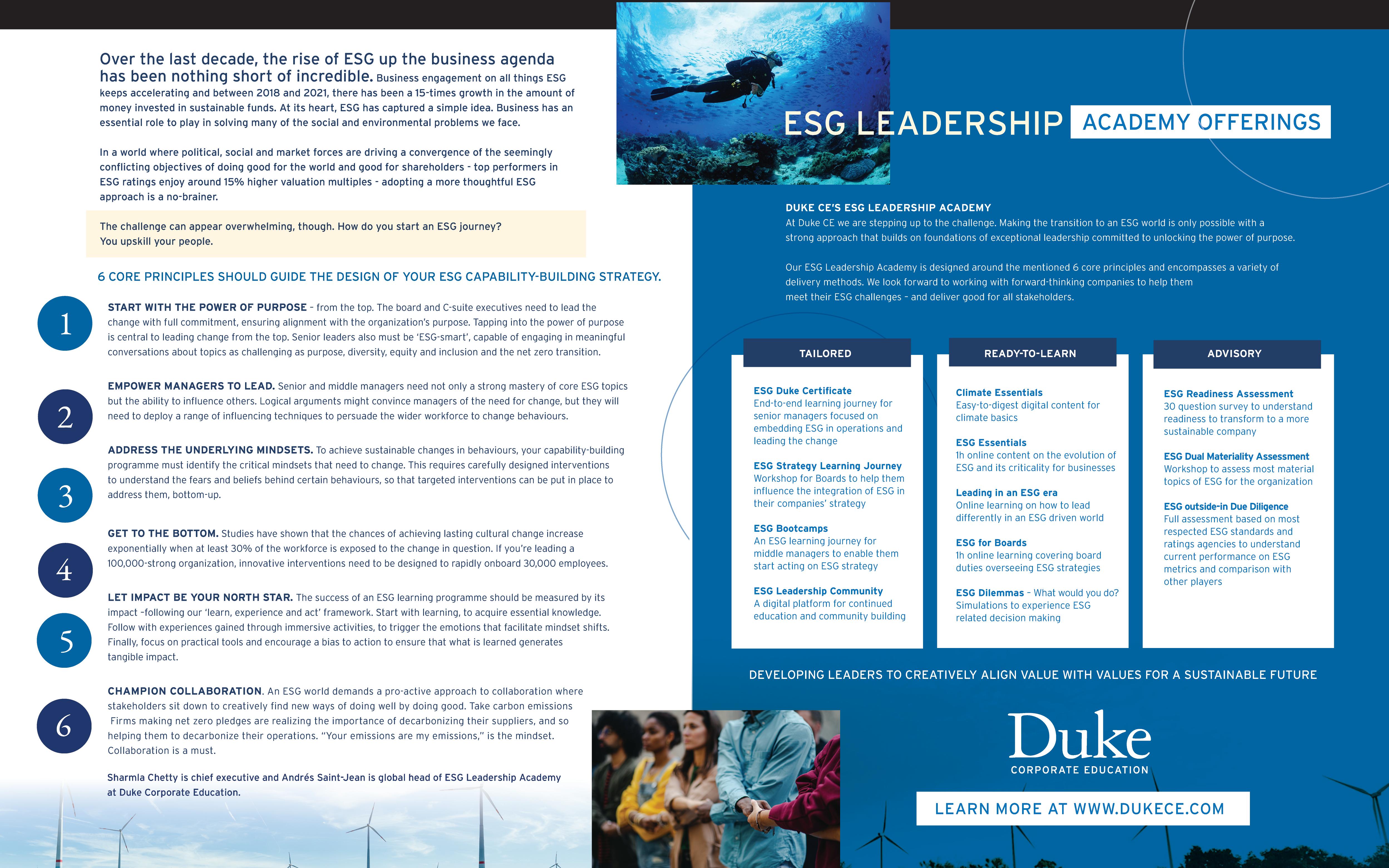

Technological revolution. Ecological crisis. Geopolitical shifts. In our changing world, many of the assumptions that have shaped leadership for decades can no longer be relied upon. But even as the old ways of doing things fade, leaders are still struggling to tune in to the signals that will reveal the future. What can we discern about the shape of what’s to come – and what will be needed to lead the future?
That’s the context for the Focus section in this issue of Dialogue. What are the overlapping crises that are reshaping the global business landscape? What are the key aspects of the leadership shift that’s underway? Why are critical analysis, persuasive influence and empathetic understanding so important? What is the role of professional development in helping individuals to upskill? And amid widespread expectations that this will prove to be the Asian Century, what can we learn from the accelerated tilt to the East?


markets in all corners of the Earth. Behind most of the challenges we face lie three fundamental challenges: relating to the environment, to technology, and to social division. Each is an immense challenge – but their confluence makes for an infinitely more complex and challenging prospect.
Leaders find themselves trapped between the old and the new. Overlapping global crises demand that we break free – and shape a better future
Writing Sharmla Chetty & Vishal Patel
The writing is on the wall. The signals of the future are unmistakable. But do leaders have the clarity of mind to heed them –and, more to the point, to act upon them?
We are confronted by the confluence of environmental, technological and social upheaval that is disrupting and rebuilding. This is the era of polycrisis. A new world demands new ways of working and new ways of leading. Yet time and again, we see leaders trapped by the constraints of systems and processes that were created to deal with a world that has disappeared. Those legacies constrain how leaders think about the challenges we face, and limit their options.
In our discussions with leaders working in organizations across all sectors, around the world, we encounter many smart, insightful, talented and purpose-driven executives who recognize the scale of the challenge. They are responding with innovative strategies for transforming their organization. They know that the leaders who will succeed in steering through an era of tumultuous change are those who hear and see the signals of our changing world – and find the creativity and courage to lead in new ways.
Three global crises
Survey the globe today, and it is impossible not to be struck by the scale of the challenges being faced by businesses and societies operating in varied
A new world demands new ways of working and leading
The environmental crisis The drive for netzero carbon emissions has transformative implications for today’s economies as we know them. For starters, it will drive business to phase out old ways of generating energy and old ways of manufacturing. Businesses are also deeply engaged with the related crises of biodiversity and other dimensions of sustainability (see Focus section, ‘The nature revolution’, Dialogue Q3 2024). How do we manage the net-zero transition and remodel our economies to ensure we operate within Earth’s planetary boundaries? And critically, how do we do so at the same time as achieving the economic growth that remains vital to huge parts of the world to provide a route out of poverty?
The technology crisis Enthusiasts may debate the ‘crisis’ label – but the unfolding technology revolution has the potential to be vastly disruptive, even while it holds out the prospect of incredible advances. The use of digital technology and generative AI is moving in leaps and bounds, propelled by the development of ever-more powerful models – and of course they are far from being the only technologies changing our world. Huge developments in robotics and biotechnologies are also underway, for instance, and could come to reshape our world dramatically in the coming years.
These challenges are linked: technology will help humanity escape its reliance on fossil fuels and manage the transition to a net zero economy. But more powerful technology uses more power. The computing systems of the future are not only hungry for electricity: they are thirsty for water, essential for cooling. Researchers from the Universities of California, Riverside, and Texas, Arlington, for example, have shown that GPT3 needs to “drink” a 500ml bottle of water for roughly every 10-50 responses. AI’s water usage could hit 6.6 billion m³ by 2027.
At the same time, climate change threatens to constrain water availability, compounding the crisis that already confronts vast numbers of people around the world. According to the United Nations Environment Programme, at least 50% of Earth’s population – 4 billion people – already experiences water shortages for at least one month of the year. It is a problem that is predicted to get much worse without urgent action.

The societal crisis Around the world, many nations face urgent social challenges. Some relate to the basics of life: to poverty, health and wellbeing. Progress has been made on the UN Sustainable Development Goals for 2030, but it remains uneven. What’s more, many societies are divided, unequal, uninclusive, and riven by collapsing trust and social cohesion.
Fake news is rife. Technology has been part of the cause, creating echo chambers that have driven polarization, and new threats continue to emerge, such as deepfakes, while our increasing reliance on technology increases our exposure to malicious activity and cyber attacks. Paradoxically, technology also holds the key to many solutions: technologies such as blockchain and distributed ledgers, for example, provide a robust method of verification that can help build confidence.
Even so, technological solutions alone are insufficient for managing the societal challenges we collectively face. Bill Boulding, the JB Fuqua professor of business administration and former dean of the Fuqua School of Business (and chairman of Duke Corporate Education) emphasizes the importance of rebuilding trust across society, following precipitous falls in the US and other major economies.
As professor Boulding highlights, leaders need to create clarity about their organizations’ values, lead consistently in line with those values, and continue delivering the work that delivers both business value and social impact, such as on DEI or environmental sustainability. Ding so can quietly defuse some of the contrived points of contention and division that have been stoked by various groups in recent years. (See his Dialogue interview, ‘Leading through division’, Q4 2023.)
Falling trust and weakening social cohesion are both a result of the other crises we face, and an influencing factor in how we collectively respond to those challenges. Already, there has been some backlash against carbon-cutting initiatives; more may follow. Concerns about AI’s impact have been limited – think of the Hollywood strikes – but could yet spark large-scale protest, particularly if some analysts’ predictions of job losses are perceived to be coming true.
Leaders are confounded by a signaling problem. We need a new model for interpreting the signals that will define the future
The impact on how we lead
These three vectors of change are having a transformative impact on the future of work and jobs. For many organizations, the last four years have been a period of unprecedented shifts and experimentation in how we work, especially as a result of the Covid-19 pandemic. Yet we are set to see more dramatic change in how we collectively work over the next 50 years than at any point since the industrial revolution that started to unfold in the second half of the 18th century.
What leaders need to bring to the table will shift dramatically. Problem-solving and critical thinking skills will need to be complemented by social and interpersonal skills, and the capability to engage communities. Already, the labor market is changing dramatically: smart employers are turning to skills-based hiring, recognizing that demonstrable capabilities trump paper qualifications. A degree is not the ticket to career success that it once was.
The traditional models of career paths are already collapsing. We are redefining the meaning of ‘working age’ as we collectively live longer (giving rise to huge economic challenges as we care for an older population). Already, it cannot be assumed that employees will rise up the organizational hierarchy and serve at their highest career level as the final point before retirement: instead, careers may include peaks and valleys over time, perhaps across different fields. As our familiar ways of working dissolve, a lifetime of learning and development becomes imperative. How will leaders adapt?
How we adapt to change starts with a physical response. We tend to think about this in terms of the fight-or-flight responses to threats, for example when we discussing change management strategies and how to successfully lead teams through change.
Yet there is another, less-discussed potential response to threats: to freeze. That characterizes the collective response to many of the vectors of change that are already reshaping the world around us. We are in a state of paralysis – blinded by the headlights, uncertain which way to leap,
The business landscape is being reshaped by overlapping crises. The drive for net-zero demands a reset of economic models to become sustainable within planetary boundaries. The rise of AI offers incredible opportunities – and potential threats. Many societies are riven by division and defined by mistrust.
Many organizations find themselves trapped between the requirements of existing models and the demands of a new world. Leaders must heed the signals of the emerging future and cultivate leadership based on curiosity, courage, a technology mindset, storytelling ability and adaptability.
and increasingly imperiled by our inability to act. To some extent that is because as leaders, we have obligations and responsibilities for managing the status quo: to deliver results in the here and now. We can’t abandon today’s business to focus solely on the future.
In essence, leaders are confounded by a signaling problem. In economics, signaling theory describes what happens when different parties have access to different sets of information. In our complex and changing world today, we repeatedly see the effects of different parties receiving different signals, reaching different conclusions about the state of the world and about what course of action is required.
Leaders are compelled to work on the basis of traditional signals about markets and consumer preferences, yet those are inadequate for dealing with the scale of the changes now affecting us. We need a new model for interpreting and responding to the signals that will define the future.
The leaders who succeed in shaping the future will combine a broad-based set of capabilities, that span cognitive ability, social and interpersonal skills, and deep community connections. Here are five of the standout requirements.
Curiosity The drive to know more about our changing world is crucial, along with the behaviors needed to learn, acquire knowledge, form connections and see unexpected patterns. An openness to learning allows us to find ideas and insight everywhere: not only in the classroom or in a formal development program (important though those are for truly transformational experiences), but also in the resources such as short videos that are readily available on our phones. With just a few taps we can find global experts discussing themes that are relevant to our work. Nurture curiosity, encourage exploration, and follow diverse threads to broaden, as well as deepen, our knowledge and capabilities.
Courage A critical element of the mindset to succeed in the future is the ability to take a leap and cross the chasm that exists between where we are today and where we need to be. It is the ability to overcome the risk aversion that is typically to the fore when the stakes are high and when we perceive threats on all sides. Courage requires an emotional disposition that tends to optimism about the future, despite all the
challenges we face. A better world is possible, if we are brave enough to build it.
Technology mindset Leaders need to invest in their understanding of technology and how it can be applied, to understand the upsides and how it can create value, as well as thinking critically about the risks and the ethical implications, seeing where humans need to stay in the loop. In particular, leaders need to reflect on how technology impacts on trust and on everyone in society, ensuring that technology is a force to support DEI and does not set it back by entrenching or amplifying biases.
Storytelling We may be confronted by global issues but leaders forget an important truth at their peril: change may be global but its effects happen at a personal level. We feel them as individuals, in how they affect our jobs, our families and our communities. The human is central to our vision of the future and leaders have to cultivate their ability to tell inspiring stories about their organizations, the journeys that they are taking, and the challenges they are overcoming as they strive to build the future. That requires a high degree of empathy, understanding audiences’ needs and finding ways to connect with them. Without the capability for empathy and storytelling, leaders will find it impossible to connect with employees, customers and their communities alike.
Adaptability The changes underway will demand supreme levels of adaptability from leaders: in their personal careers and how they meet the needs of their teams, in how they guide their organizations through a period of real turmoil and uncertainty. Leaders will have to adapt to new technologies and new business models, to new requirements to protect the environment, to the realities of a changing social context. They will be confronted by paradoxes to be reconciled, and tasked with navigating a path through the rockiest of terrain. Adaptability will be essential.
Leading for tomorrow
Sharmla Chetty is chief executive and Vishal Patel is president of global markets at Duke Corporate Education
The signals of our new world are clear for all to see. What organizations need are leaders with the courage and capability to act upon them. We are tasked with shaping a better future, together, to create sustainable value – and help our organizations and societies navigate the crises and challenges that confront humanity today.
collapsed. The Black Death pandemic wiped out up to 200 million people across Eurasia and North Africa in the 14th century; contemporary accounts described the devastation in apocalyptic terms, yet it was ultimately contained through the timeless practices of quarantine, sanitation, and building herd immunity. Humanity’s resilience persisted despite existential dread. We have endured a litany of industrial, political and social revolutions – from the Renaissance to the Age of Enlightenment to the digital era – each heralded as shattering the fabric of civilization.
In each phase, human adaptability has carried civilization through. It is why – as we battle with our own disorienting waves of change today and strive to lead our organizations through the uncertainty – we are well advised to refocus on evergreen leadership capabilities. A leadership approach built on the constants of reason, empathy and collective effort will help us shape positive transformations.
Humanity’s long track record of adapting to change suggests we would be wise to double down on developing evergreen leadership capabilities
Writing Andrés Saint-Jean
Let’s address the elephant in the room. In leadership circles, referring to our current era as “unprecedented times” has become quite possibly the most precedented thing of all. It has become a staple of business meetings around the world. Yet it is entirely misconceived.
Throughout human history, we have perceived upheaval as novel – yet we have adapted, using the same ancient skillsets that allowed Homo sapiens to rise from its humble beginnings. Our ancestors endured “unprecedented” turmoil after turmoil by repeatedly deploying the same ancestral cognitive toolkit.
Consider the sheer scale of the changes that lie in our past. Prehistoric climate shifts forced unplanned migrations. Empires rose, then
Throughout human history, we have perceived upheaval as novel – yet we have adapted, using the same ancient skillsets
The indispensable art of critical analysis Never has impartial reasoning been more vital than in our present data-saturated yet insightstarved landscape. As AI large language models churn out plausible-sounding content at unprecedented scales, the distinctly human ability to cut through misinformation and analyze root causes with rigor becomes utterly essential.
This discernment has been key throughout history when humanity has faced competing narratives and vested interests distorting the truth. From Galileo challenging medieval geocentrism, to medical pioneers overthrowing ancient dogmas, it is those with steely objectivity and willingness to question assumptions who propel breakthroughs.
For instance, when Volvo sensed public disquiet over vehicular emissions, it leveraged sophisticated analytics to develop electrification strategies, solidifying its market leadership in sustainable transport. This contrasts sharply with Unilever. Ironically, the firm, which actively championed sustainability under former chief executive Paul Polman, fell victim to a blunder after blindly extrapolating from data-mined consumer correlations, churning out eco-hostile inventory just as sustainability went mainstream. Sharper critical thinking could have foreseen this strategic calamity well beforehand.
We also saw in the 2008 financial crisis how investment banks deployed flawed risk models, shaped by incentives for short-term gains over diligent stewardship. More robust critical analysis may have illuminated the shaky foundations of credit derivatives and housing bubbles before catalyzing systemic collapse.
In the modern era, advanced critical faculties are particularly crucial as technological capabilities

race ahead of governance and human wisdom. Rigorous ethical thinking, combined with impartial logic, will be vital to steering innovations such as artificial general intelligence (AGI), gene editing and geo-engineering onto beneficial trajectories, rather than allowing dystopian derailments to unfold. Without keen human judgment, technological prowess alone becomes a runaway train.
The multiplying powers of influence
With every organizational decision now shaped by climate risks, those leaders who can build consensus and inspire progress on sustainable pathways will catalyze enduring impact and value creation. Yet rallying diverse stakeholders with
Without keen human judgment, technological prowess alone becomes a runaway train
competing motivations demands an exceptional human capacity for persuasion and vision-casting that algorithms cannot match.
Consider Iberdrola. For years, the Spanish energy giant’s bold pivot to renewable generation stalled amid boardroom disunity and public cynicism over its feasibility. But when Ignacio Galán arrived as chief executive, his influential alchemies gradually turned the tanker. With deft technical mastery and ethical clarity on sustainability’s imperatives, Galán crafted an inspiring narrative around innovation, new jobs, energy security and climate responsibility. By activating these intrinsic drivers within both internal and external stakeholders, he steadily built consensus where competitors floundered. Within
a few years, Iberdrola went from cautionary tale to global poster-child for profitable reinvention.
This talent has allowed iconic leaders throughout history to unite people behind lofty visions. From the Founding Fathers of the United States, rallying colonists to the struggle for independence, to social reformers like Martin Luther King Jr catalyzing the civil rights movement, the power to reshape mindsets through stirring rhetoric and moral courage has created tipping points. Even scientific revolutionaries like Copernicus and Darwin succeeded by championing new paradigms through patient persuasion over decades.
As technological capabilities exponentially increase, the ability to captivate human hearts and minds and shape positive shared agendas grows ever more precious. While narrow artificial intelligence can leverage vast data to optimize tactics, uniquely human storytelling and purposeful inspiration will remain irreplaceable for harmonizing civilizational strategies at a deeper level.
Without these connective skills, emerging innovations from gene editing to quantum computing risk being derailed by public backlash, interest group obstructionism or lack of social license. Profound influencing talents, integrating technical competence with emotional intelligence and the capacity to mobilize collective action, could ultimately mean the difference between thriving and faltering.
The enlightening gift of empathy
As multinational business operate amid rising ideological and cultural crosscurrents, those leaders able to intuitively grasp diverse mindsets and societal contexts will hold an increasingly formidable edge. Appreciating subtle differences in norms and moral framings allows companies to foster trust and partnerships where crude, blanket doctrines breed alienation.
This is a particular challenge for Western corporates reared on insular, transactional thinking. But organizations that cultivate empathetic leaders skilled at bridging divides will be unfettered by such myopia. Take DP World, the Emirati logistics megalith. When chairman Sultan Ahmed Bin Sulayem faced stalling infrastructure projects across South Asia, he leaned into his unique upbringing across Britain, India and the Gulf to reframe stakeholder relations. Engaging local communities and powerbrokers as partners rather than obstacles, he cut through tensions from a shared ethos of mutual understanding. Key developments rapidly advanced once DP World aligned priorities with regional contexts.
Even in advanced economies, empathetic attunement allows leaders to harmonize with
evolving social values. It is easy for businesses to find themselves out of sync – as we saw in recent years as customers began prioritizing sustainability and corporate responsibility. Many multinationals found that products and policies shaped by insular mindsets were becoming misaligned with the public conscience.
In contrast, Samsung under chairman Lee Jae-yong has largely avoided such stumbles. Lee combined pragmatic commercial instincts with the ability to sync with larger social currents, positioning Samsung as both an innovator and a responsible global citizen. Through diplomatic bridge-building with leaders like America’s President Biden and China’s President Xi, Lee has also deftly navigated geopolitical schisms that have paralyzed rivals.
Those leaders able to intuitively grasp diverse mindsets and societal contexts will hold an increasingly formidable edge
History has repeatedly illustrated the power of profound empathy as a strategic asset. Lincoln’s capacity to grasp perspectives across the Civil War’s divided ideological camps allowed him to heal national fractures. Franklin Roosevelt’s emotional intelligence attuned him to the plight of common Americans during the Great Depression, catalyzing the political will for his transformative New Deal policies. And in realms scarred by human conflict, enlightened empathy has been crucial for transcending cycles of violence and vengeance. From the Truth and Reconciliation efforts ending Apartheid in South Africa, to peacebuilding in Northern Ireland, those able to intuit outgroups’ grievances created the foundations for breakthroughs. In an age of multiplying fault lines and zero-sum narratives, such talents are indispensable.
Those bereft of critical thinking, inspirational influence, and empathetic collaboration are continuously at risk of strategic incoherence and value destruction. Ethical lapses, toxic cultures, and catastrophic missed opportunities become inevitable.
Lest we forget, even the most brilliant visionaries are prone to self-destruction without the moral anchoring that comes from social intelligence. At the turn of this century, it was Jeffrey Skilling at Enron (leading to a 24-year jail sentence). Rajat Gupta, having led arguably the most prestigious consulting firm and investment bank (McKinsey and Goldman Sachs), spent two years in prison for insider trading.
More recently we have seen the spectacular flameout of Sam Bankman-Fried and his FTX crypto empire, exemplifying how individual coding brilliance and moral detachment can result in monumental ruin. Despite creating a $32 billion company by age 30, Bankman-Fried’s leadership –

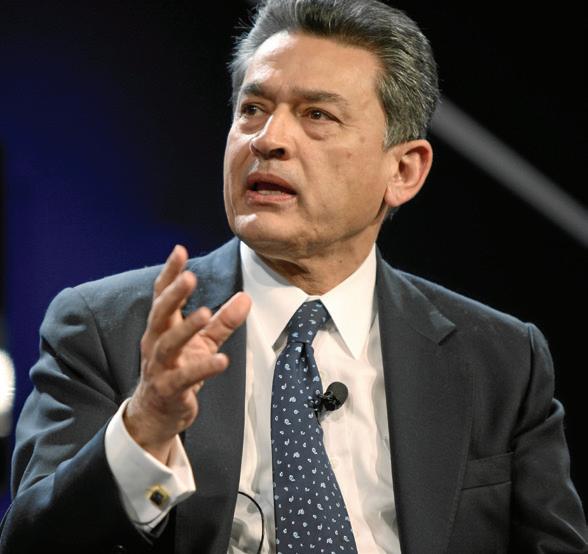

marked by alleged fraud, conflicts of interest, and a lack of empathy for customer and investor wellbeing – triggered FTX’s overnight bankruptcy and federal investigations. His singular focus on multiplying personal wealth evinced a steep deficit in the human skills required to build an enterprise of enduring value.
These stories are echoed in the downfall of other once-promising ventures. Theranos founder Elizabeth Holmes was a gifted storyteller who inspirationally promoted a blood-testing technology with revolutionary potential, yet disregard for rigorous critical analysis of her product ultimately led to the collapse of Theranos and her imprisonment.
WeWork’s meteoric rise and fall is a testament to the perils of hubristic leadership devoid of grounded business practices. Adam Neumann, its charismatic founder, pushed WeWork’s valuation to astronomical heights with a vision of transforming office spaces. However, erratic behavior, questionable financial practices, and detachment from the company’s operational realities led to a dramatic implosion, costing investors billions.
Such stories of flawed innovators ultimately underscore the same lesson. The decisive competitive asset is our uniquely human capacity for integrating disparate insights into cohesive visions and ethical actions. Our power to reason abstractly, shape narratives and cooperate towards uplifting goals, is what birthed all paradigm shifts. While contexts and tools continuously evolve, the core human capabilities that enable virtuous
transformations through volatility remain anchors. From village elders to modern CEOs, the abiding art is channeling conceptual thinking, influence and emotional intelligence toward coalitionbuilding and progress.
Call them renaissance souls or polymaths –leaders who integrate technical expertise with cultural empathy, analytical skills with resonant storytelling, and moral clarity with pragmatic coalition-building, wield the full adaptive repertoire for thriving through any upheaval –while inspiring diverse others towards wiser paths.
Develop these talents – within yourself and among the executives across your business – and you cultivate the precious few who can steer organizations towards maximizing human potential, not just weathering volatility, but bending the arc towards collective flourishing. Even our potential AI successors will require such skills to acquire ethical wisdom and cohesive purpose.
While each era monumentally resculpts industry terrain, intrinsically human factors like reasoned judgment, inspirational vision, and generous perspectives remain the sole constant for pioneering positive progress. In unprecedented times and familiar ones alike, these remain the skills to invest in, above all.
Expect the unexpected
The notion that we live in unprecedented times is paradoxically one of the most precedented aspects of our shared history. Borrowing from Dan Ariely’s classic book, Predictably Irrational, I call our world ‘predictably unprecedented.’ Our ancestors weathered the storms of change using their innate abilities to think critically, influence others and empathize deeply. These same skills are indispensable in our current era, where technology, climate change and geopolitical shifts create a complex and ever-changing landscape.
Leaders who can navigate this terrain with wisdom and integrity, drawing on the timeless human qualities of critical analysis, persuasive influence and empathetic understanding, will not only survive but thrive. They will build bridges, inspire collective action, and create lasting value in a world that often feels chaotic and uncertain.
Andrés Saint-Jean is the global head of digital, sustainability and partnerships, and regional managing director for Africa, at Duke CE
Investing in these human talents is not just a strategy for weathering the storm; it is the key to shaping a future where humanity can flourish. As we move forward, let us remember that while the challenges we face may be new, the capabilities we need to overcome them are as old as humanity itself.
By honing these skills and nurturing them in ourselves and our leaders, we can navigate even the most “unprecedented” times with confidence and grace.
promotion, whether inside or outside the firm. Organizations must align individual work with the larger organizational strategy, while individuals must adjust to new demands and skills needed to execute that strategy. Organizations must create value through cycles of innovation, while individuals must remain continually relevant, interested, curious and inspired.
Writing Richard Freishtat
As organizations seek to recruit and retain the best talent in a hyper-competitive marketplace, and as individuals seek to position themselves for their next role, professional development has emerged more prominently than ever as a value creation strategy.
Within that strategy, a clear line can be drawn from overall organizational goals to an individual’s professional development goals. The cross-cutting mantra is: “Disrupt or be disrupted.” For individuals and businesses alike, the status quo is not good enough, and innovation drives success. Professional development targeting individuals, which facilitates acquiring or honing new skills, can address individual disruption and innovation needs, while at the same time serving organizational aims. This creates a mutually beneficial relationship between individuals and organizations where professional development inextricably links the two together (see graphic p26).
The framework unlocks potential at multiple levels and in multiple ways, where the organization and the individual support one another through professional development. Organizations must recruit and retain top talent, while individuals must position themselves for advancement and
In many ways, the duality that can exist between organization and individual is addressed via the alignment found through professional development. To illustrate this point and see the framework in action, let’s look at a couple of examples.
An executive leader in healthcare consulting for over 20 years, Sonya was working as the strategic lead for interactive analytics and communications within a mid-size firm. Primarily an economist and researcher, she was gifted at leading a consulting service, providing interactive and innovative tools to disseminate complex scientific information to diverse audiences. However, she suddenly found her job shifting rapidly because of her company being acquired – meaning a new direction and responsibilities for her work. Sonya knew that what she had known would no longer be enough.
Seeing change unfold motivated Sonya to go outside of her new organization to seek formal education. She recognized that she had no way of assessing some of the changes under way in the organization: “Is this good, bad, or how other companies do it?” Ultimately, she decided to pursue a non-degree certificate in leadership and management, grounding her experience via access to best principles and new, cutting-edge insights to fill gaps in her knowledge, address her needs, and position herself for further success.
The programs Sonya chose as part of that certificate were helpful in explaining what she had been seeing daily. They gave her the vocabulary to really understand the changes under way, and to adjust course if necessary. She also benefited from building a network of peers outside her firm, sharing leadership plans and journeys. This gave her a better sense of her strengths and weaknesses relative to other executives from other functions and industries. Thanks, in part, to her intentional professional development journey, Sonya was soon promoted to the role of vice president, health economics and outcomes research. She is now even more focused on using her newly acquired knowledge and skills to determine what may be her next big career ambition and challenge.
There are countless stories like this one, and the lessons for the individual ring true across them all.

The organization’s success unlocked
When the Covid-19 pandemic hit, Shane was leading a team within the healthcare division of a global manufacturing company that builds medical devices for their customers. He and his team found themselves facing a spike in demand for the company’s medical products, while trying to navigate supply-chain disruptions, logistics that were at a breaking point, and employee shortages affecting their plants globally. “The challenge in front of us was daunting, but the desire to ensure our customers were able to help their patients was our rallying call to make it happen,” Shane recalls. While the company faced uncontrollable external factors impacting global production, the power of effective leadership was something that they could leverage. By adopting a tone of communication that resonated, demonstrating agility in action, and embracing creative problemsolving, they could effectively tackle the company's challenges. Fortunately for the business, Shane had recently completed an external leadership program. It equipped him with the precise skills required to lead decisively during crises – a strategic investment that paid off for the company, and for Shane.
One of his team’s biggest tasks was to increase their production of ventilators from 50 per month to 5,000 per month. It was not an easy ask at a time when resources were stretched to the limit and the global manufacturing environment was nearly at a standstill. As Shane led his team through unprecedented hurdles, he applied insights from his professional development experience, guiding his team through a maelstrom of obstacles. His leadership was not merely theoretical: he put
key principles into practice, fostering improved communication and empowerment among his team members.
In the end, says Shane, he and his team were successful in meeting the increased demands. “This was accomplished, in part, with key takeaways from the leadership program,” he reflects. Moreover, he has now twice been promoted into more senior positions at the company. His professional development experience proved instrumental in navigating the organizational challenges posed by the pandemic, meeting the increased demands of team leadership organizationally, and advancing his own career.
Shane’s story illustrates how successful and sustainable organizations are partly defined by their people continuously growing and improving. It is imperative for any organization, through its people, to always be learning so as to always be ready for whatever comes next. The strong benefits of individual professional development and its ROI for the organization make it worthy of resourcing. Ultimately, the organization grows its ability to create value for all stakeholders through individuals’ pursuit of professional development.
Guiding practices and action planning
The individual and the organization reciprocally benefit from unlocking leaders’ potential. What are the steps needed for each to maximize the benefit of professional development?
For individuals
For individual leaders, here are five essential steps to accelerate career progression and further impact organizational success.
1 Identify your gaps and urgent needs What knowledge, skills, and/or capabilities are urgent for you to develop? This could include a focus on your current role or the role to which you aspire and for which you want to be positioned. If you are not sure about your needs, do your own 360 (even if informal). Talk to colleagues, to executives who you work with and report to, and to your team or those you manage.
2 Talk to others who have pursued professional development and learn from their experience How did they choose what to do? How did they ensure value and ROI from the experience? What did they bring back to their work? How did they use it to help advance their career?
3 Check whether your organization supports professional development Many firms provide funding for leadership development.
If they do, take advantage of it. If they don’t, make a case to your supervisor about how supporting your professional development will generate a positive return for the team and organization. Everyone must view it as an investment and understand how that investment could generate profound value in return.
4
Engage in a professional development opportunity
Identify programs that could address your gaps and needs; identify the time needed, and when would be the optimal time to engage. Then jump right into the experience. Enjoy the process of ‘going back to school’ in a context that is geared toward professionals like you and is equipped to meet your needs.
5
Assess the experience: measure success Take learnings back to work and apply them immediately. Impactful learning does not happen in a vacuum. What did you learn? What can you apply immediately to do your job better? How did this enhance your skillset, your resumé, and your positioning for new and greater opportunities? How does it add to your professional career narrative? How can you demonstrate ROI from the learnings? ROI matters, so be ready to tell your ROI story to various stakeholders.
For organizations
Here are five things that organizations can do to accelerate individual development aligned with organization goals.
1 Support individual professional development
Make time and space for people to prioritize learning. Provide resourcing and funding to enable people to undertake development.
2 Build it into the performance management process Tie individual professional development to individual KPIs that clearly roll up to team and organizational KPIs and overarching strategic goals.
3
Share success stories Find ways, both informally and formally, to highlight the impact of individuals who have leveraged professional development in their current roles for the betterment of the firm. Motivate, inspire and acknowledge the individual work, while calling out how it drives organizational success.
4 Reward progress Highlight how individuals have advanced through the organization and how their engagement in professional development served as an accelerant.
Organizations and individuals alike are confronted by major disruptive threats, and a clear line can be drawn between organizational goals and individuals’ professional development goals. For individuals and businesses alike, the status quo is not good enough, and innovation drives success. The mantra is: “Disrupt or be disrupted.”
As Peter Senge pointed out, organizations only learn through individuals who learn. Individuals should drive their learning by assessing their needs, jumping into development experiences, and demonstrating ROI through the impact on their work. Organizations should redouble their commitment to professional development, build it into performance management processes, and share success stories.
It is a mistake to cut professional development funding during economic downturns
5
Be consistent and strategic with the investment in individual professional development During economic downturns, one of the first things to be cut is professional development funding. That is a mistake. We know that the firms that come out of an economic downturn most quickly and can spring forward to achieve new levels of success are those that invest in innovation during the downturn itself. Again, it’s about what is urgent, and that will shift due to various factors. Organizational priorities may necessarily be relatively fluid, but aligning individual professional development with those shifting priorities will perpetually deliver strong returns on the investment for the individual and the organization alike.
How organizations learn
Organizations that survive and thrive all have a common trait: they are all, at their essence, learning organizations. These organizations are adaptable, agile and growth oriented. They attract smart, ambitious people who are skilled at creating, acquiring and transferring knowledge.
Richard Freishtat is associate dean, executive education, at Duke University’s Fuqua School of Business
In his groundbreaking book, The Fifth Discipline: The Art and Practice of the Learning Organization, renowned expert Peter Senge noted: “Organizations learn only through individuals who learn. Individual learning does not guarantee organizational learning. But without it, no organizational learning occurs.” Senge’s words were published in 1990. Yet they express a deep truth that is as relevant as ever today – and for developing the capabilities that individuals and organizations need to thrive tomorrow.

conflicts, it creates a compelling mix of impacts for global leaders in politics and business. The growing strength of Asia heralds a more multipolar world, where leaders will have to manage complex balances of power and where previous truisms, such as the onward march of liberal globalization, may no longer hold true. The transition is not likely to be simple: with global multipolarity has come more frequent challenges to sovereignty and power imbalances, creating risk and the return of the threat of war to the Middle and Far East.
Global executives from Western countries, now more than ever, need to understand the growing and fast-evolving Asian markets. Asia is emerging as an integrated and cooperative region, rivaling the states and institutions of the West – and for the first time in modernity, the West is considering whether there is something to learn from the communitarian optimization so prominent in Asian decision-making.
The Asian Century is upon us. It will change – possibly even transform – what’s next in the practice of global leadership.
We have entered the Asian Century. A global political and economic shift of historic proportions is under way – and it opens the door to a far-reaching rethink of core leadership ideas
Writing Beth Ahlering & Dennis Foo
Much has been written about the Asian Century. For many years now, analysts and commentators have peered into the future and seen Asian countries playing an increasingly dominant role in both the political and economic spheres. It is set to be one of the defining historical shifts of the 21st century – yet while it was widely foreseen, few have anticipated quite how quickly this shift would take place.
The first quarter of the century is not quite complete, yet we are already seeing a substantial reshuffling of the economic world order. Coupled with emergent and more potent geopolitical
Asia appears to be progressing and thriving where Western countries are faltering
For a sense of how far and how fast Asia’s influence has grown, consider a range of data. The Asian continent, from the Middle to the Far East, is now the world’s largest economy measured in GDP, on the back of superlative economic growth in China, India and South Korea in particular – but indeed across Southeast Asia and the Middle East. The IMF calculates Asia-Pacific and the Middle East’s GDP at $42 trillion, while Europe clocks in at $26 trillion. India and Southeast Asia are expected to be the world’s 3rd and 4th largest economies by 2030.
Asia’s share of global trade and patents are rising too, and of the world’s 500 biggest companies by revenue, 210 are Asian. Asian corporations contributed approximately $19 trillion to the global economy in 2020, according to McKinsey, propelled by some of the most iconic brands in global business – think of Toyota, Samsung, Alibaba and Saudi Aramco. In June 2024, Fortune launched its newest and latest ranking initiative, the Fortune Southeast Asia 500. This is genuinely remarkable, given that this establishment has only occasionally adjusted its methodology in the past 70 years to account for major economic shifts.
But more than this, Asia appears to be progressing and thriving where Western countries are faltering. Many Asian countries have made tremendous strides in creating trust in businesses, governments and the media, as indicated by consistent and continued rises on the World Bank governance indicators for government effectiveness, Economist Intelligence Unit inclusiveness indicators, and the Edelman Trust Barometer study.
Over the last decade, the Trust Barometer has highlighted that public trust has declined significantly in companies headquartered in traditional Western economic and industrial powerhouses, like the United States (where trust was down 9 points to 53% in the latest report) and Germany (down 9 points to 62%), to take just two examples. In stark contrast, countries in the Asian continent have witnessed the reverse. Incredibly, businesses, governments, NGOs and the media in Southeast Asian countries – including the likes of Singapore, Indonesia, Malaysia, Thailand, the Philippines and Vietnam – have increased public trust (up 14 points to 54%), even in the face of 21st-century adversities and global challenges such as cybercrime, climate change, financial fraud, inflation, supply chain risks and digital disruption.
The tilt toward Asia has multiple implications for global leadership. In our conversations with leaders operating across the region and globally, we see four particularly important changes.
First, it creates a need in many traditionally ‘Western’ multinationals for leaders who understand Asian markets. One example of this is Western pharmaceutical companies sending their senior clinical and commercial staff on market immersion learning programs, helping them to understand market demands, trends, ecosystem partnerships and regulatory environments in Asian countries. The focus of future strategic business is targeted towards the world’s largest growth markets and leadership development follows suit. Market immersions now take place in Singapore, Bangalore and Riyadh, rather than only in Silicon Valley.
Second, we are at an inflection point in the dominance of traditional industrial leadership styles. Technological disruption and geopolitical shifts are creating more cultural fault lines. In Asia, we are seeing a near-universal intentional reduction in imported talent, and a newfound confidence in and reliance on home-grown leadership talent. For example, many of our Middle and Far East clients are very deliberate, in their corporate university programs, about contributing to national capability goals and developing the next generation of national leadership talent. Similarly, Asian firms’ talent processes are increasingly set up to prioritize searches in their local markets when recruiting key executive leaders. As one captainof-industry client shared recently, “We are in an ‘Asia-first’ moment where we are looking less and less at large globalized leadership development in a Western model, and more at regional leadership for the increasingly regionalized market we serve.”

Above
of the world's most successful intentionally designed circular economies
In Asia, we are seeing a near-universal intentional reduction in imported talent, and a newfound reliance on homegrown leadership
Third, while culturally different leadership styles have always been appreciated, there is a new sense that the communitarian optimization style typical in Asia may have wide applicability in a more multipolar world. Where can Asia lead us with a leadership style that is more attuned to the ecosystemic, multi-nodal world we now inhabit? Traditional models of leadership that rely heavily on unilateral interests and dominance are being challenged, and there is more openness to stakeholder-engaged styles that rely on finding careful equilibrium and optimizing respective interests. It may be a leadership style to which Asian leaders and cultures are uniquely attuned. An example is seen in the comments of the new Prime Minister of Singapore, Lawrence Wong, in his interview with The Economist in May 2024, where he argued that Singapore can only optimize its national interest by managing a careful balance of optimal partner interests across its regional ecosystem.
Finally, we believe that when it comes to leading for environment, social and governance benefits (ESG), Asia has a unique contribution to make. Some of the world’s most ambitious sustainable giga-projects, next-generation infrastructure innovation, and inclusive leadership initiatives are being led by Middle Eastern and East or Southeast Asian countries. Singapore is one of the world’s most successful intentionally designed circular economies. Neom is Saudi Arabia’s novel giga-project to create a wholly sustainable city built on new and futuristic notions of embedded net zero design. A more holistic focus on social impact in many Asian firms lends itself to a natural focus on ESG. It is also true that Asia accounts for the majority of global carbon emissions: transition in Asian factories, materials, energy choices and supply chains will determine the future of climate change. There is evidence that ESG standards are gaining hold, if not harmonizing globally; the role that Asia plays in innovating towards a carbon neutral future will be absolutely essential to the world’s prospects of halting climate change.
Thriving in the Asian Century
So, how can you prepare your organization and leaders for the new world order we are entering? There are four key strategies to consider.
1
Include the Asian Century in leadership development All global leaders must understand how drastically the macroeconomic and geopolitical environment has shifted, and what it means for them and their organizations. This needs to be as much philosophical as it is practical. We must move away from the nineties and noughties business school curriculum that reflected a time when globalization reigned supreme and trade barriers were being lifted around the world. Executives now need to be prepared for much more regionalized markets where regulation and trade barriers are re-emerging, but local and regional market opportunities are greater. More immersive experiences in Asian markets are essential for executives in nearly all global industries and companies; leadership and organizational development efforts should be targeted accordingly.
2
Seize the opportunity created by government investments in home-grown talent Due to the legacy of the developmental state in many parts of Asia, this trend – which is seen from the Middle East to Southeast Asia – represents a welcome opportunity for organizations to work with governments to develop the next generation of country-level executive leaders in business and politics. The foresight of Asian governments is unique in planning for the ‘100-year career.’ Their investments in lifelong learning represent a significant opportunity to leverage local talent in global planning. Moreover, new regulations and collaborations are likely to require companies to go beyond the importedtalent approach of the past. This is an opportunity to increase diversity and leverage a ‘glocal’ approach for all organizations seeking access and influence in Asia.
3 Adapt to a changing world We are entering a multi-polar, ecosystem-driven, digital-first world – which means that leadership ideas that emphasize optimizing the interests of multiple stakeholders may well gain prominence. The stability that this style has brought to Asia could benefit the world in the coming century. More emphasis will need to be placed on building classic negotiation skills in pursuit of a balanced equilibrium, rather than unilateral or binary approaches. And as more and more large legacy organizations seek ecosystemic partnerships to foster innovation, leading in a complex network
From the Middle East to the Far East, Asia is emerging as an increasingly dominant political and economic force. The rise of Asia could be the defining historical shift of the 21st century. It heralds a more multi-polar world where leaders will have to manage complex relationships and where old assumptions no longer hold true.
For Western-based global organizations, there is much to learn from Asian modes of leadership. Understanding the Asian Century should become a staple of leadership development programs. In today’s ecosystemic world, the prioritization of cooperation, collaboration and complex equilibria that define Asian approaches could be central to the leaders’ toolkit of the future.
The foresight of Asian governments is unique in planning for the 100-year career
of relationships will become the norm. Arguably, Asian conglomerates and consensual leadership styles have much to teach the world about succeeding in this type of structural environment.
4
Culturally contextualize leadership for ESG ESG reporting norms are evolving regionally – and some of the world’s most promising ESG innovations are Asia-led. But much remains to be done to embed ESG in a more Asia-centric way. ESG approaches on the Asian continent will need to appreciate cultural norms, and leaders will know how to leverage ESG progress, such as by adopting a holistic orientation. Additionally, Asia represents an incredibly wide range of countries and cultures, and there is much to be gained from a regionally integrated approach, which Asia has achieved on many other important initiatives.
Dr Beth Ahlering is regional managing director, and Dennis Foo is managing director, for Duke Corporate Education Asia and the Middle East
The Asian Century represents a unique opportunity for those organizations and leaders who are prepared to understand, learn and leverage from the continent that has brought us many advances in science, trade, communication and growth since antiquity. We face a less certain, more complex balance of power, which will determine the fate of governments and businesses for the next 50 years and more – yet we should seek to learn from an environment in which Asia has proven we can not only survive, but thrive. The communitarian values of cooperation, collaboration and complex equilibrium could redefine leaders’ toolkits for the 21st century.



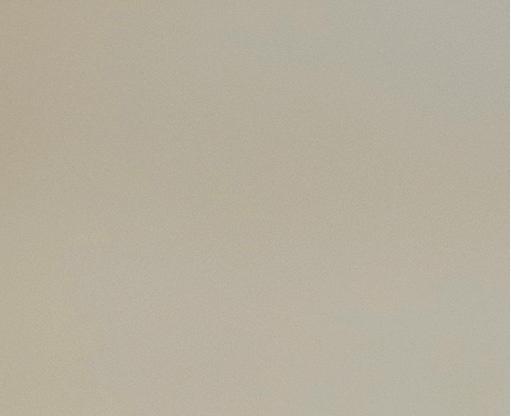
Dialogue. “I asked my dad whether I could come to work with him. He knew working in a factory wouldn’t fit me, but allowed me to do it anyway.” He credits his father with deliberately teaching his son through exposure.
As it turns out, his schooldays mentor was right: teaching was a stepping stone to bringing the human touch to the corporate world. “My idea was to go to work in the private sector, get the experience, then come back to teaching because I would have richer experiences to be able to share with the students,” says Fraccaro. “But when I got my job working in a technology company that focused on financial services, I loved it. It opened my eyes to the whole world of HR. And I never went back. Every day, I am learning something new, and that invigorates me.”
Evolving culture for growth
Mastercard’s Michael Fraccaro puts people at the center of business strategy
Writing Ben Walker
It is never too late for a life lesson, even when you are a schoolteacher. Michael Fraccaro was teaching at a Sydney high school when one of his senior colleagues asked whether he had ever considered an alternative to education.
“I could have taken her question in one of two ways!” he jokes. “One was that I was a pretty lousy teacher and I should try something different. But it was really that she saw someone with potential, and that teaching could be a ladder elsewhere. She was a true mentor to me.”
Fraccaro, now chief people officer at Mastercard, almost missed that ladder at an early age. “Like many young boys, I dreamed of following in my father’s footsteps,” Fraccaro tells
For Fraccaro, teaching was a stepping stone to bringing the human touch to the corporate world
All too many corporations trumpet bold and grand ideals, but lack the processes and functions to make them a reality. The opposite is true at Mastercard. Under Fraccaro’s leadership, culture takes centerstage at every level – from the board to its interns – with a focus on instilling the behaviors needed to drive the business into the future and to attract and retain talent. Things like innovating with intention, bringing in different perspectives, learning and pivoting are to the fore, all anchored by a commitment to doing the right thing and being decent. These behaviors, known as The Mastercard Way, are embedded into the business via an ingenious mechanism that evaluates everyone on their ability to bring the behaviors to their work.
“This wasn’t a revolution, it was an evolution,” says Fraccaro. “We had a strong foundation –things core to our culture that we didn’t want to lose, like decency, doing the right thing, and being innovative.” Half of employees’ reward and compensation is connected to their business achievements. The other half is based on their demonstration of The Mastercard Way: how they show up, how they interact with people, and how they drive business outcomes with their behaviors. It is a model based on an equal fusion of business and behavior. “So part of a person’s year-end reward is based on their ‘What’ – what they have achieved, their financial targets, their objectives,” explains Fraccaro. “And the other on their ‘How’ –their behaviors.”
The system is remarkable, not least due to the sheer scale of the company. Mastercard has 34,000 employees in nearly 100 countries. “We have multisource feedback, so every one of the 34,000 employees gets feedback from their colleagues and coworkers about how they’re showing up on these behaviors,” reveals Fraccaro. “And that’s fed back to them. This includes the CEO.”
I put it to Fraccaro that few corporates ever transcend the good intentions stage. They talk sincerely enough about the right behaviors, yet most remain unable to quantify it, still less reward it. “That’s why we’ve scaled this, because otherwise it just becomes words on a page,” says Fraccaro. “We’ve taken the steps to embed it in our performance management, leadership development programs, recruitment – you name it. It is fundamental to our whole way of working.”
Leadership development
Fraccaro has also been instrumental in launching the Mastercard Leader Profile – a set of attributes that all senior leaders at the organization use as their guiding light for growing and developing. He was a key player in Mastercard’s successful CEO transition from Ajay Banga (now President of the World Bank) to Michael Miebach, building succession planning into the fabric of the talent system – not as a singular event, but as an ongoing discipline. The learning and development team has revamped the company’s entire executive curriculum to align to the Leader Profile, bringing it to life in learning and in practice.
“That signaling and role modeling from the top is extremely powerful,” says Fraccaro. “Shaping leaders that can drive business outcomes while building high-performing teams – all while being measured and held accountable for their actions.”
With the fundamentals in place – development of the Leader Profile, refinement of The Mastercard Way, and other key internal initiatives – the stage
Under Fraccaro’s leadership, culture takes center-stage at every level – from the board to its interns
was set to dive deeper into executive development. Data and insights showed the need to develop individual leaders in specific areas of capability (think: strategy, innovation, change leadership and talent development) and the need to accelerate deeper levels of cultural transformation (think: bold vision, speed, candor and personal accountability).
“Our leaders are the key in driving our vision and strategy at scale,” he says. “We invited a select cohort to a four-day immersive leadership development experience, supplemented by pre- and post- supports and connections. Feedback from the program has been extremely positive. I spoke with one of the participants who told me the ‘we’ perspective and the ‘me’ perspective really hit home for them. They felt like that was a big opportunity. They left the program with a huge amount of optimism – for themselves and our organization.
“And beyond this smaller cohort, our executive learning track and people leader development opportunities have expanded, providing our current and future leaders more opportunities to hone their skills and capabilities.”
Data as a driver
Accountability for actions seems an affirmation of sorts to Fraccaro. “We’re a technology company, driven by data and insights,” he says. “We put KPIs and benchmarks against our products and services – so how could we do the same with our culture?”
Fraccaro, alongside his HR colleagues, developed a Culture Health Index that measures culture against
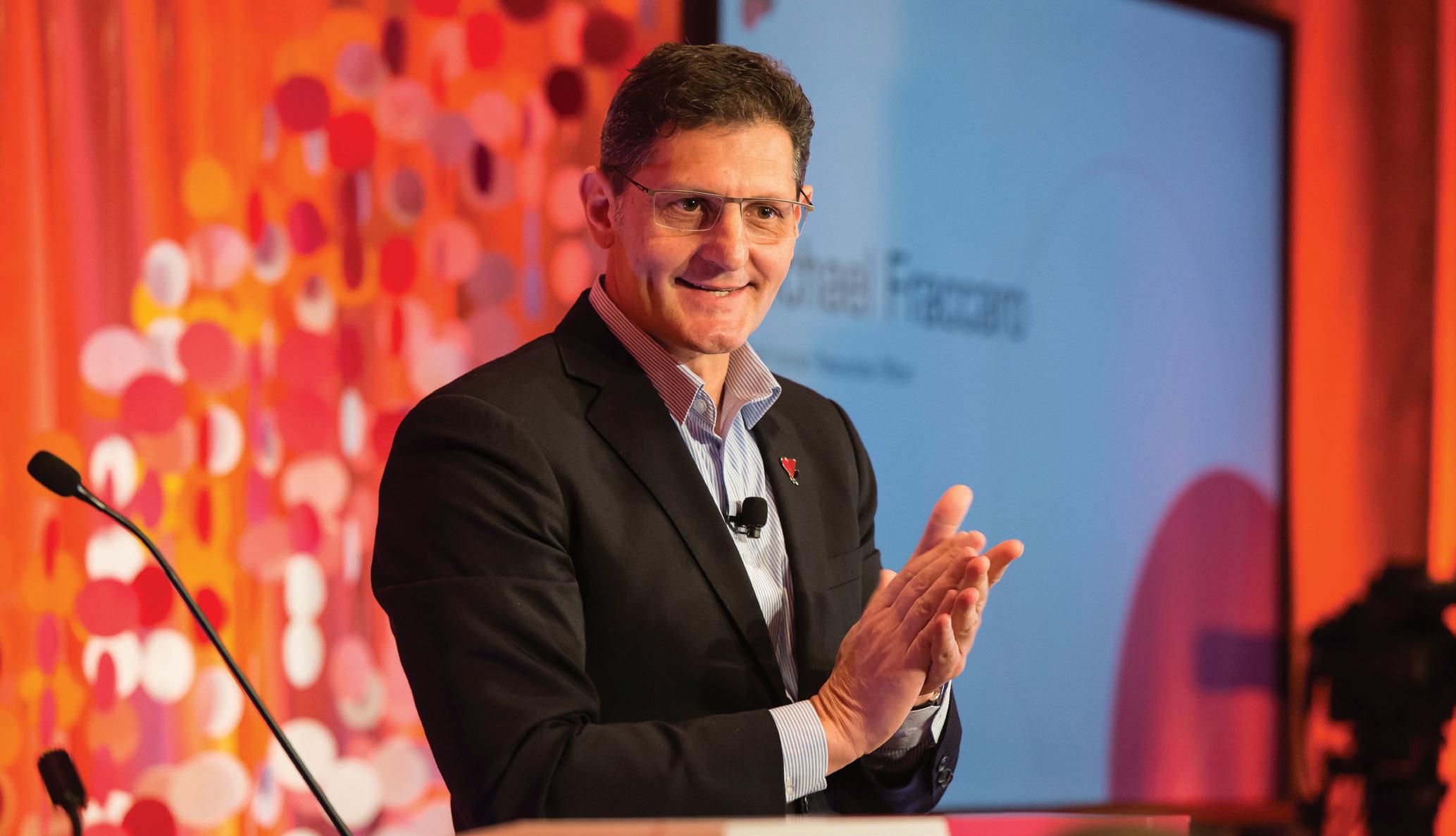

internal goals and external benchmarks – putting measurements of health and progress across indices like innovation, inclusion and leadership.
Feeding into this Culture Health Index is a slew of employee insights. “One of our key behaviors is to learn and pivot,” he says. “To be more agile and act on our employee feedback at speed, we evolved our listening strategy.” Fraccaro and team now offer multiple pulse surveys – short surveys centered on specific topics aligned to the employee experience –alongside a larger employee experience survey every two years. Insights are anonymous, encouraging employees to lean into another key behavior to say what they mean. “We encourage people to be honest – their candid feedback tells us what is working well and where we need to do better.”
Fraccaro is a global leader at a global giant in a globalized world. Yet the world sleeps restlessly. The concept of polycrisis – the confluence of crises: socioeconomic, climatic and geopolitical – defines our times. But Fraccaro believes the approach
at Mastercard, the focus on relationships and relatability, can show how business can become a trusted agent of change. “There is so much conflict, disagreement, so much tension in the world,” he says. “But on all those issues, people want to work with a company that has a soul. I could give you a ton of examples where we’ve gone above and beyond on helping individuals in times of crisis, or helping companies or partners during difficult times, or if there is a natural crisis somewhere, how we’ve helped evacuate people or lent our support to various support organizations.”
And beyond the crises marked by moments of tragedy, Fraccaro has stood up programs and initiatives to support employees with issues big or small. “I’m incredibly proud of the work our team has done to launch our Mental Health Champions network, bringing mental health and wellbeing resources directly to employees.” Fraccaro’s team, led by its medical director, has trained over 150 employees globally with hundreds more waiting in the wings for the next rounds of training cohorts; not tasked with solving employee mental health concerns, but rather trained as first responders, able to notice signs of mental health crises and direct employees to the resources and support available to them. Fraccaro and his team have also introduced a range of flexible work programs, such as four weeks’ work-from-elsewhere and meeting-free days.
“The word culture gets thrown around a lot, but for me and this organization, culture is such a critical aspect of who we are,” says Fraccaro. “It is our reason for being. How we deliver our results and our targets, how we innovate, all come back down to the kind of environment that we create for success. If culture is eroded in any way, it can be a detriment, a liability. When we look at our customer surveys, one of the reasons why our customers partner with Mastercard is because of this relationship-based culture that we have.”
And culture continues to steer Fraccaro’s path forward. GenAI, multi-generational workforces, security and privacy continue to dominate the headlines – but that doesn’t keep him up at night. “We’ve embraced AI; told our employees to go test and learn within the guardrails of our data-privacy principles and AI governance.” No matter the topic, these Mastercard Way behaviors underpin the expected actions – future-proofing Mastercard for the next technology disruption, global crisis, customer needs, and the everyday moments in between.
The late, great professor Peter Drucker famously said that “culture eats strategy for breakfast”. Fraccaro’s approach at Mastercard is the modern incarnation of that mantra.

Michael Fraccaro
2016
Chief people officer Mastercard
2009
Head of learning, talent and organization development, AsiaPacific HSBC
2007
Head of HR, PFS Hong Kong & Asia Pacific
HSBC
2004
Head of HR, Australia
HSBC
1986
Masters of Applied Science, HR and Communication Management
University of Technology
Sydney
Ben Walker is Dialogue editor-at-large















Today, greater complexity and exponential change are stretching organization and leadership models to their breaking points. So, what’s next?
The demand for leaders and leadership to solve new types of problems, execute faster, and connect with people is greater than ever. We need a new kind of leadership — the kind that can transform organizations, and innovate and execute in the marketplace through rapid experimentation, greater agility, and harnessing the collective creativity and energy of people.
At Duke CE, we believe in the power of leadership and are committed to helping leaders become a force multiplier for positive change in the market, their organizations, and the world. We work with you to create transformational learning experiences for your leaders so they are ready to meet these transformational challenges.



www.dukece.com






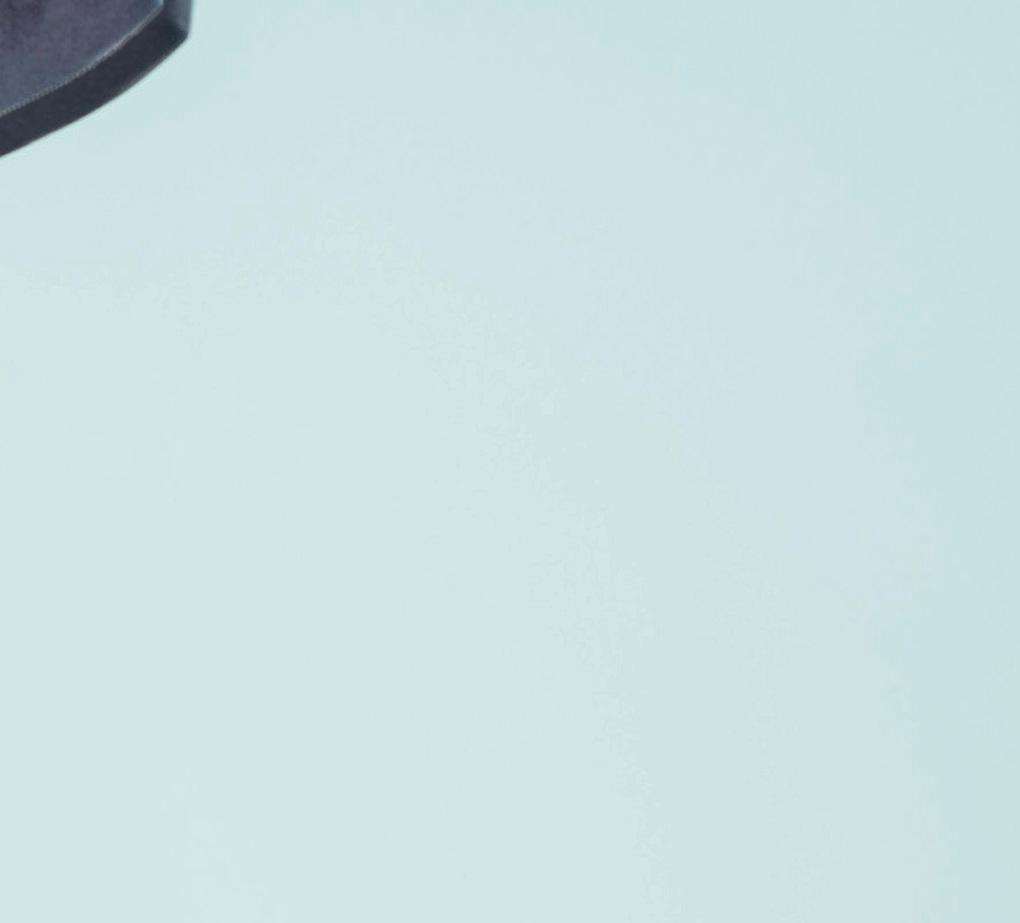


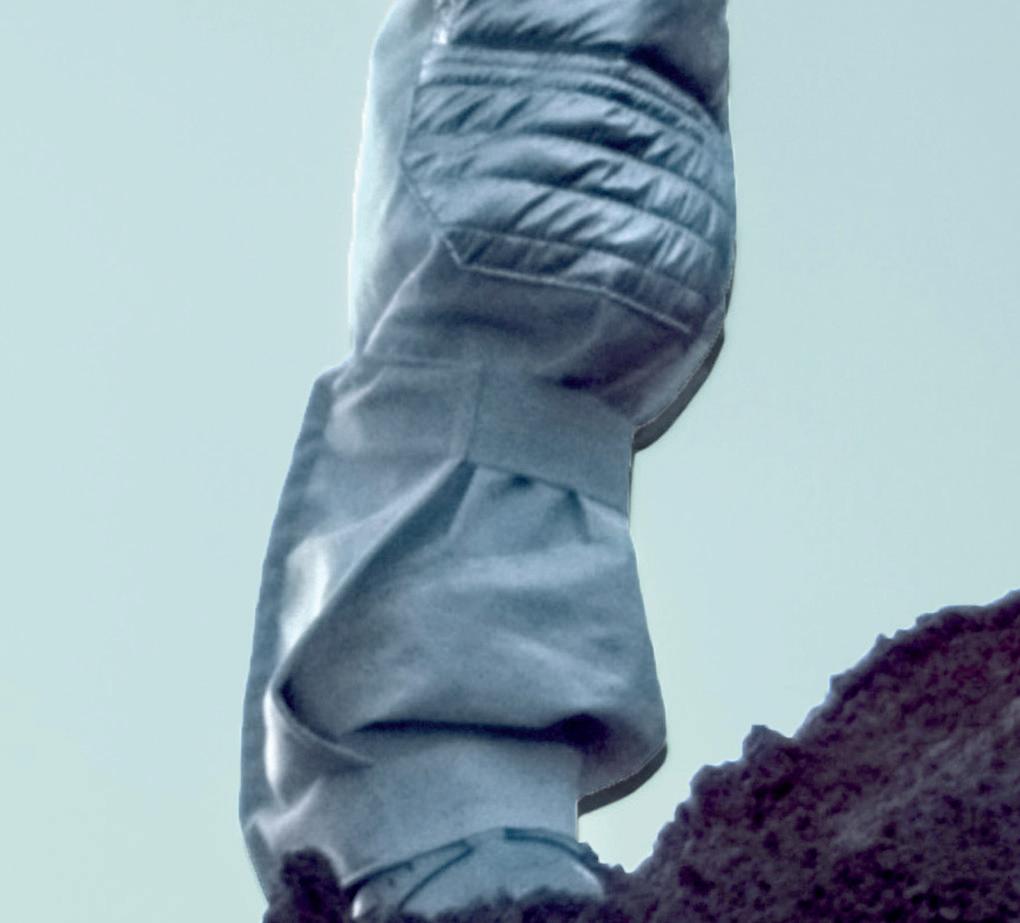




















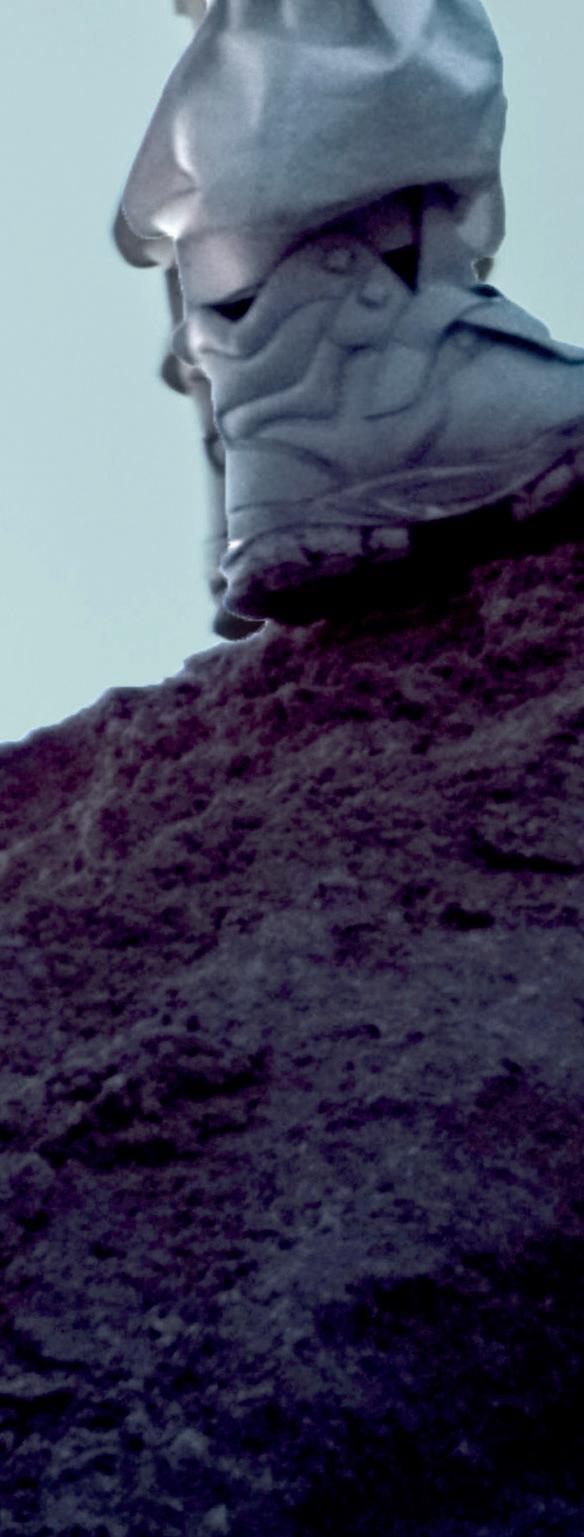



facilitate learning and leadership throughout their businesses – including for themselves, for other senior leaders, and for the ‘CEOs’ that are needed at every level of today’s organizations.
Creating a new age of empowerment
There are three critical developmental challenges facing leaders today (see graphic p41). They form the main axes of the leadership learning that is central to creating an empowering environment and sustaining business transformation success.
Enable: Maintaining digital relevance
Leaders today must develop fluency both in the language of digital transformation and in how these technologies enable business model transformation. However, executive leaders no longer have the strategic bandwidth to singlehandedly ensure their organization’s credibility and relevance amid rapid, complex technological change. In fact, leaders are often far from the deep digital expertise that is possessed by others ‘lower down’ the chain.
Businesses need chief executives at every level –which creates a significant development challenge
Writing Michael Chavez & Jeremy Blain
Generative AI, Web 3.0 and ongoing digital and business model transformation: executive leaders are juggling huge, complex challenges that can easily feel overwhelming. The scale and nature of these challenges mean that senior executives are no longer the smartest people in the room (if they ever were). They cannot do everything that’s needed by themselves. It’s time to embrace the power of the many, not the few.
This brave new world demands radical shifts in behavior from leaders, such as demonstrating openness and vulnerability. But it has another side. More than ever, it is imperative that leaders
More than ever, it is imperative that leaders facilitate learning and leadership throughout their businesses
Executive leaders are often those with the steepest learning curves ahead of them, to flatten the capability gap between them and the rest of the organization. It’s necessary – and opportune – for these leaders to empower all levels in their organizations with more strategic responsibility.
Excel: Growing and empowering people
Workforce transformation – the rise of the blended workforce and the open economy, including independent workers – is as important as digital. Paradoxically, we need more humanity in our workforce in the form of creative and adaptive problem exploration. We are in a world where professional ‘robotic’ work previously done by humans is being automated, leading to more worker availability for higher-level, strategic roles. ‘Growing the workforce’ is both quantitative and qualitative.
Engage: Growing an empowering organization
Empowerment means creating room within the organization for a collaborative leadership development journey, so that individual contributors become ‘in-role’ CEOs. Empowerment demands new structures that enable a more flexible and agile workforce. This idea led to Jeremy Blain’s book Unleash the Inner CEO, a toolkit for guiding leaders and managers towards successful empowerment.
Breadth and depth
Arguably, there are only two kinds of people who experience an organization across its full breadth: the chief executive and the customer. You know

this if you’ve ever been told during a customer service call that your issue is “the responsibility of another department.”
Recently, the CEO of a major Australian bank said that if they were to take full advantage of their full portfolio of businesses, something would need to shift in their leadership. The days of bankers specializing, focusing and executing only in their own businesses units were clearly over.
This bank’s experience resonates with what we are seeing across multiple industries: the relative value of leaders’ technical or domain skills is diminishing, while the value of collaboration is increasing exponentially.
Michael Chavez’s book with Sudhanshu Palsule, Rehumanizing Leadership: Putting Purpose Back Into Business, explores how we need more and better leadership to solve new, bigger and more complex problems, using the compass of purpose. Organizations have moved from focusing mostly on scale, efficiency and execution to emphasizing exploration, adaptation and renewal. They require leaders with breadth as well as depth.
This shift demands a new age of empowerment and learning for all. But how many senior leaders are willing to embrace this? This is a key barrier and challenge for leaders who are now forced to accelerate transformation and realize they need to
transform too. The skillsets of many employees are as good – if not better – than their managers and leaders. As this capability gap narrows, we must learn together to unleash the power of the many at all levels, strategically and operationally.
This inverts the usual relationship between leaders and followers. Those in leadership positions need to recognize a healthy dependence on their ‘followers.’ They may feel more pressure to show strong social and ‘human’ leadership, something for which many leaders feel ill-prepared.
How we understand leadership
Once we start to look closely at organizations through the lens of dynamic change, we see signals that point to deep and dramatic shifts in how we think about leadership.
Leadership is no longer just a title
More and more individual contributors are adopting the role of “leader.” Recent work with a large California-based technology company showed that “leadership” also applied to individual contributors, based on the expertise they brought to bear on the organization’s challenges.
Leadership development is no longer just a program
After winning work with a long-standing banking client, it became clear to the combined team that the request for a proposal was already out of date. Old paradigms such as a cohort or program are being replaced, at least in part, by agile project teams and enablement.
Leadership development is becoming an ecosystem
We regularly hear from leaders that they are having to create a developmental environment around them. Data scientists and deep experts co-exist on project teams with generalists and client leaders. The new norm is for complex collaboration, not cordoned-off swimming lanes. That requires more staff to step up to leadership.
The unintended consequences of complexity
As complexity and ambiguity increase, the gravitational pull for leadership can, paradoxically, be downwards: closer and closer to managing “the work” and into the weeds to give direction. However, many organizations are realizing that this creates an unintended consequence: leadership dependency.
As leaders give more and more direction on micro-tasks, as an expedient way to get vast amounts of work done at speed and with high quality, they are in essence deferring the development of their staff, solidifying their dependency on micro-management. Those staff
1 Create your own leadership ecosystem Leverage digital to build cultural and human connections throughout your organization.
2 Rethink your structures and processes
Emphasize horizontal over hierarchy, and support over supervision.
3 Move from the “what” to the “how” This is about mindset: the shift needs to happen at the very top before anything (or anyone) else will change.
4 Collaborate with your employees They have to be part of the decisionmaking process as to how empowerment happens, and who steps in, steps out or steps up.
5 Support skills building Emphasize emotional progress, as well as more traditional measures such as impact on the business.
6 Be inclusive Embrace ‘talent’ with a small ‘t’, rather than with a big ‘T’ for the chosen few. The 21st century demands a more collective approach.
miss an opportunity to try to guide their sub-teams themselves, possibly getting some things wrong, but ultimately learning in fast cycles.
To counter this tendency, the developmental journey has shifted from learning to be efficient micro-managers, to clarity building.
In the words of Dr Elsbeth Johnson, professor of organizational science at MIT, this is the shift to “macro-management,” where leaders build clarity around the context needed to drive high-quality, complex work at speed, while offering meaningful autonomy at all levels. It requires a mindset shift away from managing via handcuffs to leading via guardrails. As Johnson states, “If external ambiguity is the new normal, internal ambiguity is the new enemy.” Clarity and meaning are the new currency at all levels, not just the C-suite.
Restructuring leadership and management systems to embrace horizontal principles has to fuel the adoption of a growth mindset that encompasses leaders in all sorts of roles, at all levels of an organization. Success is fueled by the many, not the few.
This is not just a case of changing mindset: it is also a matter of practical implementations, which is where so many change initiatives fall down. Leaders need a blueprint for success. Unleash the Inner CEO sets out that step-by-step guide to this transformation. Through assessments and collaborative coaching conversations, managers and individual contributors can themselves determine their own personal pathway.
These pathways should be tailored to individuals in three differentiated ways.
Stepping in: leaders are empowered in a specific role to make decisions, try new approaches, and create better processes
Stepping out: leaders step out of a specific job role and contribute to the wider team and function, as part of an empowered group effort
Stepping up: leaders are ready to contribute in role and more strategically to the business, in cross-unit projects and other initiatives.
Not every individual contributor is ready to step in, step out, or step up. But with this framework, leaders create the space for bespoke learning journeys, spanning the knowledge, behaviors, leadership skills, management skills, and personal skills needed to make distributed leadership a reality.
For leaders who are stepping in, stepping out and stepping up, there is another aspect of development
that is essential to success. It involves embracing your own personal, emotional development.
The ‘Six Centers of Me’ framework presented in Unleash the Inner CEO provides a way to measure the success of unleashing leadership from a personal perspective.
1 Autonomy Do I feel a degree of independence, empowerment and freedom from constraints to unleash my inner CEO in my job role and beyond?
2 Self-motivation Am I energized and able to achieve my personal vision with commitment and enthusiasm, without feeling pressure from others?
3 Self-confidence Do I have belief in my own capability, energy and skills for success as an unleashed CEO?
4 Self-efficacy Do I have the ability to control and deliver required results?
5 Job satisfaction Do I feel appropriately recognized and rewarded for my contribution?
6 Relationships Are my relationships meaningful, collaborative and productive? Am I able to bring others along with me?
How we feel, how we think and how we develop ourselves emotionally – not just as a





























performer in a role – is often overlooked in business. But any business seeking to become more sustainable has to reinforce the humanity of the organization. It is the critical component for success in an increasingly digital world.
Modern, agile learning cultures require a strongly human-centered, collaborative effort to grow the relational leadership skills of those individual contributors who might just find themselves leading an agile team.
One leader – one CEO – is not enough. We must leverage the power and potential within our broader workforce by creating a new age of empowerment in our organizations rather than paying lip service to distributed leadership, as we have for decades.
To ignite this potential, the golden thread for success is building a strong, parallel learning culture for executive leaders, managers and individuals. It is an all-level play.
Michael Chavez is the former CEO of Duke CE, founder of Broad Vista Partners, and co-author of Rehumanizing Leadership: Putting Purpose Back into Business (LID Publishing).
Jeremy Blain is CEO of Performance Works International and author of Unleash The Inner CEO: Make Distributed Leadership a Reality (Rethink Press)
Senior leaders must embrace humility and let go of the worry that by being in learning mode, they are seen as ‘not ready’ for leadership. They must start the process themselves by letting go of power.
The prize will be not only raising the level of skills found right across our organizations, but also amplifying the very human endeavor of our businesses. It is a shift that is needed now more than ever, as we continue to adapt to a fastchanging digital world.
Leadership is still influenced by ideas from the industrial era. It’s time to leave them in the past
Writing Blaire Palmer
They want to partner, co-create and collaborate. They want a sense of meaning and purpose in exchange for the hard work they put in. Since the pandemic, people are using a new metric – the ‘worth it’ metric – and asking themselves, “Is the sacrifice I’m expected to make for my work worth it?” Having tasted more flexibility and enjoyed a better balance between home and work, many people are answering that question with a “No.”
Meanwhile, the employer is asking people to go the extra mile: to take initiative, to take ownership, to embrace change, to take risks and to care about the customer, not just pack products into boxes and be grateful that they have a job for life. All this means we must move away from our outdated notions of leadership and the role leaders play.
In my new book, Punks in Suits, I present a new model of leadership based not on the authority that comes with a fancy job title and a high-up position in the organizational hierarchy, but on being an enabler of the talents of others. Punks in suits are leaders who may look conventional on the outside but, under the surface, are willing to challenge the status quo and be uniquely themselves. Instead of seeing themselves as the experts, the decision-makers and the authority figures in the business, leaders need to become curious, continually willing to learn from their junior colleagues, and create an organizational culture where everyone can come and do their best work in service of the customer or client.
The problem is that while we recognize that our expectations of our people have changed dramatically, and that their expectations of work have changed too, there is a tension between how we need to lead today and fundamental beliefs we still hold about people and how we treat them.
Many of our ideas about what leadership entails are hangovers from the industrial era. Qualities we associate with leadership include decisiveness, calmness in a crisis, influencing skills, communication skills, the ability to motivate others and having vision. When machine-like efficiency was the key to profitability, this worked fine. The factory workers got job security, a regular wage and the opportunity to rise up the ranks with promotions and pay rises. The factory bosses got a predictable and largely compliant workforce.
But we aren’t in the industrial age anymore. Our expectations of work have changed: people expect to be more than cogs in the machine.
Our expectations of work have changed: people expect to be more than cogs in the machine. They want a sense of purpose
There are two Victorian era beliefs that still pervade our attitudes toward people in our organizations. We don’t openly discuss them but they are there nonetheless, informing our every decision. The first is that people are second rate machines. The Industrial Age was all about efficiency, predictability and productivity. People were cogs in the machine and we developed ever more sophisticated ‘tricks’ to get them to behave like machines. We created organizational hierarchies, teams, processes and systems. We dangled carrots and wielded sticks. We set out employee behaviors, clearly defined success metrics and even tracked employee engagement – after all, a happy employee is more efficient, predictable and productive. A human employee can never be as reliable as a machine, but we did our best to make them so – until they could be replaced by technology.

The second idea is that people are trying to get away with something. People are driven by emotion, personal agendas and selfish motives. They will steal from the stationery cupboard, and do less work but expect more money, if they think they can get away with it. So, we put in place checks and supervision (management), employee behaviors, systems and processes, accountabilities (such as signing off expenses and signing out company resources), we push decisions up the hierarchy, we withhold sensitive information from junior people, and we assume malintent when employees won’t ‘get on the bus’ or are resistant to change.
But of course people are second-rate machines. Humans are emotional by nature. When we treat them like machines we create dysfunctional cultures. People start to act out. They seek agency wherever they can find it, by developing workarounds, playing politics, angling for recognition for themselves, or simply working to rule. If we are going to treat them like a machine, they will give us what we asked for, and nothing more.
Let go of the belief that people are trying to get away with something and instead empower them

And when we treat all employees like bad apples, guess what? They start to game the system. We push them to lowest common denominator thinking. Why take ownership when your manager is going to overrule you anyway? How can you prove you can make good decisions when you’re never given all the information? When you take a risk, motivated by doing what’s best for the client, but it doesn’t pay off, you are assumed to be stupid, lazy, have poor judgment, or be a rogue employee who needs more supervision and more controls.
Shifting from power to purpose
Technology like Generative AI means that, increasingly, the only differentiator our human employees can bring to our businesses is their humanity. AI will be able to do huge amounts of work that is currently done by human employees. This means that we must consider what human beings could contribute to our organizations if they were released from repetitive tasks that do not benefit from human emotion. In truth, we haven’t yet scratched the surface of how people could contribute to the success of our ventures if we really enabled their humanity to thrive.
For our organizations to survive in these fastchanging times where uncertainty and continual disruption are realities, and where we want and need people’s humanity to thrive, there are six fundamental shifts we, as leaders, need to make.
From trustworthy to willing to trust Being worthy of trust is still vital, of course. But even more important is a willingness to trust. Letting go of the belief that people are trying to get away with something and instead giving them insight into business information, supporting them as they wrestle with difficult decisions and empowering them to sit with the discomfort of those decisions demonstrates our willingness to trust. The extent to which we limit our trust of them is the extent to which they will limit their trust in us. And you can’t get anything done without trust.
Get tech to do what tech does best People are second-rate machines so wherever possible, get technology to do work that is best done by a machine. Only work that benefits from emotion should be done by humans – which is still a lot! We have barely thought about how emotion could help our businesses. If we embraced humanity with all its unpredictability, strong feelings and curiosity, people could connect more deeply with the customer, each other, and themselves. They could wrangle with ethical issues, consider the long-term impacts of decisions, innovate and create. Liberated from their computers and their desks they could add value in ways we have not yet considered.
Dismantle hierarchical hardwiring Deference for seniority turns into politics, proximity to power and unwillingness to speak hard truths. Junior people are constantly managing their message to be palatable to the higher-ups – even if we say we want to hear their opinions. Leaders need to listen to what is hard to hear and then be willing to change their minds. Instead of influencing, motivating and convincing people to follow, leaders need to be willing to learn, to take on board new perspectives and push decision-making down to those who have to implement those decisions.
Seek out tensions Our organizations are riddled with workarounds. Systems and processes don’t really work on the ground, so people find ways to work around them. Teams battle for recognition and resources, so the focus becomes beating each other, rather than beating the external competition. Meetings are often ineffective, so real decisions happen in corridors and at the bar after work. Today’s leaders need to look for tensions and then move towards them, not work around them. They need to take out huge swathes of waste-of-time activity and processes, and create space for people to use their initiative. Instead of trying to find the answer, they need to ask better questions.
Invite emotion in, everywhere We’ve been terrified of emotion at work. We say we want passion, loyalty and resilience – but we don’t want anger, disappointment or disillusionment. The truth is people are emotional, not logical. We cannot dictate which emotions we want people to show and which we do not. It’s all or nothing. People have emotional reactions to everything, particularly change. Given that change is a constant, expect strong emotions to be a constant. Today’s leaders need to become highly attuned to their own emotions, willing to share that emotional journey, and adept at using the emotions they see around them as information. We can’t change anything if people aren’t emotionally ready for change. Get comfortable with feelings everywhere, all the time.
Purpose beats profit If the only motivation for changing how we lead and the culture we have in our business is short-term profit, we will fail. People are not stupid. Any sense that we are inauthentic when we say we want to empower, when we say we care or when we say we trust people, will not get the result we desire: people who are willing to bring their whole selves to work and do their very best in service of the business. That means our top priority isn’t profitability, shareholder return, or a good quarter. We must have a bigger purpose, both as a business and as individuals. If our primary
Today’s leadership ideas are still shaped by ideas from the Victorian era. One is that people are second rate machines: people are cogs, but inherently unreliable, requiring close control and direction to operate as reliably as possible. The second is that people are trying to get away with something, requiring constant checks and supervision.
Powerful technology means that people’s humanity is the only differentiator that employees can bring to businesses. To maximize people’s contribution, leaders need to reorient around purpose. It means moving from trustworthy, to willing to trust; getting tech to do what tech does best; dismantling hierarchical hardwiring; seeking out tensions; inviting emotion in; and recognizing that purpose beats profit.
Today’s leaders need to become attuned to their own emotions, and willing to use the emotions they see around them as information
motivation is a promotion and pay rise, don’t be surprised if that lowest common denominator is reflected in our people too. If our business says it cares about people but would willingly sacrifice their health and wellbeing (and livelihoods) for a quick buck, don’t be surprised if people don’t trust us. Business needs to become a force for good in the world to attract and retain great people, and to get the best from them – and to deserve the loyalty of customers and clients. We can’t fake it.
All this means the role of leader has to change. Instead of being the answers person, the expert, the superhero, leaders become the enablers of the talents of others. They remove whatever obstacles are getting in the way of people doing their best work. They are keepers of the organizational ethos and purpose, waving a beacon to remind people of the direction of travel – but they are liberators of the greatness of their people, not controllers or monitors of people. They share their expertise, experience and information generously, so that others can make decisions and have impact. They ensure, above all, that they are not the barrier to the greatness of any human employee in the organization. They swallow their ego, make sure they are facing up to hard truths about themselves and the beliefs they still carry, and focus – not on their own aggrandizement – but on leaving behind them a healthy and thriving organization that is fit for an uncertain and everchanging future.
Are you sleepwalking through your career?
Here’s how to avoid missed opportunities and fulfill your potential
Writing Asad Husain
Career sleepwalking is a state of disengagement, complacency, and lack of purpose, where individuals go through the motions of their professional lives without actively steering their careers toward their desired goals and aspirations. As a seasoned HR executive and career coach, I’ve observed many mid-level and senior leaders unknowingly sleepwalking through their careers. Success and higher positions can sometimes lead to complacency and a lack of purpose. Our past achievements and the comfort of our roles can create a false sense of security, making us all the more susceptible.
I, too, have fallen victim to the perils of career sleepwalking. As a vice president at a respected company, I found myself content with my achievements and comfortable lifestyle. It wasn’t until a pivotal conversation with my boss, who asked if I aspired to become the head of HR, that I realized I had been limiting my beliefs about what I could achieve. This wake-up call forced me to confront the risks of remaining in my comfort zone and failing to plan for potential career curveballs. I recognized that sleepwalking jeopardized my ability to attain my full potential, prepare for unexpected changes, and maintain my relevance in an ever-evolving industry.
As industries transform at an unprecedented pace, failing to actively steer your career can lead to stagnant skills, reduced job satisfaction, and missed opportunities. Career sleepwalking is a path to obsolescence in a world where agility and continuous learning are essential.
The Covid-19 pandemic awakened many of us to a greater awareness of what truly matters to us in life and how work fits into that picture. With a growing desire for more purpose, meaning, control, and flexibility in our careers, career agility has emerged as a critical skill. As careers become longer – with some experts suggesting that 60-year careers may become the norm – the likelihood of working for multiple companies increases. Failing to prepare for critical career inflection points can lead to suboptimal decision-making, negatively impacting your career trajectory, overall fulfillment, and personal wellbeing.
Historically, sleepwalking in our careers might have been more acceptable once you reached midlevel or senior positions, as many companies had robust organizational structures with predefined career ladders. However, with the evolution of flatter organizational structures and less prescribed career paths, the burden of career ownership now falls more heavily on the individual. To avoid sleepwalking, we must actively carve our career paths, seek opportunities, and proactively manage our professional growth.
So, how can you break free from the shackles of career sleepwalking and take ownership of your professional journey? Here are seven key strategies I recommend.
1
Unlocking our true potential requires continuous and deep self-reflection
Cultivate self-awareness Regularly engage in self-reflection and seek feedback from trusted colleagues, mentors or coaches. This practice will help you stay attuned to your values, strengths and aspirations, ensuring you’re actively steering your career in a meaningful direction.
2 Set challenging goals Push yourself out of your comfort zone by setting ambitious yet achievable goals that promote continuous learning and growth.
3 Embrace ownership Actively seek opportunities to make a meaningful impact within your organization. Take the initiative to lead projects, mentor others, or contribute to strategic decisions that shape your company’s future.
4 Foster a growth mindset Embrace challenges as opportunities for learning and
development. Don’t shy away from calculated risks; view failures as valuable lessons for growth.
5
Continuous skill development In today’s fast-paced business environment, continuous skill development is paramount to staying relevant and adaptable. Invest in learning opportunities that align with your long-term goals and the evolving needs of your industry.
6
Building strong networks Building solid professional networks and strategic relationships is another essential aspect of avoiding career sleepwalking. Engage in meaningful networking and collaborate with others to unlock new possibilities and gain diverse perspectives.
7 Seek mentorship and support Surround yourself with mentors, coaches and peers who can offer fresh perspectives, challenge your assumptions, and help you navigate the complexities of your career.
These strategies are equally crucial for senior and mid-level leaders aspiring to long-term career
In todayʼs fastpaced business environment, continuous skill development is paramount to staying relevant and adaptable
success and fulfillment. Unlocking our full career potential is not just a nice thing to have; it’s a critical component of our overall fulfillment, happiness and wellbeing at work, which impacts many areas of our lives. When we sleepwalk through our careers, we miss opportunities for growth, impact and satisfaction.
Unlocking our true potential requires continuous and deep self-reflection, a well-crafted learning strategy, and the willingness to push ourselves beyond our comfort zone.
Asad Husain is a four-time chief HR officer and author of Careers Unleashed: Unlock your potential for extraordinary career success (Rethink Press)
Take a moment to reflect on your career path. Are you engaged and fulfilled, or are you merely going through the motions? If you’re sleepwalking, remember that it’s never too late to take control and make a change. Embrace proactive preparation and self-reflection, and you’ll be well-equipped to make optimal, fulfilling career decisions – even in the face of the unexpected challenges that will inevitably come your way.
Your career is a journey, not a destination. By staying awake, engaged and purposeful at every stage, you’ll achieve greater success and more profound meaning and satisfaction in your professional life. Your future self will thank you.



“Sakurada





– ALEXANDER C. KARP Co-founder and CEO



of Palantir Technologies Inc.



“Drawing
– DANIEL PINK
New York Times bestselling author of When, Drive, and A Whole

Fear surrounds AI. And that is partly rational – when deployed wrongly, as we risk doing, technology can undermine the human condition. Yet AI can also heal it. Where there is fear, there can be hope.
Imagine the scene in a remote Indian village. A farmer visits the nearest town’s health clinic. He blows into a tube connected to a Vionix analyzer. The device instantly compares the profile of his breath with hundreds of millions of others. An AI, running on the cloud, identifies patterns in the sample. It instantly sends the results to the farmer’s smartphone. It suggests ways of treating the farmer’s condition in a fraction of the time needed by normal health processes.
And time is money. The rapidity of the diagnosis and proposed treatments brings cutting-edge healthcare within reach of the world’s poor. Suddenly the specter of AI becomes a guardian angel, delivering healthcare access to those previously denied it.
I declare an interest – my company is developing technologies that will tap into the diagnostic power of AI. Under the system, any new outbreak of Covid variants, or new diseases that the AI algorithms are trained on, can be retroactively analyzed across the world. Yet diagnostics are far from the only way AI can transform the lives of billions.
India, like much of the world, faces gigantic logistical challenges in delivering high-quality care to its population. The prosaic matter of connecting patients with clinicians remains a major obstacle. It is sometimes a life-threatening one: in more remote areas, patients must travel for days to reach a hospital. Once
there, they face staying nearby for days so doctors can perform a variety of tests. The distribution of critical medical supplies to remote locations presents another challenge. Moreover, the profession itself struggles to keep pace with innovations in the field, such is the pace of change.
AI can address all these challenges. The HD Steth is a smart stethoscope developed by Indian company HD Medical, combining AI and integrated electrocardiogram (ECG) technology to provide immediate cardiac insights
With the
right application and
– crucially – the right people behind it, AI need not destroy the world. It might just save it

at the point of care. Visualizations and diagnostics are uploaded to a smartphone. No longer are expensive ECGs required: the technology can be deployed outside traditional healthcare settings. It is already approved for sale in the United States.
India is at the vanguard of AI’s new hope. In a medical emergency, time is critical. For patients involved in serious accidents, particularly those with head injuries, speed of response can make the difference between life and death. Another Indian company, Qure. ai, has developed a system using AI to automatically triage patients based on head and neck CT scans. This allows medical teams to prioritize treatment and surgery more quickly and accurately.
Fear also surrounds drones, which have become a byword for AI’s dark future. The prospect of military units falling into the hands of bad actors is admittedly terrifying, as this column has warned. Yet here too, where there is fear, there can be hope. Drone systems using AI to navigate autonomously are already delivering vital medical supplies in Africa. In India, dozens of startups are developing drone fleets with AI systems capable of maneuvering through complex urban environments and delivering fragile items to their intended recipients.
AI is earning itself a bad press. Some of that is valid. There is much about the march of technology that threatens livelihoods, even potentially threatens lives. Yet every negative future has an equal and opposite positive one. In almost every field where there is data and a big problem to solve, AI can be transformative. Its ability to process and analyze large datasets far exceeds human capabilities, leading to breakthroughs in fields as diverse as medical diagnostics, environmental science, finance, transportation, and public safety.
With the right application, the right management and – crucially – the right people behind it, AI need not destroy the world. It might just save it.
distribution that Ford enjoyed. Sloan’s underdog company was an amalgamation of marginal brands, yet this firm – General Motors – pulled off the feat without any major technological revolution. Instead, Sloan understood the market well and pushed his company to innovate in new directions: the auto trade-in, auto financing, and the modern organization of a firm into staff and line functions are all innovations credited to General Motors. Together, these creative moves proved critical to challenging Ford’s dominance.
More recently, Steve Jobs at Apple built a defensible niche in personal computing, then upended two market leaders – Blackberry and Nokia – to re-make the smartphone industry. He wasn’t a technologist, but he set a clear, bold strategy and crafted a well-defined product vision. To deliver it, he recruited and enabled a highly talented team, pushing hard for excellence. He wasn’t beyond admitting failure, as with the Apple III, the early GUI entry called the Lisa, and the Apple Newton handheld computer. But he quickly pushed on to new frontiers.
What makes for an innovative leader?
Six essential traits are key
Writing Stephen Wunker
In an era of disruptive change, managers who rely on old playbooks risk rapid obsolescence. The need for quick responses to hard-topredict events calls for agility and creativity –in short, for innovative leaders.
But what exactly makes for an innovative leader? Leadership is a multi-dimensional endeavor. It’s not just about crafting bold strategy, inspiring innovation, or thinking fast. Take two historical examples.
In the 1910s, Henry Ford ruled the auto industry. Yet by the end of the 1920s, Alfred P Sloan had knocked him off his perch without having the manufacturing scale, low costs, or wide
To be an innovative leader, it is important to be connected to the people you serve
To understand how today’s innovative leaders think and behave, I teamed up with my co-authors Jennifer Luo Law and Hari Nair, currently at Philips and Procter & Gamble respectively, to interview 50 of them. We selected them based on the clear results they have achieved, and the innovative ways that they accomplished those results – and we made sure to cover a mix of industries, enterprise size, job functions, and geographies.
The findings are published in our book, The Innovative Leader: Step-By-Step Lessons from Top Innovators For You and Your Organization. What emerged from the interviews was a picture of six vectors along which innovative leaders excel. Together, the names of these vectors spell out a fitting acronym: Create.
These are the six traits that emerged from our research.
As a pre-condition for being an innovative leader, our interviewees stressed the importance of being connected to the people they serve, whether the company’s customers or employees. To be effective, leadership has to move the company in the right direction, and connection provides the basis for knowing which way to go.
Leaders look to understand the market firsthand. One of our interviewees, Microsoft CEO Satya Nadella, puts it elegantly and succinctly when he identifies the source of all innovation as “the most humane quality that we all have, which is empathy.”








Of course, customer research can become an echo chamber for how the company already thinks. Kimberly Weiss, who leads the mortgage business at First National Bank of Omaha, recounted to us how she re-thought the ways her large institution gathers customer input. “We used to have a 40-question survey about all aspects of customer satisfaction during the mortgage process, like ‘How much did you like your loan processor?’ Well, what if they never really cared about their loan processor? We threw that out, and replaced it with a single question: ‘From 1 to 5, did we create an exceptional mortgage experience for you?’ If you answer 5, we ask why you answered that way. If you
don’t, we ask why not. We want to know, in their words, what truly matters.”
Understanding the workforce also makes a big difference. When Joey Bergstein became the chief executive of Sabra Dipping Company, one of his early moves was to work the night shift in a hummus plant. Beyond reading the PowerPoints, he wanted to know firsthand why workers were leaving and how to ensure reliable operations. He told us, “You can ask people what’s going on, but you’ll get neutral answers. When you see it with your own two eyes, it heightens the sense of urgency and deepens your understanding for what is really happening.”
A leader sets a tone for their organization, whether it’s a small team or the whole enterprise. People take their cues about how to act from those who lead them. Do the leaders observe and question before deciding on a solution? Do they push to consider several alternative courses of action? Do they think several steps ahead about opportunities and risks?
Jan Swartz knows about role modeling. As chief executive of Princess Cruises during the pandemic, she saw three of her 20 ships struck by outbreaks of Covid-19. Authorities wouldn’t allow them to dock, for fear of bringing the disease into their countries. Passengers and crew were fearful, and people on the ships were dying. Observers wondered if the cruise industry would have any future. It was incredibly, unrelentingly, bleak.
What did Swartz do? She left the company’s headquarters near Los Angeles to fly straight to the pandemic’s early epicenter in Asia. She wanted to demonstrate that a core Princess value is caring for people. While the company could do only so much to manage the outbreak, she conveyed through her own actions that both passengers and crew should always feel cared for.
Partly through role modeling, Swartz built a set of shared values. She recounted: “Everyone had to make decisions on the fly. But they all knew what our True North was, because we had articulated our core values incessantly. In the fog of war, people had the discretion to make decisions that they felt were based in those core values.”
When Nadella took the reins at Microsoft, he rapidly pivoted the company to focus on cloud offerings. This paid off: within five years the company’s stock price had appreciated more than four-fold (having barely moved during the 14-year tenure of Nadella’s predecessor Steve Ballmer). The company seemed to be firing on all cylinders.
But Nadella knew that computing wouldn’t stand still, and in the midst of all the success he kept pushing for what’s next. In 2019, he tinkered on his own with emerging Generative AI models, and was astounded by their capabilities. Microsoft
People take their cues about how to act from those who lead them
invested $1 billion in a tiny, 100-person start-up, called OpenAI. The move certainly worked out: Microsoft’s share price has nearly tripled again since that time.
Innovative strategies may be executed in stages, but they’re seldom timid. Sometimes they require highly decisive action.
Ron Shaich has demonstrated this a few times. As the founder of the restaurant chain Au Bon Pain in 1978, he was a pioneer of what’s called fast casual dining. He grew the chain to hundreds of stores across the United States. But, like Nadella, he kept looking around corners too. Shaich had Au Bon Pain pay $23 million to buy a separate business with just 20 stores, the St. Louis Bread Company. As he looked deeply into his new firm’s economics, he made an audacious move. Au Bon Pain spun off its main business into a separate company, and Shaich doubled down on the St. Louis Bread Company. Later on, he sold that business – re-christened as Panera – for over $7 billion.
Creative strategy came up time and again in our interviews. It is a cornerstone of innovative leaders’ plans. Alfred P Sloan and Steve Jobs were each renowned for the strategies they shepherded. They looked well beyond the core product they sold to innovate in areas such as ecosystem partners, internal processes and customer experience.
These opportunities exist in even long-standing industries. The agribusiness giant Ofi (Olam Food Ingredients) has over $10 billion in annual revenue. Although food trading and processing is a lowgrowth industry, Ofi has expanded rapidly through consistently seeking what’s next. Its president Kamesh Ellajosyula told us, “I have been relentless and consistent with my message for change. No matter how many knocks I take, I will keep coming back, coming back, coming back. In this role, you have to be prepared for the long road.”
Coffee is one business line in which Ofi thought three-sixty. It examined the billions of pounds of coffee cherry flesh that it was throwing away every year. It turns out to be a superfruit rich
The Create model, based on interviews with 50 innovative leaders from Microsoft’s Satya Nadella to Panera’s Ron Shaich, captures six vectors across which innovative leaders excel. They are connected; they role model; they evolve; they are audacious; they are threesixty thinkers; and they are enablers.
Effective leaders follow three approaches to support innovation excellence. They set clear innovation aspirations, making clear the organization’s direction of travel. They build mechanisms to develop good ideas. And they cultivate the behaviors needed for long-term success.
the six traits of innovative leaders
in antioxidants – so now, Ofi is developing a new market for this one-time agricultural waste.
Enabler
Innovative leaders know that their success can’t depend just on them. Even executives famed for being autocratic, such as Steve Jobs, assemble a first-class cadre of lieutenants around them. They see innovation as a team sport.
Effective leaders find ways to inspire innovation throughout their organizations. As Laura Caron, the head of an innovative elementary school in Massachusetts, recounted to us: “Yesses beget yesses, which beget more good ideas. If I could give advice to my younger self, I would have been bolder to say more yesses to signal innovation faster.”
This also means finding appropriate innovation inspirations for people throughout the organization. “You want to be shown real examples of ‘people like you’ who are able to be an innovator,” Michelle Brennan, Johnson & Johnson’s company group chairman for Europe, Middle East, and Africa, advised us. “Highlight people who have had realistic wins, not just miracle wins.”
Getting started with Create
Each of these traits takes time to cultivate, both within a single leader as well as throughout
an enterprise. But the leaders we spoke with commonly talked about three endeavors for building innovation excellence.
First, they sought to set clear innovation aspirations. What strategy was their company following? Innovation is a means to an end, so what is the end? What sorts of innovations are desired? Laying out the direction for their firms enabled both coherent action and reduced frustration with innovation efforts that might get nixed for being off-target.
Second, they built mechanisms for good ideas to go somewhere. They wanted to avoid people becoming disillusioned by having their ideas linger without implementation. Even small wins could establish momentum for bigger triumphs later on.
Last, they cultivated behaviors for long-term success. Through building capabilities, recognizing innovation efforts, and connecting people across organizational silos, they helped to ensure that people could take ideas and run with them, making big ideas even bigger.
Create is a foundation for innovative leaders, and links to broader efforts to enable organizations as a whole. By adopting Create as their personal approach, leaders ensure on-target, effective, ambitious innovation. That’s what fast-moving times require.
Stephen Wunker is the managing director of New Markets Advisors and co-author of The Innovative Leader: Step-by-Step Lessons from Top Innovators for You and Your Organization (Morgan James Publishing)
Too many digital transformations fail. Success requires leaders with a disciplined mindset
Writing Robin Speculand
Your digital transformation cannot fail. But many do, and the problem is not technology. The real challenge is transforming the organization.
Success today requires correcting the current imbalance between strategy and implementation, and demands that organizations understand how to implement in a digital world. Not only does a company need to transform itself: at the same time, it needs to identify and adopt the right digital technologies.
Previously, these were two separate implementation initiatives, with each one providing its own unique challenges. Today, digital transformation requires leaders to simultaneously embrace transformation and adopt digital technologies. This starts with a disciplined mindset.
Disciplined leaders stand out because they make things happen
Only one in three strategy implementations succeed. Failure is defined as when an organization does not meet a minimum of 50% of its strategic objectives within a stated time. What makes failure particularly painful is that leaders know what to do, but get lost somewhere between thought and action, losing momentum. Leaders know this. Yet strategy implementation keeps failing because companies lack the discipline to do it right.
The difference between leaders who excel at strategy implementation and those who don’t comes down to discipline. Top-performing disciplined leaders do what others are unwilling or lack the commitment to do, have a high level of tenacity, and follow through by holding employees
accountable. Disciplined leaders stand out because they make things happen. They can be counted on to drive a company’s strategy effectively and model what is required. These leaders don’t accept mediocrity; they constantly seek improvement in themselves, their employees, the company and most importantly for their customers.
Such leadership behavior is contagious. In his classic book Good to Great, Jim Collins writes that “a culture of discipline is not a principle of business; it is a principle of greatness.” Yet discipline must start with the habits, routines and rigor of leadership, so a key question becomes, “What approaches will set the tone for a deeper culture of discipline?”
As stewards, leaders are responsible for both crafting and implementing the strategy with an equal balance of passion and tenacity. To support
The working environment needs to support and encourage the discipline to take the right actions
the development of the right discipline, senior leaders need to consider the following.
When working in a digitally driven organization, departments are asked to collaborate with each other and are encouraged to share information and data, especially when they’re adopting agility at scale. If employees are working in cubicles and silos, however, the environment is working against what leaders are asking them to do.
The layout, design and comfort of a workplace affects productivity and morale. Well-lit, ergonomically designed, and aesthetically pleasing environments can boost employee satisfaction and efficiency while encouraging collaboration and communication. Conversely, an environment
of nosy cubicle spaces and an absence of meeting areas can lead to discomfort, distraction, and reduced productivity. The working environment needs to support and encourage the discipline to take the right actions.
One company moved to a new office that overlooked the river. Traditionally, the office space with the picturesque view would have been allocated to the senior leader’s office. On this occasion, however, this space was designed as a shared work area for employees to have meetings and take breaks. This sent a powerful message throughout the company and reinforced the importance its leaders placed on collaboration and their employees.
As Chip Heath, fellow at Duke University, and Dan Heath, professor at Stanford University, have written: “By simply tweaking the environment, you can make your change initiative more effective.”
Perpetual Guardian is a 240-employee company in New Zealand that manages trusts, wills and estates. In 2018, it ran an experiment to see how employees would react to working 32 hours a week instead of 40 hours for the same pay. The employees reported they felt less pressured and more involved in their work than before. Interestingly, productivity increased 30-40% as a result of holding shorter meetings, and employees posting ‘do not disturb’ times.
To encourage employees to collaborate across departments, create an environment that encourages the right actions.
The greatest of strategies will fail if not executed well, and execution is a discipline that can be learned
2 Balance home and office environments
A critical environmental component is working from home versus coming into the office to work. Many leaders are still searching for the right balance for their employees.
In 2022, the BBC reported on research that involved more than 20,000 employees in 11 countries. It showed that 87% of workers felt they worked as efficiently or more so from home – but 80% of managers disagreed with their assessment.
Both Satya Nadella, Microsoft’s chief executive, and Ryan Roslansky, head of LinkedIn, say employers are grappling with perhaps the biggest shift in working patterns in history. The jury is still out on the right balance and, when employees work from home, how leaders can build a positive company culture. A common rule of thumb now adopted by many high-performing companies is for employees to spend 60% of the time at the office and 40% at home.
3
Discipline: not repeating past mistakes
Leaders habitually repeat past mistakes. It still amazes me that when leaders implement a new strategy, they repeat old mistakes but expect a different outcome. This highlights why a new approach and mindset are required to do it right.
Leaders need to develop the discipline to learn from previous implementations by examining what went right, what went wrong, and what could have been done better. Then, recommendations must be made as to what the company needs to do differently in its new implementation to ensure the right actions are being taken to drive the implementation forward.
As Piyush Gupta, chief executive of Singaporebased DBS Bank, has put it: “The greatest of strategies will fail if not executed well, and execution is a discipline that can be learned.”
4
Focus on less to achieve more
This may appear to be counterintuitive, yet it is one of the most powerful best practices for implementing in a digital world. At the rollout of a new strategy, large amounts of work need to be done. Every activity seems important and urgent. Discipline is required for leaders to prioritize and recognize what can be achieved when they focus on “less” rather than “more” actions.
When the focus is on more, employees become confused about what is important. They compete for limited resources, attend an endless number of meetings, can’t get ahead of their work, and fight a slow and often bureaucratic culture as they try to please everyone (often ending up pleasing no one). The ‘less is more’ technique creates a disciplined, focused, resource-rich, implementationconcentrated culture in which employees have the
Organizations cannot afford for digital transformation initiatives to fail, yet many do. The problem is not one of technology, but of transforming the organization. Leaders know what to do, but lose momentum. They need to cultivate a more disciplined mindset in order to successfully implement their strategies.
time, space and support to do their daily work, as well as take the right implementation actions.
People assume that having more choices will make them happier, but this isn’t true. In fact, having more choices makes people unhappier, and having too much choice can be a hindrance. Decision paralysis can even disrupt Cupid. For example, during speed-dating events for singles in search of a romantic partner, it’s been found that people who meet eight potential romantic partners one-on-one make more connections than those who meet 20 other daters. When Leonardo da Vinci was painting The Last Supper, he was urged to spend longer stretches on the masterpiece, to which he replied, “The greatest geniuses accomplish more when they work less.”
In business, applying the less is more technique raises the question, “How many strategy objectives should an organization focus on every 12 months?” Research shows diminishing returns from having more objectives. When an organization focuses on three objectives, it usually achieves all three. When it focuses on 4-10 objectives, it achieves one or two. When it focuses on 11-20 objectives in a year, it achieves none. This is because resources run thin, employees get confused about their priorities, and everyone gets overwhelmed by the number of meetings they need to attend. Everybody is working hard, but nothing is getting done.
A disciplined focus on just three objectives over 12 months sends a clear message to employees about what is important and where to prioritize. It focuses the organization, reduces the number of meetings, and allows for more effective allocation of resources. As Warren Buffett, chief executive of Berkshire Hathaway, once said: “I don’t look to jump over seven-foot bars. I look around for onefoot bars that I can step over.”
One critical area where the principle of less is more desperately needs to be applied is meetings in organizations. Many leaders and employees repeatedly run, or click, from one meeting to the next, day after day. Only after office hours can they catch up on emails and action items at their desks. Freeing up space for employees to take the right actions is essential. The costs of poor meeting discipline are stunning. Steven Rogelberg, a
Four critical contributors to success include creating workplace environments that support and encourage the actions that support transformation; balancing home and office working; taking steps to avoid repeating past mistakes; and focusing on less to achieve more.
Having too many meetings is a critical area where leaders lack discipline
professor at North Carolina University, calculates that 55 million meetings a day occur in the US alone. Yet, according to one 2022 study by Otter.ai, nearly a third of meetings are unnecessary, and large companies could save as much as $100 million a year by holding fewer unnecessary meetings and cutting down on their invite lists. A Harvard Business School study found that CEOs spend 72% of their total work time in meetings, and many were far too long – they could be cut in half.
As Peter Drucker put it, “Meetings are a symptom of bad organizations. The fewer the meetings, the better.” Having too many meetings is a critical area where leaders lack the discipline to change their organizational structure to enable the implementation of their digital transformations. Note that applying the less is more technique is not only about having fewer meetings – it includes organizing them to take up less time. By default, most meetings are organized for 60 minutes. It’s amazing how the agenda always manages to fill the time allocated. Instead, identify the objective for the meeting and allocate a reasonable time. When possible, make it less than 60 minutes.
Shopify is an example of a company that addressed the challenge of too many meetings. Its leaders told their employees it was wiping out all recurring meetings with more than two people in perpetuity, as part of what it called a “calendar purge.” Employees were told to scrap all meetings on Wednesdays, and that any meetings of more than 50 people could only take place during a six-hour window on Thursdays. Overall, Shopify employees were encouraged to say no to meetings and remove themselves from large internal chat groups.
Robin
chief executive
Speculand is
of Bridges Business Consultancy Int and a Duke CE facilitator. His latest book is Implement: Doing it Right in a Digital World
The implementation of a disciplined mindset is essential for digital transformation. Adopting the behaviors that underpin good discipline needs to be a priority for leaders, if for no other reason that customers notice your implementation, not your strategy. Implementation of discipline isn’t rocket science; it’s common sense. But just because it’s common sense doesn’t mean it’s common practice.














“Richard Benjamins draws on his years of experience in the data journey to offer very practical advice for any company serious about becoming data-driven. This is a book you must read if you want to avoid the typical mistakes in this sort of transformation”
– DAVID DEL VAL , CEO of Telefonica R&D
“So many talk abstractly about Big Data and AI in large organizations. If you are interested in the nuts and bolts of being data-driven; if you care about success and all the things that really matter, read this book!”
– VIKTOR MAYER-SCHONBERGER , co-author of the bestselling Big Data




The author RICHARD BENJAMINS is Chief AI & Data Strategist at Telefonica. He was named one of the 100 most influential people in data-driven business (DataIQ 100, 2018) and serves as an expert to the European Parliament’s AI Observatory (EPAIO).
A surefire way to lose is to try to avoid doing so
Ahand of poker comes down to the final card. You have a strong holding. You think you have the edge. There is a massive pot and you have pushed all in, betting all your money as the likely favorite. The river – the final card – is revealed. You win. You are overjoyed and are now substantially ahead in cash compared to your starting position. You start thinking about your winnings. You change the way you play. Your game now centers on protecting what you have, rather than continuing to make smart bets. Ironically, by playing not to lose many players start to lose.
As we look at disruption, we notice a similar pattern with very successful companies. Blockbuster Video turned down the chance to buy Netflix because it did not see the opportunity in online streaming for changing its business. Kodak invented the digital camera. But its successful film business was considered more important –and the opportunity to go digital was shelved. Nokia doubled down on the cellphone business as the world moved to mobile computing. Bed Bath & Beyond doubled down on physical stores and avoided online retail after 2017. All these companies started playing not to lose and focused on protecting what they had. The rest is history.
At the heart of the destructive disruptions of these great companies was a change from playing to win, to playing not to lose. It became about protecting what they had and resistance to change.
Companies that play not to lose become defensive and cautious. They become risk-averse and conservative in their decision-making. They focus on the products or services that made them successful and avoid trying new and novel things. They become short-term oriented and avoid what they perceive as threats. They stop doing the things that made them successful. We can term this the losers’ paradox: trying to avoid losing makes losing more likely.
Leaders who try to hold what they have rather than forge paths to progress face likely defeat
To achieve success in the first place, all the companies above took smart risks. They were aggressive and innovative. They were always looking for ways to gain advantage and were disrupting the status quo. The focus was growth, expansion, and seizing opportunities. They tended to look more long-term in their decision-making and didn’t try to optimize every short-term result.
Jeff Bezos has said that Amazon should always remain a Day One company and never become a Day Two company. Day One means that Amazon must always act as a startup, regardless of how big it gets. Its corporate headquarters is called the Day One building. Bezos built a culture and mentality that focuses on the customer and moves with the market. Its ethos can be summarized as act and adapt: continued innovation, taking smart risks and learning from potential failures. In other words, Amazon continues to play to win.
As leaders, we must establish and maintain a culture that allows our organizations to continue to play to win. We cannot allow ourselves to get caught up in the short-term earnings trap. Companies that focus solely on optimization and cost-cutting are not going to win in the future. We also must watch out for excessive conservatism in our decision-making and our financial metrics.
Like a poker player who prioritizes protecting his stack over making smart plays, leaders who try to hold what they have rather than forge paths to progress face likely defeat. We must stay aggressive. We must play to win.

witnessed a shift among shareholders? What are their practices? And what is their ownership structure?
Who are the shareholders?
To answer these questions, we carried out a survey of 102 companies based in France who had adopted the legal status for corporate purpose bylaws (société à mission) between 2019 and 2021. We observed the shareholder base for these companies, and tracked its evolution between 2014 and 2021. The société à mission legal status is broadly similar to that of a B-Corps, or the Community Interest Company in the UK, and Societe Benefita in Italy.
What can we learn from research into the investors in mission-led businesses, social enterprises and B-Corps?
Writing Carine Girard-Guerraud
Over the past few years, there has been a notable surge in the number of missionled companies and social enterprises across the world. These businesses are characterized by their commitment to making a positive impact on society and the environment, alongside generating profits. This trend reflects a growing recognition among consumers, suppliers, managers, entrepreneurs and investors of the importance of social responsibility in business operations. Mission-led companies and social enterprises address pressing social and environmental issues while meeting consumer demand for ethically sourced products and services.
The rise of mission-led companies represents a shift towards more sustainable and inclusive capitalism, with businesses voluntarily adhering to high standards of social and environmental performance, transparency and accountability. As such, it raises interesting and important questions about how these firms are financed. Who is investing in mission companies, and have we
A transformation in the investment profession is helping missionled companies play a bigger role in the economy
The initial results of the study show that employee shareholding continues to increase both before and after the adoption of mission company status. We also noted that these companies tend to have a stable and concentrated shareholder base, which increased after the adoption of mission company status. This confirms that for companies to be able to sustain their mission, it is necessary to build a sustainable shareholder base. To this end, it is necessary to increase employee shareholding for two main reasons. First, to align the interests of employees with those of financiers: by having employees share the financial risk, dialoguing with them during shareholders’ meetings, and by sharing the profit. Second, it strengthens employees’ sense-making, by committing them in a normative way to the company’s mission.
The results reinforce the idea that, to build sustainability-focused business models, it is necessary to build a shareholder base that is engaged for the long term.
To answer this second question, we surveyed private equity investors and institutional investors: 15 investment and asset management companies that had adopted the legal status for corporate purpose bylaws, including six ‘impact native’ management companies (that is, companies that already had impact funds before the statute was adopted), five asset management companies, two banks, and two funding platforms.
We found a variety of profiles among these investors, who presented themselves as either ethical investors, citizen investors, responsible investors, engaged investors (i.e. active in managing their investment funds), or impact investors. We also found that investors with a mission (set out in the company’s raison d’être and statutory environmental and social objectives) adopt a more comprehensive and engaged approach to addressing the challenge of aligning with stakeholders’ expectations. Several key characteristics were identified.
Employees and managers collaborate in defining and implementing the mission, ensuring a cohesive approach. The company’s commitments are articulated and understood through a focus on active learning. The implementation of organizational due diligence throughout the investment chain, and the disclosure of the mission, drive increased standards for compliance, corporate social responsibility, and adherence to established norms.
In addition, mission companies are developing incentive systems for organizational and systemic impact, involving all teams in the pursuit of their goals. One specific incentive is carried interest, where the capital gains earned by investment fund managers are tied to impact indicators, incentivizing them to prioritize socially responsible investments.
We noted that mission companies create a framework that involves all employees and executives in defining the company’s purpose and its environmental, social, and economic goals. This purpose guides actions beyond corporate social responsibility, by focusing on impact. The framework includes indicators of net negative externalities and engages stakeholders through mechanisms like the mission committee – a feature of the French société à mission company form, distinct from the board of directors, which comprises external experts and at least one employee. Incentive systems linked to impact indicators help redistribute profits, both internally (through carried interest) and externally, including via endowment funds.
One of the most important features of mission companies is the way they are developing new ways of distributing the value they create, sharing the benefits more widely than typical enterprises. Some profits are distributed between different stakeholders, such as associations, via foundations or endowment funds. For instance, at insurance group Maif, a value-sharing system means that 10% of annual profits are distributed to climate solidarity and biodiversity regeneration projects – such as sustainable forest management, wetland rehabilitation and watercourse restoration – that help local authorities strengthen their resilience in the face of climate change. The cooperative banking group Crédit Mutuel allocates 15% of its annual profits to various projects, with half of this social dividend going into its Environmental and Solidarity Revolution fund, which prioritizes
















Carine GirardGuerraud is professor of corporate finance and governance in the finance department at Audencia Research presented in this article was part-funded by the Agence Nationale de la Recherche, grant ANR21-CE26-0024















investments that are environmentally resilient and socially supportive. This fund, which has no financial profitability objective, aims primarily to transform production models.
The growth of employee shareholding, both among these mission-driven investors and in the companies they finance, is a significant trend. The engagement of internal teams translates into commitment for companies as they transform their business models to be more sustainable.
Our studies reveal a transformation in the investment profession and its relationship with mission-led companies – one that is being accompanied by a reconfiguration of shareholder structures and the increasing involvement of employees in company governance. These shifts are creating a strong foundation for missionled companies to play an increasing role in the economy, helping to tackle the profound challenges facing the world today.
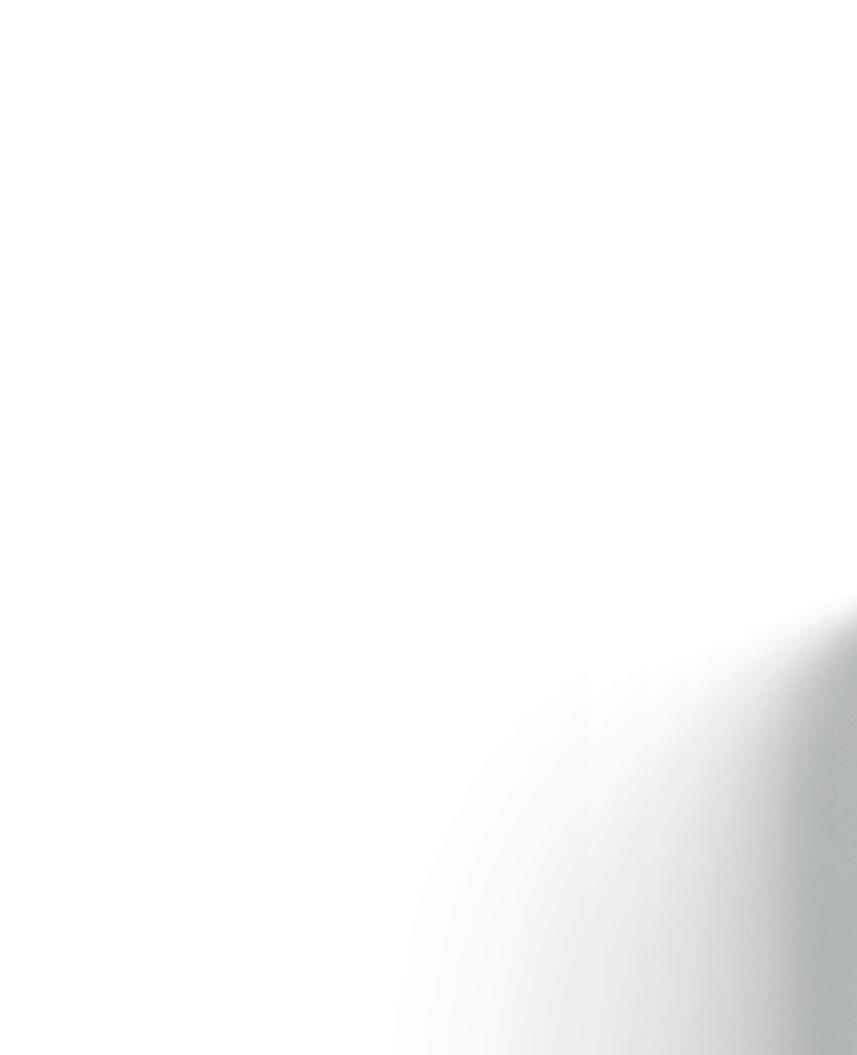





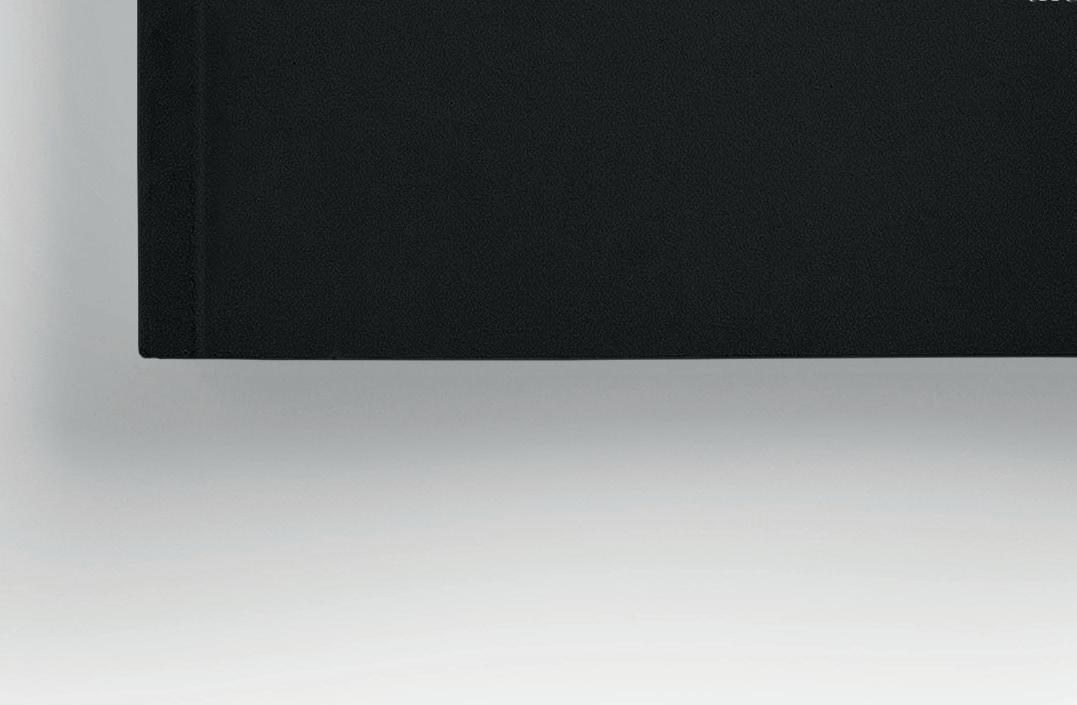


PHILIP KOTLER is known around the world as the “father of modern marketing” and has been a Professor at the Kellogg School of Management at Northwestern University for the past 50 years. He is the author of over 80 business and marketing books.
GIUSEPPE STIGLIANO is the Global CEO of Spring Studios, a leading communications agency in fashion, beauty, lifestyle and luxury. Prior to that, he was CEO of Wunderman Thompson Italy.
RICCARDO POZZOLI is an entrepreneur, advisor and investor, who has founded and advised a dozen startups in the past ten years, innovating within the fashion, media and food industries.



A HANDBOOK OF NEW RULES BY THE GURU OF MARKETING – PHILIP KOTLER –AND TWO LEADING PRACTITIONERS. Original contributions and insights from fashion leaders, including Domenico De Sole (President of Tom Ford International), Leo Rongone (CEO of Bottega Veneta), Alfonso Dolce (CEO of Dolce&Gabbana), Remo Ruffini (CEO of Moncler), Jonathan Akeroyd (CEO of Versace) and Francesca Bellettini (CEO of Yves Saint Laurent).

To change the world, marketing needs more deviants
Best practice has increasingly become common practice. That’s not necessarily a bad thing – but neither is it a recipe for originality and difference. As legendary rockstar Frank Zappa posited, “Without deviance from the norm, progress isn’t possible.”
Marketing people are schooled in the same best practices, with the result that nearly everyone ends up on the same page. Everyone is taught about the importance of purpose, insight, consumer closeness, emotionally-led positioning statements, segmentation, motivating propositions, competitive advantage, customer journeys, brand extension, CRM, promotions, and so on.
This being marketing, there are slight variations on the frameworks used. Various brands and agencies have given their tweaked approach a new name. But the vast majority of approaches are highly similar. It’s all very sensible and all very reasonable.
But then – as someone who is sometimes known as the director of deviancy – I’m the first to admit that I’m not always reasonable. Indeed, I’m proud of the fact. As George Bernard Shaw wrote: “The reasonable man adapts himself to the world; the unreasonable one persists in trying to adapt the world to himself. Therefore, all progress depends on the unreasonable man.”
I do, however, try to be constructively challenging: not just by asking difficult questions, but by trying to have answers to those questions too. All too often, I’ve found that people in marketing expect originality from those people who have been labeled ‘creatives’; the art directors, copywriters, designers and videographers. Yet I’ve met a lot of strategists who aren’t very creative. They are happy to let the creatives be the creative
Here’s to the crazy ones. The misfits. The rebels. The troublemakers. The round pegs in the square holes. The ones who see things differently.
They’re not fond of rules. And they have no respect for the status quo. You can quote them, disagree with them, glorify or vilify them. About the only thing you can’t do is ignore them, because they push the human race forward.
While some may see them as the crazy ones, we see genius. Because the people who are crazy enough to think they can change the world, are the ones who do.
Apple’s ‘Think Different’ campaign
ones, rather than challenging themselves and questioning their own thinking.
Having seen this play out repeatedly, I’ve spent some considerable time thinking about thinking. I’m a big fan of Daniel Kahneman’s two modes of cognitive processing, as explored in his classic Thinking, Fast and Slow: System 1 thinking is fast, intuitive, requiring little effort, while System 2 thinking is slow, deliberate, requiring intentional effort. But beyond that, I encourage you to think about marketing challenges in at least five ways.
The first is analytical, using logical, structured techniques, often numerical. Second is analogical, which involves the use of – not surprisingly –analogies, but also parallels and metaphors.
Next is historically, learning from the past. I don’t agree that “there is nothing new under the sun” – but nor do I follow the view of some contemporary brands who seem to believe there is nothing to learn from the past.
The fourth way of thinking – one I have a penchant for – is deviant thinking, which is based around challenging, bending or indeed breaking category rules. You can’t make an omelet without breaking a few eggs.
Finally, there is random thinking. This is not something you can easily train people in, other than encouraging them to realize that marketers – like the proverbial policeman – are on duty 24 hours a day. It’s about letting your mind wander, allowing it to be jolted out of its normal patterns, and finding random associations.
In short: think different.
Giles Lury is a freelance brand consultant

Senior executives often end up distanced from their target market customers. Consumer insights can help bridge the empathy gap
Writing Brett Townsend
It has become a regular routine. When the press writes about senior executives, it conveys what feels like false outrage about high salaries and bonuses. What it doesn’t talk about is the constant challenge faced by senior executives. To say they – you – have difficult jobs is an understatement. You are under constant pressure to deliver revenue and profit targets for shareholders or other owners. You see new products fall short
of expectations, get hit by unexpected setbacks, and experience sales, share, and/or profit declines, among many other things.
Among all the demands on your time and attention, it can be easy to forget or lose sight of the consumer who purchases your products or services. While it’s correct that one of the main reasons for a company’s existence is to provide value to shareholders, there is no value without products and services that meet consumers’ needs and wants.
Yet we need to be honest that, because of those time and attention demands, there is usually a disconnect between executives and consumers. For the most part, you live very different lives from your consumers. Unless you are actively participating in the in-depth consumer research being conducted at your companies (which is impossible given your other major responsibilities), it’s very difficult to intimately know your consumer and their needs.
The unfortunate by-product of this is that it’s difficult to have empathy for the consumers you are trying to serve. This lack of consumer empathy – or a consumer-centric culture – leads to making product decisions based on your gut. History has shown us that this can cause disruption to the pursuit of company’s long-term growth goals – and at worst, can be disastrous, even threatening the very existence of a brand or company.
This is where effective consumer insights (CI) become critical for the long-term success of your company.
Just like other areas of a business, it’s likely your CI function has had its ups and downs over the years. From your standpoint as an executive, you need actionable recommendations and strategic direction; you need consumer insights to be insightful and practical so they lead to more sales.
This is where the power of the partnership between executives and CI lies. It’s important to consult with and learn from your insights team, to merge the insights and empathy they have for your consumer with your expertise for business and the marketplace. This ensures innovation, products and marketing come from the right place.
Therefore, in that partnership with your CI department, there are three basic elements that can help you build better consumer empathy –assuming that you already have a foundational understanding of your target consumer.
Knowing these three things about your brand or company is also a useful guide for determining what you may need to figure out at your company: if even your CI department doesn’t know these three things, action is urgently needed.

Before understanding anything else, it’s important you know the major conflict that your target consumer deals with, and how your product helps them overcome that conflict. The error made by many senior executives is thinking their brand or product is the hero in the story. It is not. The consumer is always the heroine or hero, and your brand or product is a tool they use to overcome the conflict. Not knowing the conflict means your brand doesn’t have a purpose, and without a brand purpose, it’s impossible to position yourselves in the market, communicate with your consumers, and have empathy for them.
Many executives like to think they dictate their brand’s perception and what it stands for. This is akin to thinking you can control what other people think and believe, which of course you can’t. Marty Neumeier said it very simply in his book Zag: “Your brand isn’t what you say it is. It’s what they say it is.” Simply put, your brand really isn’t owned by you or your company, but by the consumers who invest so much in it. The real question therefore is: Who are they?
This matters, because if you try to find out what all consumers say about your brand, you will get such a wide range of responses that you
Your brand really isn’t owned by you or your company, but by the consumers who invest so much in it
won’t know where to start. Focus instead on your target consumer – that one consumer you care most about, who your brand is most suited to, and who has an emotional connection with and love for your brand. When you know that, then you can begin to build your brand story in the most meaningful way possible, to resonate with that consumer. If you try to be all things to all people, you are nothing to anybody.
We have learned so much about human needs and emotion, yet these are often overlooked by many executives. After all, they are not easily explained in a quarterly shareholder call. As a result, you may hit your sales numbers from time to time, but your brand will never really grow. It’s important to understand your consumers are inspired in different ways to grow and evolve themselves. If your brand helps them do that, you will have the brand love, loyalty and price inelasticity for which we all hope.
Brett Townsend is
senior vice president of strategy at Quester
Strategy and
Insights.
With Tim Hoskins, he is co-author of Insights on the Brink: Revitalizing the Market Research and Analytics Industry
Consumer insights are often under-utilized by senior leaders. Starting with these three basic understandings of your consumer will go a long way to developing the type of consumer-centric empathy that every company needs to deliver longterm, sustainable growth.
Marketing needs a theory of human behavior – and behavioral economics is that theory
Writing Anthony “Tas” Tasgal
As a marketing, brand and communications practitioner of several decades’ standing, something that has really gotten under my skin over a long period of my working life is the fact that many people who work in the business of influencing consumer behavior through communication do not seem to have a theory – or even want a theory – of what influence or persuasion might be, how and when it works, and how and when it doesn’t.
I often asked myself why there seemed to be no theory, or corpus of evidence, or series of
Minimize the cognitive burden you place on your audience’s brains: make it easier for them
principles that those in the influencing business could subscribe to, consciously or unconsciously, in terms of how they expected people to make those decisions. When we see people (including ourselves) making choices that clearly seem less than optimal, or even irrational – like poor financial decisions, buying that chocolate bar when we are meant to be eating healthily, or stubbornly clinging to a view despite the accumulating weight of evidence against it – we surely need a theory that acknowledges rather than brushes aside the reality of human behavior and decision-making.
But as marketing practitioners, why do we need a theory? To avert the tyranny of subjectivity.
One of the biggest expenditures of time and energy I have witnessed among those commissioning and those creating work in the marketing and comms world is on making subjective calls about the goal of a campaign, and whether a piece of creative work will be effective. It happens alarmingly frequently. A robust theory and an agreed set of principles about how we think we can best affect the target audience we are addressing would help to avoid the “He said, she said” arguments that are based on viewpoints as basic as “not liking” a form of words, or how something looks, or a vague sense that it “doesn’t mention the brand often enough.”
Debunking the myth of Homo Economicus
One of the central tenets of behavioral economics is that it rejects the model generally known as Homo Economicus, or ‘economic man’. This model comprises a series of assumptions about human decision-making and choice that have been the mainstay of classical economics and have been handed down and shared for generations, across government and business alike. It is equally prevalent in the B2B and B2C universes.
The notion is that consumers (or people, as I like to call them) are predominantly rational, and that their decisions are logical, conscious and independently formed. Yet, in study after study, behavioral economics shows how deeply flawed this notion really is. We are not purely logical beings. We reach conclusions about the world around us, and about how to act – including about what we purchase – based on many things besides conscious reasoning, including how we see those around us acting.
In place of that wrong-headed model of Homo Economicus, behavioral economics attempts to explain the reality of how we think and act –based on real science, not just rhetoric or theory. That makes it indispensable for marketers and communications professionals.
Pillars of a new theory
There are six key elements that the theory and principles of behavioral economics offer marketing and communications practitioners.
1
Work with the brain not against it The brain runs not as a computer or a sponge, but on the principle of effortlessness. To be as energy efficient as it can, the brain creates shortcuts, known as heuristics, that minimize the amount of repetitive heavy lifting it has to do. In many senses, that makes effortlessness the most pertinent definition of intelligence; intelligent brains use less power. The lesson? In your branding and communications, minimize the cognitive burden you place on your audience’s brains: make it easier for them.
2 We are mostly unconscious This is uncomfortable, perhaps, but true. A vast amount of human ‘thinking’ is done unconsciously, which saves energy. Many decisions happen at the level of System 1, which is known as the “adaptive unconscious.” The late Daniel Kahneman called System 1 “the secret author of our choices.” Yet too much of marketing
and brand communication is factual, logical and didactic, only talking to the rational, slower part of the brain – System 2. Does this describe your brand, website or user experience?
3
Speak to emotions If, in business, we generally tend to overestimate the power of rationality, we also tend to underestimate the importance of emotions. Evolution designed our emotions to overrule reason, especially in times of evolutionary significance. Are you appealing sufficiently to the emotions of your audience?
4 Check your research If you are involved in commissioning or using the results of market research, you may want to sit down for a moment. If your research relies on asking factual questions of System 2, rather than aiming at the real emotional drivers that lurk in System 1, you may be wasting your time and money on output which is unhelpful, and may even be misleading.
5
Speak to tribes Far from being independent thinkers, we are more like herd animals than we like to admit. We rely heavily on conformity and compliance. Perhaps we should think of brands and communications as appealing to – or creating – tribes of meaning, rather than always targeting the individual.
6
Learn to reframe One of the most creative aspects of behavioral economics is its emphasis on re-framing: the idea that you can take the same logically equivalent information but re-frame and re-present it in a different way. Mastering this skill can help us make different decisions, yielding better outcomes.
Anthony “Tas” Tasgal is a trainer, author and speaker. His latest book is The Consumer Behaviour Book: Exploring the Reasons why Emotions Are So Important in Decision-Making (LID Publishing)
A theory of how humans make decisions, based in science, offers marketers a way out of the endless subjective debates about what’s good or not.
Let’s discard the myth of perfect rationality when designing our brands and communications, and replace it with one that fits squarely with the reality of human behavior. We are guided by the brain’s drive for effortlessness, and the immense hidden power of our emotions.
Redefining an apparent problem as a dilemma can help unlock new ways to grow a brand
Writing Allyson Stewart-Allen
If you’ve been in an airport at any point in the last decade, you probably remember seeing the famous HSBC ads lining the corridors. The bank’s campaign pushed us to rethink the ways we frame our daily routines, such as relying on prescription drugs or herbal remedies to cure what ails us.
What is interesting about these provocations is that we perceive them as dilemmas, where we are urged to make an “either or” decision rather than one that’s “both and.” Helpfully, HSBC also got us thinking about whether what works in one part of the world works everywhere. For businesses with global reach, that question now matters more than ever before. Consumers, clients and customers want to feel heard and understood at a local level, and want to be offered more than just global templates

as part of an anonymous corporate globalization strategy. If we frame the business question as a dilemma rather than a problem, it opens up a much wider, more creative range of options that typically deliver more profitability.
Problems vs dilemmas
Typically, we define a problem as something with a discrete beginning, middle and end which must
be fixed, solved, erased, eradicated. A problem has a clear-cut solution, and is resolved once that solution is applied. A problem, such as making changes to your brand’s name so it works around the world, is readily fixable, and once done, it almost never recurs.
A dilemma is when you are faced with two tensions that seem to be opposing, with the temptation to focus on one of the two rather than on both at the same time. Each tension influences the other; clear advantages and disadvantages are associated with each of them. Until the tensions are recognized and strategies are developed for integrating and managing them, the issue will recur, often leading to much budget and attention being assigned to “solve” the dilemma – rather than to manage it. It is an approach that never removes the challenge.
Common dilemmas include the challenge of balancing safety and speed to market, of managing pressures to focus on your products or services while being equally focused on clients or market segments, and the challenge of whether to centralize key functions or to locate them in your countries or regions. And for international brands, the global/local dilemma is one of the most frequently recurring.
Analyzing dilemmas
It may seem daunting to try integrating the tensions that shape business dilemmas – yet it’s not as difficult as you think. The first step is to identify the two tensions and look at the pros and cons of each. Work with your team to generate points for and against each tension – but keep in mind that the cons of one approach are not the pros of the other.
Next, in order to optimize the pros of both, ask: “How might we do X and Y so we get these benefits from both?” List – and prioritize – the strategy options that get the best of both. Apply criteria to decide which to take forward: these may include the amount of complexity that can be tolerated, the amount of cash required, the breadth of stakeholders that would need to be engaged, or possibly how much time is required to change today’s approaches.
Remember that you are not seeking a neat “solution” that will resolve the issue and confine it to the past; the nature of dilemmas is that the opposing pressures will continue to create tension. But by actively managing the dilemma, you can choose which benefits to pursue.
For marketers, pressure from clients, customers or consumers for ever-more local offerings makes the global-local tension one of the most common
dilemmas. There are a number of common potential strategies for managing it.
Freedom in a framework Defining which aspects of your products or services can be localized by country or regional teams, via some clear parameters. For example, they may be asked to localize formulations and pack sizes, or put marketing comms into local languages.
Sharing best international practices Creating an internal forum with representatives from the various country business units that amalgamates the group’s observations of which current offerings are effective, and ways they could be more relevant through localization.
Experimentation Trying some specific localizations to gather cause-and-effect data resulting from localizing different aspects of the value proposition.
Ambidexterity in managing the tension between global and local will certainly be rewarded
One brand that has shown itself adept at integrating global and local is the Nestlé KitKat candy bar. In the UK, where it originated, KitKat’s offering of flavors is fairly traditional (including caramel, dark chocolate, orange, dark mint and hazelnut cream among others) across 29 count lines, including a vegan option, two-finger bars, four-finger bars, an Easter bunny and Easter eggs. In Japan, while most KitKats are the famous four-finger bar, the range of flavors is specifically built around that country’s consumer: it includes wasabi, matcha green tea, pumpkin, baked potato, sake and even hokkaido melon (sweet melon and mascarpone cheese placed in between thin wafers). This localization is a good example of the “freedom in a framework” approach, as the Japanese business was given guidelines for what must stay the same (the brand name for one), while being at liberty to vary the flavors. The Japanese team also recognized the importance of putting the bars in nice boxes for gifting. It has helped make it a common gift before important exams and other events, capitalizing on the fact that the brand’s English name sounds very like the Japanese phrase kitto katsu to, “sure to win.”
Allyson Stewart-Allen is the chief executive of International Marketing Partners
Reframing your international marketing challenge as a dilemma can help to manage the apparently contradictory pressures for global and local brand approaches. It allows you to cater to customers, clients and consumers who expect most of the same benefits of brands’ global offerings, while creating the flexibility (and revenues) needed to adjust for country or regional preferences. Ambidexterity in managing the tension between global and local will certainly be rewarded.
reciprocated. In the context of sales, this might manifest as offering thoughtful gifts, extending invitations to dinners, or providing exceptional service. These gestures are not merely about the immediate benefits; they are investments in longterm relationships. Failing to recognize and honor these social obligations can damage trust and hinder business prospects.
Its enormous markets offer compelling opportunities for global businesses, but success in China requires a grasp of key cultural concepts
Writing Catherine Hua Xiang
In today’s global marketplace, successful sales strategies hinge on more than just product quality and competitive pricing; they require a deep understanding of cultural nuances and communication styles. For businesses looking to establish or expand their footprint in China, intercultural communication is a critical component. As discussed in my latest book Bridging the Gap, it is hugely important to master the subtleties that surround social interactions in Chinese culture. Navigating the complex landscape of sales in China requires an understanding of social obligations, the need to maintain ‘face’, building personal connections, and managing rapport through effective communication.
In Chinese culture, social obligations, or renqing (人 情), play a significant role in business interactions. These obligations are the social debts and favors exchanged among individuals, creating a network of mutual support and reciprocity. Understanding this concept is crucial for sales professionals, as it influences business negotiations and relationships. In practice, it means that acts of kindness, generosity, and respect are expected to be
The ability to adapt and thrive in diverse cultural contexts will remain a key differentiator for businesses and individuals alike
The concept of face (mianzi, 面子) is another cornerstone of Chinese culture, referring to one’s social standing, reputation, and dignity. Maintaining face is essential in all interactions, and it is particularly salient in business settings. Sales professionals must be adept at preserving their own face while safeguarding that of their Chinese counterparts. This involves showing respect, avoiding direct confrontation or criticism, and being mindful of hierarchical structures. For example, if a negotiation does not go as planned, it is crucial to handle the situation delicately to avoid causing embarrassment or loss of face to the parties involved.
Moreover, providing face can be a powerful tool in building rapport. This can be done by giving public recognition, showing respect for others’ opinions and decisions, and making others feel valued and important. In doing so, sales professionals can foster a sense of mutual respect and trust.
One company that has been successful in adapting to the Chinese market in the highly customer-oriented environment of the fastfood industry is KFC. It localized its menu to include popular Chinese dishes, and adapted its marketing strategies to honor Chinese culture and traditions. By showing respect for Chinese culinary preferences and cultural practices, KFC maintained face for its Chinese customers and partners. This respect for local customs helped KFC build a strong, positive reputation in China, leading to its widespread popularity.
In China, personal relationships, or guanxi (关系), are the bedrock of business success. Unlike in many Western contexts where business relationships can be transactional, in China they are deeply personal, and built on trust and mutual benefit over time.
Building guanxi requires patience and a genuine interest in forming long-term relationships. Sales professionals should invest time in getting to know their Chinese counterparts beyond the business context, such as through shared meals, social outings or even personal family events. This personal investment is often seen as a sign of commitment and can significantly impact business outcomes.

Additionally, leveraging existing connections to build new ones is a common practice in China. Recommendations and introductions from trusted individuals can open doors and create opportunities that might otherwise be inaccessible. A network of reliable and influential contacts is an invaluable asset.
Effective communication in a Chinese context extends beyond language proficiency; it encompasses understanding cultural norms and adapting one’s communication style accordingly. High-context communication, where much is left unsaid and conveyed through context, non-verbal cues, and implied meanings, is prevalent in China. Sales professionals should develop keen observational skills to read between the lines and understand the subtleties of what is being communicated. This includes paying attention to body language, tone of voice, and the context of discussions. Moreover, being patient and allowing conversations to flow naturally without rushing to conclusions or decisions can foster a more comfortable and trusting environment.
Listening is another critical component of effective communication. Demonstrating genuine interest and understanding of the counterpart’s needs, concerns and aspirations can build a stronger connection and facilitate more productive negotiations. Moreover, showing humility and a willingness to learn about Chinese culture and practices can further enhance rapport.
Successfully navigating the intricacies of intercultural communication in sales with China requires a multifaceted approach that goes beyond conventional (Western) business strategies. In the dynamic and competitive Chinese market, cultural competencies are not just advantageous, but essential. They enable sales professionals to build trust, foster collaboration, and ultimately drive business success.
As the global marketplace continues to evolve, the ability to adapt and thrive in diverse cultural contexts will remain a key differentiator for businesses and individuals alike. By mastering these elements of intercultural communication, sales professionals can not only succeed in China, but also set a standard for global business excellence.
Better is the yardstick for management with agile, people-centric and dynamic features. As such, it turns management into a competitive advantage – one of the few advantages left in a time where they dissolve faster than ever before. Better Management gets work done, creates value; it is unique and hard to copy, it prevents short cuts and is deeply rooted in culture. That’s why it deserves the attention of every manager.



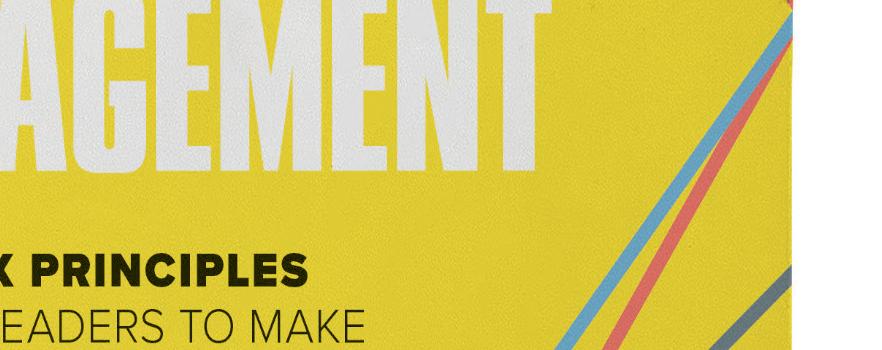


“Better management is badly needed. We learn about it daily from the media. Failures in management are often attributed to managers. Lukas Michel makes the case that theory and practice need an upgrade and offers six principles for the fix.”







MICHAEL KÜHNER CEO, Strametz & Associates
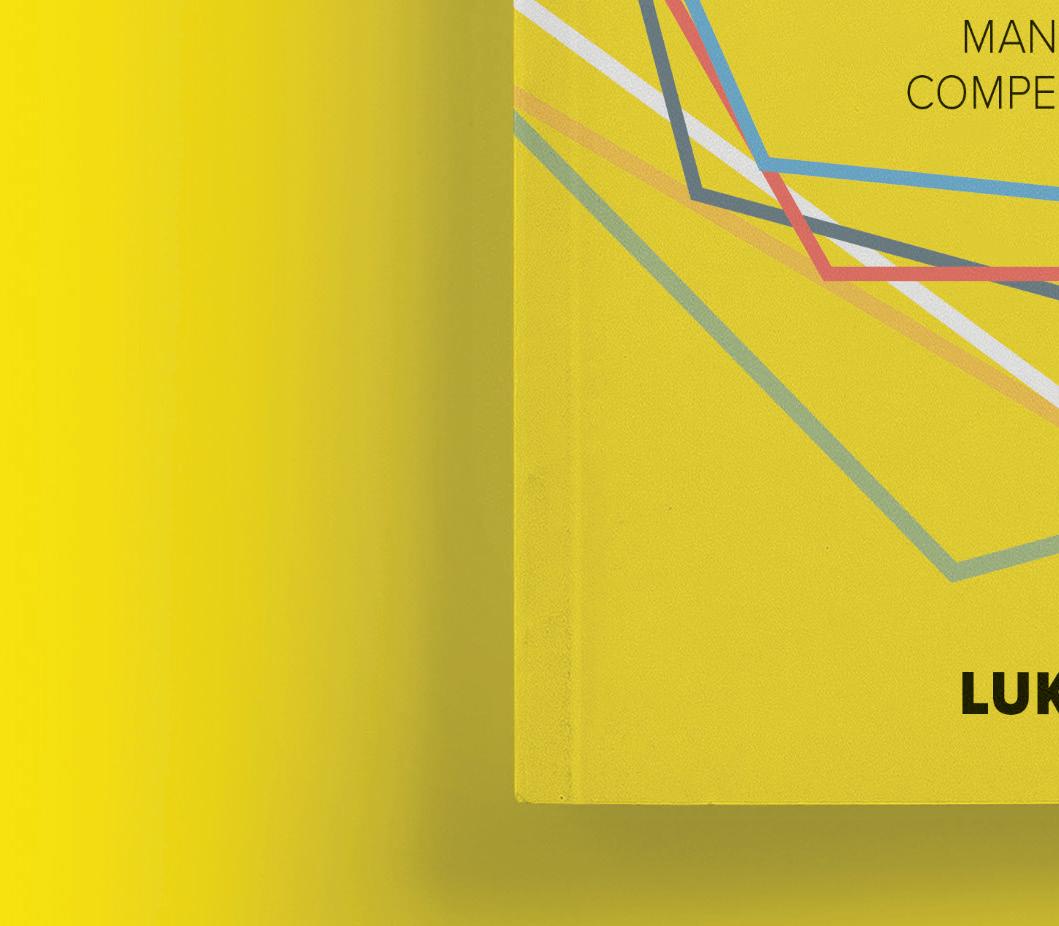

Better Management effectiveness.” ,

“Lukas Michel’s new book provides every leader with compelling insights and tools and serves as a time-tested and validated blueprint that will help to shift an organization from activity-based leadership to true and sustainable organizational effectiveness.”

MARK W BELICZKY, President and CEO, ProHome Holdings, LLC

Print edition:


ISBN 978-1-911687-26-9 | E-book edition: Published by LID Publishing (www.lidpublishing.com
ISBN 978-1-911687-27-6
Published by LID Publishing (www.lidpublishing.com)

An inflection point occurs. An event signals a 10X shift in something that used to be true. What happens? People say the event came out of the blue and took everyone by surprise. Yet most of the time, that is nonsense. Significant inflection points – the rise of the internet; the emergence of a global pandemic; the advent of generative AI – are usually preceded by a long, traceable period of gestation. Why, then, do they so often take us by surprise? It is simply because we are not paying attention.
Headline from the future
So, here is a straightforward guide to building what my colleague Kes Sampanthar and I call an early warning system in your own organization. It begins by brainstorming a ‘Time Zero’ event. That’s something that represents the arrival of an inflection point. Think of it as a headline from the future. It could be good or bad – what we’re looking for here is something sufficiently noteworthy to attract a reporter.
Unfolding now is the rise of GLP-1 inhibitors, drugs that reduce cravings for everything from salty snacks to cigarettes. The trend has major repercussions for companies – particularly if it catches them unawares. Here’s the headline: “Manufacturers fret as Americans use weight loss drugs to depress demand for their products.”
Now comes the early warnings concept. Before that headline could be written, what would have to happen for it to be true? We call these indicators, and we try to arrange them in terms of timeframes.
The drugs are readily available for those who can pay They have achieved social acceptance Celebrities such as Oprah Winfrey have announced they are using them Manufacturers offer food specifically for users of these medications
Lower cost or more accessible formulations become available Health systems approve payment for
Significant inflection points, such as the rise of the internet, are usually preceded by a long, traceable period of gestation
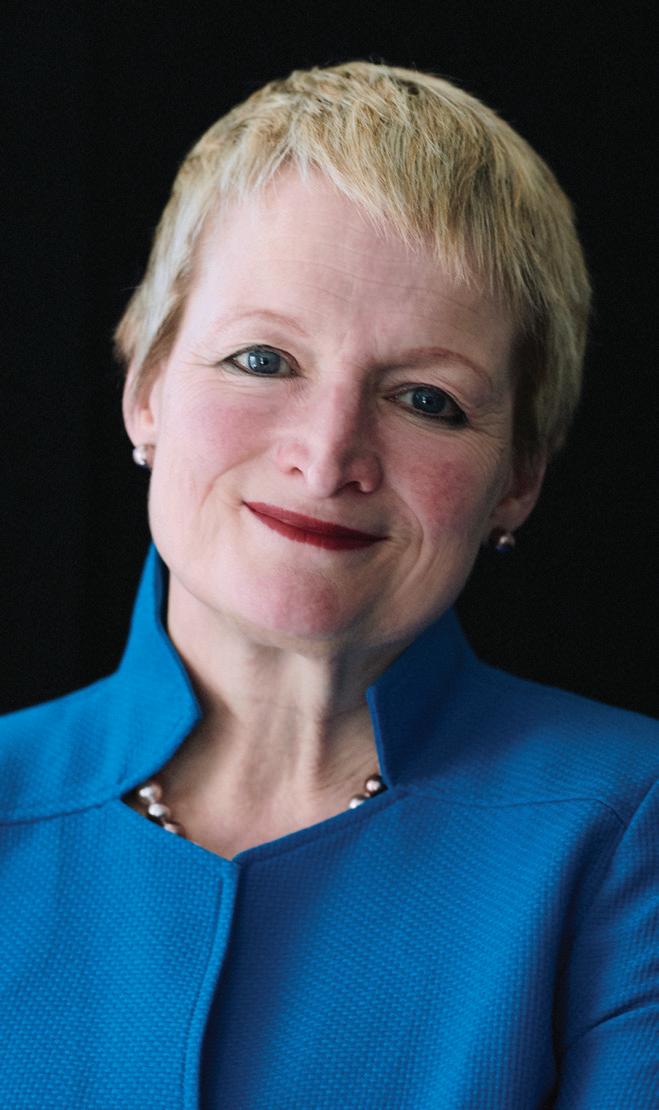
obesity drugs because they prevent more expensive conditions
New entrants have their own GLP-1 inhibitors approved by the FDA
Consumption of soda, salty snacks and baked goods experiences a single digit decline year on year
Doctors report that patients who smoke are cutting down on cigarettes
Time Zero less 12 months
Public health advocates call for labeling of ‘addictive’ ingredients in food
Manufacturers of salty and sweet foods are accused of borrowing from the tobacco industry’s playbook
Lawsuits filed on behalf of plaintiffs claiming their overeating stems from food engineered to be addictive Entrepreneurs create small businesses around the supply of GLP-1 inhibitors on a mass scale
Once you have the early warnings identified, assign each one to a specific member of your team to track. Then, regularly, get a small team together, each of whom have responsibility for looking after the early warnings. The goal is not to decide on action steps – yet. The goal is to get everyone in the early warnings team to be more alert to what is potentially going on. This is where AI comes in. If you set up a system of enhancing human monitoring by using AI to identify changes, things become much easier.
Avoid acting on early warnings too soon. Business lore is full of examples of firms who got the general idea right but moved too early on their insights. The sweet spot is the Period of Optimal Warning. Not too early, when signal and noise are very high. Not too late, when it’s all a done deal. Using AI, we expect that acting in the Period of Optimal Warning will become more straightforward than it is today. And if you figure that out before the competition? So much better for you!
Rita Gunther McGrath is professor of management at Columbia Business School
The problem with strategy is not one of generating ideas – it’s execution. Here’s how to stay focused on the real priorities
Writing Johan Grönstedt
Have you ever been truly bad at something? So bad that you failed far more than you succeeded? Many of us have such things in our personal lives. Mine is dancing. But the thing is, I know I’m bad at dancing. By contrast, there’s a peculiar part of our professional lives where we are universally terrible, but somehow collectively convinced we’re brilliant. It is the field of strategy execution.
Strategy is an over-utilized concept and, in my experience over a career as a management consultant and chief strategy officer, very few leaders truly understand its meaning. Most, of course, would never admit that.
The problem with strategy is rarely a lack of good ideas; it’s the inability to turn those ideas into reality. David Norton and Robert Kaplan wrote in The Balanced Scorecard that nine out of 10 strategic initiatives fail to reach their objectives on time. Michael Mankins and Richard Steele’s research, published in the Harvard Business Review (2005) found that companies deliver, on average, only 63% of the financial outcomes promised by their strategies. This execution gap leads to a global loss of roughly $1 million every 20 seconds, according to the Project Management Institute. Such wastage has tangible consequences, including our continued inability to tackle global societal challenges effectively.
I believe that we stand at a pivotal moment. The rate of change is ever-increasing, so our inability to successfully execute is increasingly problematic. We can either accept the status quo and become passengers, or we can step up and do something about it. I would like to challenge you to critically assess your own ability to execute strategy. For those who dare: I invite you to join the Execution Revolution.
After years of studying and applying various methodologies, I noticed three main issues consistently emerging as the primary culprits behind poor outcomes.
First and foremost is the ability to prioritize. In the drive for success, organizations often scatter their focus, chasing every shiny new opportunity. But limited resources mean you can’t pursue every goal effectively. Each chosen project comes at the expense of another; every minute spent on one task is a minute withheld from a potentially more impactful activity. Ironically, focusing on less achieves more.
Second is the inability to align around goals throughout company hierarchies. If everyone is rowing in different directions, you’ll make the wrong kind of waves. Understanding of a company’s strategy diminishes as you move down the hierarchy. (And even top leaders may have a surprisingly poor grasp of the strategy: as Donald Sull, Charles Sull, and James Yoder put it in a 2018 MIT Sloan Management Review article, “No One Knows Your Strategy – Not Even Your Top Leaders.”) Fewer, clearer goals make it easier to align everyone, top to bottom.
The third point is more technical but equally critical: the steering systems that most companies

use are not efficient in driving change. My own definition of strategy execution is, ‘Driving behavior change at scale.’ As part of that, you will need to handle resistance. This is what gets strategies killed in the real world. Contrary to popular belief, the issue isn’t a widespread lack of engagement at lower levels. It’s simpler than that.
The greatest challenge in strategy execution is the relentless pull of daily operations, consistently sidelining long-term goals. Immediate tasks and urgencies push strategic tasks to the perpetual ‘next week,’ undermining the organization’s ability to achieve its most important goals. Without a mechanism to counteract this force, pivotal improvements are perpetually deferred in favor of more pressing, but often less impactful, day-today demands.
A revolutionary recipe Strategy and execution are two sides of the same coin, each meaningless without the other. Yet there is a ‘cheat code’ for a streamlined and potent methodology for successful strategy execution. It consists of just four easy-to-grasp components. Think of it as the minimalist’s guide to not messing things up.
The first two components, Most Important Goals (MIGs) and Strategic Initiatives, form the strategic part of the methodology. They answer the questions of what and how: what do you aim to achieve, and how do you aim to achieve it? The third and fourth components, Key Activities and Strategy Stand-Ups, form the execution part of the methodology. They answer the questions of what you do to focus your efforts, and how you sustain change and maintain momentum over time.
Exceptional execution begins with narrowing the focus. You can’t be everywhere at once. Discipline starts with the top team designating two to three MIGs; any more and you’ll drastically decrease your chances of success. Each subsequent team then identifies two to three goals that support the team above. This creates a streamlined set of goals across the company, ensuring each team has the right focus to make progress without losing alignment.
2 Strategic Initiatives These enable your focused goals with the most efficient and
The greatest challenge in strategy execution is the relentless pull of daily operations, consistently side-lining long-term goals
effective tactics. These initiatives represent the ‘big bets’ that can drastically change a company’s direction and significantly influence its financial performance. To be successful, they need to go beyond incremental improvements, which typically only maintain the status quo. Such initiatives – the company’s biggest moves – account for 45% of a company’s performance (Chris Bradley, Martin Hirt, and Sven Smit, Strategy Beyond the Hockey Stick: People, Probabilities, and Big Moves to Beat the Odds, 2018).
Strategic Initiatives serve as actionable pathways designed to realize MIGs and illustrate how we plan to achieve our objectives. They provide a transparent growth roadmap, pinpointing sources of performance enhancement. These initiatives make the strategy understandable for everyone, concentrating efforts and clarifying the rationale behind your strategic direction.
3Key Activities These are your high-impact actions. The principle is that a small number of activities will drive the majority of your results – so it’s essential to identify these high-leverage activities and focus your efforts there. The essence of success in any endeavor lies in focusing on controllable, impactful actions.
Many organizations lose sight of this, entangled in the allure of the end goal without anchoring their efforts in the activities that lead there.
Key Activities offer a way to focus efforts and resources where they are most needed, providing clear direction on pivotal actions for the team and the organization. However, this isn’t about micromanaging every minor task. That approach is impractical and counterproductive. Instead, teams should pinpoint a select number of impactful actions aligned with overarching company goals and initiatives.
These Key Activities then serve as the foundation for steering the team’s efforts and monitoring their progress toward strategic success. Activity-based steering aligns daily efforts with strategic imperatives. Each team member gains a clear understanding of their role in the grand
scheme, connecting their day-to-day actions to the company’s strategic goals.
4Strategy Stand-Ups Fostering a culture of commitment and driving real change requires a team process that highlights successes and failures, enabling course correction and continuous improvement. These meetings create a rhythm of accountability and progress, steering the organization toward its MIGs.
Strategy Stand-Ups are short, weekly meetings (15-30 minutes). They focus exclusively on progress toward the team’s MIGs, emphasizing the Key Activities. The structure of Strategy Stand-Ups encourages transparency, accountability, and a shared commitment to collective goals.
Although it might seem like a standard weekly check-in, it’s not. Remember that the relentless pull of operational tasks is one of the primary culprits behind poor execution. These meetings sidestep operations, cutting to the heart of where true value is created. They serve as a sanctuary from daily chaos, a dedicated time to focus solely on actions that drive strategic milestones.
One of the difficulties of strategy is how we manage it systematically. Accenture research in 2023 suggests that 95% of the time, companies still rely on tools such as PowerPoint and Excel. There are plenty of systems for automating operational tasks, but when it comes to strategic clarity, the tools are remarkably analog. This poses a significant stumbling block.
For senior leaders, it’s incredibly hard to cut through the organizational layers, understand the true extent of progress, and get the correct information when it’s needed. From the team’s perspective, the messages from above are often incoherent and conflicting – not to mention that it’s incredibly time-consuming to compile the strategy status reports.
At the core, the problem lies in scaling strategy effectively. Digital tools for strategy execution represent a paradigm shift from traditional, analog methods to a dynamic, interactive approach. These tools enable organizations to quickly roll out strategic changes, maintain alignment across all levels, and actively steer towards goals rather than merely monitoring progress through backwardlooking metrics. Unlike static presentations or spreadsheets, digital platforms offer real-time
The problem with strategy
Research shows that organizations often fall short of their strategic goals. The problem is not one of ideas; it is about execution. Organizations and senior leaders tend to overestimate their effectiveness at delivering strategy. Yet underperformance undermines organizational performance – and holds back our collective ability to tackle global societal challenges.
Less is more
To improve execution, focus on doing less, and do it better. Start by defining Most Important Goals. Define the Strategic Initiatives that will deliver those goals. Prioritize the Key Activities that will have the greatest impact. Conduct weekly Strategy Stand-Ups that enable course correction and continuous improvement, and help steer clear of the inevitable distractions related to operational tasks.
Johan Grönstedt is a business consultant, and vice president and chief product officer of Howwe Technologies. He is the author of The Execution Revolution: Why Most Strategies Fail and The Cure for Slow Execution (Lid Publishing)
updates, collaborative features, and the ability to adjust tactics promptly based on current performance.
These tools offer a way to raise your organizational ability to stay ahead of the constant disruptions, and enable you to react and reprioritize within your strategy. Their potential, however, remains limited by the level of digital maturity within the C-suite. The cost of lagging is high, yet in many senior teams digital understanding is just too low (see Peter Weill, Stephanie L Woerner and Aman M Shah, ‘Does Your C-Suite Have Enough Digital Smarts?’, MIT Sloan Management Review, 2021). It’s not necessary to master every new gadget or app, but you do need to understand how digital tools can amplify your strategy by giving it scalability. If you’re dragging your feet on this, wake up. The longer you resist, the harder it will be to catch up – and catching up is always far harder than keeping pace.
Strategy relies on the voluntary contribution of your entire organization. No matter who you are, you can’t execute it alone. Yet by committing to the straightforward methodology outlined here, you have the opportunity to spark an Execution Revolution and drive meaningful change – while positioning yourself as a leader of tomorrow, adept at navigating and thriving in our dynamic world.
The more who join the crusade for change, the stronger our impact will be. Step up, take charge, and lead the way. Join the Execution Revolution and let’s transform our world together.

crocodile. The trio of entrepreneurs had spotted some similarities between their product and the reptile: both were comfortable on land and in the water, strong and long-living.
Crocs quickly took off because people liked the loose fit of the shoes and the fact they could be easily cleaned. But no one tried to pretend that Crocs were attractive – not even the founding entrepreneurs. As it turned out, the secret sauce behind the brand’s success was its ability to turn this apparent disadvantage into a selling point. It used the shoes’ quirky appearance as a powerful differentiator in the marketplace, adopting the strapline ‘Ugly Can Be Beautiful’ in its advertising.
From reinventing processes to marketing brilliance, what can leaders learn from the most groundbreaking businesses of our time?
Writing Sally Percy
Think of a disruptive business and which company springs to mind? Possibly Google, Apple or Amazon – and for good reason.
Today, it’s hard to imagine a world without internet search, smartphones or online shopping: all major market disruptions that these tech giants helped to pioneer. Yet despite their long histories of disruption – or perhaps because of them –many people would no longer regard this trio of companies as disruptors, instead seeing them as established market players.
So, which other businesses are having the most disruptive impact on the world today? This is the question I explored in The Disruptors, a collection of 15 case studies that examines the business models of some well-known organizations, looking at how they defied the norm to achieve outstanding success. Their rise to the top of the business world offers useful lessons for leaders looking to disrupt their own marketplace. Here are four of the most intriguing stories.
Crocs – a love or hate brand
In 2002, three friends from Colorado bought the rights to manufacture a line of foam-based boating clogs that they named Crocs, an abbreviation of
No two disruptive businesses are ever identical in their approach. They each have their own strategies
Today, more than two decades after they were first launched, Crocs are firmly established as an iconic brand. Thanks to their usefulness, they appeal to a broad range of people and are suitable for a wide variety of purposes from boating and fishing, through to working in hospitality and warehouses. By continually reinventing themselves through headline-grabbing collaborations with designers and celebrities, Crocs have also remained a fixture of popular culture.
Despite their widespread popularity, some consumers still view Crocs as an affront to good taste. But this is no bad thing from an awareness perspective, according to digital marketing expert Clara Kelly, since it means the brand is talked about. “Love or hate brands get a lot of traction,” she says. “More than a brand people just like.” Certainly, Crocs shoes have a loyal community of fans, which is growing all the time due to the brand’s social media engagement and clever marketing strategies. As an example, it hosts a regular ‘Croctober’ celebration, introducing a special style to mark the month of October. In 2023, this special style was the eye-catching Crocs Classic Cowboy Boot, complete with spurs. Predictably, the boot was loved by some and hated by others.
Research lab OpenAI became a household name in November 2022 when it unveiled the revolutionary, free-to-use chatbot, ChatGPT. Just two months after its launch, ChatGPT had an estimated 100 million monthly users, making it the fastest-growing application in history, according to UBS.
ChatGPT sparked an explosion of interest in generative AI models. These tools are set to transform our world and affect jobs in a wide range of industries, including accounting, engineering, journalism, IT and law. While companies are still experimenting with use cases for different generative AI technologies, there is an ongoing debate around the tools, which present a wide range of risks from bias and breach of copyright, through to presenting false information as fact.


Amid the unfolding generative AI revolution, it’s no accident that OpenAI is arguably the most influential organization in the space – if not on the planet. The non-profit lab, which has a for-profit subsidiary, has received substantial backing from a group of wealthy and powerful individuals and organizations since it was founded in 2015. Among these is Microsoft, with whom OpenAI has an important strategic partnership.
But while robust financial support has been critical to OpenAI’s success, another key factor has been its powerful mission and vision for the future: to create safe artificial general intelligence that benefits all of humanity. The ethical nature of that mission captures the imagination of potential employees, helping the lab to attract talented people who want to make a positive difference to the world.
OpenAI tries to cultivate a collaborative, egalitarian, transparent culture, enabling its people to perform at their best. Diane Yoon, the lab’s vice-president for people, said that employees from different teams are expected to do a lot of “cross-pollination” in the office cafeteria, discussing research papers and techniques.
With so many bright minds trying to achieve groundbreaking things, it’s perhaps inevitable that tensions should occasionally erupt. During a


week of high drama in November 2023, OpenAI’s board unexpectedly dismissed its high-profile chief executive, Sam Altman. Media reports suggested that Altman was seen by the board to be compromising human safety by rapidly commercializing AI products. While Altman was reinstated, the subsequent departure of the lab’s chief scientist, Ilya Sutskever, points to continued differences of opinion within the organization over how it should achieve its objectives.
In the long run, OpenAI’s success will surely rest on how it reconciles its ethical mission with commercial pressures, and how it accommodates diversity of thought.
What disruptors have in common is a staunch commitment to addressing and solving a problem
On the face of it, Tesla’s achievements can seem like a foregone conclusion. Given the existential threat of climate change, the world needed to transition to a lower-carbon economy. So, it’s obvious we have to make the large-scale shift to electric vehicles, right?
Well, it wasn’t so obvious back in 2004 when serial entrepreneur Elon Musk first invested in a fledgling electronic car company called Tesla. The company – named after the late Serbian-American engineer Nikola Tesla – had a vision of building an entirely electric sports car called the Roadster.
Musk, who became Tesla’s chief executive in 2008, later explained that he funded the company because he wanted to “help expedite the move from a mine-and-burn hydrocarbon economy towards a solar electric economy.” Nevertheless, he also noted that at the time the business was founded, “people thought electric cars were the stupidest thing ever, bad in every way.” Back then, electric cars were perceived as ugly, slow and hampered by a low driving range.
From the outset, Tesla’s strategy was to make sexy electric cars, introducing more and more affordable models over time, until it ended up as a mass-market brand. It has been able to deliver on that strategy by following several key principles.
Firstly, Musk believes strongly in connecting design with engineering. This has helped the company to achieve the high industrial design standards that Tesla is known for. Tesla also adopts the concept of ‘first principles’ when it comes to its design and engineering processes. “You boil things down to the most fundamental truths and say: ‘what are we as sure as possible is true?’ and then reason up from there,” Musk has explained. In other words, approach problems without preexisting ideas.
Other key principles applied at Tesla include questioning every requirement to ascertain whether it really is valid, removing unnecessary elements of processes, simplifying and optimizing as much as possible, speeding up workflows, and automating – but only after questioning requirements and removing unnecessary tasks.
Tesla is also known for embracing vertical integration, where a company effectively owns its supply chain instead of sourcing components from different suppliers. Indeed, Musk has described the firm as being “absurdly vertically integrated compared to other auto companies.” A vertically integrated approach enables Tesla to effectively manage its production process, reduce its dependency on external suppliers, lower its production costs, and respond rapidly to changes in the market.
TikTok – the algorithmic advantage
Short-form video service TikTok is a cultural phenomenon and one of the world’s most popular apps, with more than 1.7 billion users. It was launched in China in 2016 by its owner, ByteDance, under the name Douyin. Despite being a late entrant to the crowded social media market, TikTok enjoyed exponential growth within its first few years. Its popularity further accelerated during the Covid-19 pandemic, when lockdowns meant people were stuck at home looking for entertainment.
What are the secrets to TikTok’s success? For starters, it has effectively democratized the business
Tesla is known for embracing vertical integration, where a company effectively owns its supply chain
of entertainment. Blake Chandlee, president of global business solutions at ByteDance/TikTok, describes the app as an “entertainment platform that’s driven by community.” The platform is home to a vast range of authentic and engaging content – most of which has been created by people who are neither celebrities nor influencers, but who just want to entertain others. TikTok makes it very easy for would-be entertainers to create a steady supply of new and interesting videos by including editing tools within the app. It is also continually adding new features.
Notably, TikTok offers several monetization tools that enable creators to make money from the platform. A good example is TikTok Live, a livestreaming service that allows users to send virtual gifts to creators that can then be converted into cash.
Content only drives loyalty if it is shown to the right people, at the right time, however. TikTok’s powerful recommendation algorithm learns users’ interests from their viewing habits and makes compelling, personalized recommendations. Videos that attract high levels of engagement –such as likes, shares and watch time – are pushed out to other users who have similar interests. The algorithm’s effectiveness at keeping users hooked helps to explain why TikTok has been described as “dangerously addictive” by The Washington Post Dr Alessia Paccagnini, associate professor at the University College Dublin School of Business in Ireland, believes that in future TikTok is likely to use AI to create “even more finely tuned, userspecific content streams.” She predicts growth in the e-commerce space, with TikTok well-positioned to disrupt traditional online retail models by offering “a more seamless, integrated shopping experience directly within the app.”
TikTok’s long-term success will also rest on its ability to assuage concerns that it poses a security threat due to possible connections with the Chinese government. It is fighting for its survival in the US, where politicians have voted in favor of the app being banned unless ByteDance sells its controlling stake.
Sally Percy is a business journalist and author of The Disruptors: How 15 Successful Businesses Defied the Norm (Kogan Page)
No two disruptive businesses are ever identical in their approach. They each have their own processes and strategies, serve the market in unique ways, and develop bespoke solutions to the challenges they face. But while their business models may vary, what disruptors have in common is a staunch commitment to addressing a problem, whether that’s developing a waterproof shoe or making electric cars available to the masses. By solving those problems, they are helping to change our world.

The UK’s center-left Labour Party has regained power in a landslide victory after 14 years in opposition, with the center-right Conservative Party slumping to its worst-ever defeat. How will Labour solve the deep problems gripping the British economy?


Land area
244,376 sq km
(94,354 sq mi)
Population
67.6m
Capital
London (pop. 8.8m)
GDP
$4.029bn (PPP)
Economic record
+0.1% (2023)
Forecast
-0.4% (2024, OECD forecast)
GNI per capita
$58,880 (2024 estimate)
Currency
Pound Sterling
GBP £1 = US$1.28 (July 2024)
Unemployment
4.4%
Life expectancy
Men 78.6
Women 82.6
Official languages
English
Welsh

411
Total Parliamentary seats won by Keir Starmer’s Labour Party in the 2024 general election 41%
Share of new Members of Parliament who are women – a record

5
Seats won by the eurosceptic rightwing Reform UK
72
Number of MPs elected for the europhile centrist Liberal Democrat Party – up from 64
121
Seats won by the centerright Conservatives – the worst result in its history


55%
UK voters who now think leaving the EU was a mistake 4%
Decline in UK productivity due to Brexit, according to the Office for Budget Responsibility
0.2%
Rise in the pound as markets positively to the first speech by Rachel Reeves as the UK’s Chancellor


A mandate like this comes with a great responsibility. Our task is nothing less than renewing the ideas that hold this country together –national renewal
Prime Minister Keir Starmer
After 14 years, Britain has a stable government... that respects business, wants to partner with business, and is open for business
Rachel Reeves, the new Chancellor of the Exchequer
Mr Prime Minister… there’s no doubt our two countries are going to continue our Special Relationship
President Joe Biden congratulates Keir Starmer

35%
Pay rise demanded by junior doctors. The National Health Service has faced a wave of strikes since 2022, including by nurses and consultants
9
Months from September 2024 until the UK’s largest water company, Thames Water, runs out of cash
1.5m
New homes promised by Labour over its five-year term, a rate of building not reached since the 1960s
10
Rail firms set to return to public management

2.5%
Promised defense spending, as a share of GDP
Writing Patrick Woodman
In a world where so many of our communications are mediated by our screens or crammed into emails, WhatsApps and DMs, the latest book from Pulitzer-winning reporter Charles Duhigg feels supremely timely. Supercommunicators: How to Unlock the Secret Language of Connection is about the art of communication – although, like Duhigg’s earlier books, The Power of Habit and Smarter, Faster, Better, it is animated by a belief in the power of science to explain the world and help us improve.

Here, Duhigg draws on neuroscience and psychology studies to reveal how we communicate. There are three basic types of conversation, he writes: what is this really about? How do we feel? Who are we? Understanding – and negotiating – the sort of conversation we’re in is crucial. The narrative is fascinating, bringing new understanding to something that is – to a greater or lesser extent – a natural part of daily life.
Duhigg explores why some conversations seem to “click” e ortlessly – our brainwaves sync, he explains – while others grind painfully. The intricacies of our conversations are identified and categorized, the decisions that can pass unnoticed explained in detail. Each such moment is an opportunity to turn a conversation in a di erent direction. This is the ‘secret language’ of communication. Learning it improves our odds of connecting with others.
Duhigg sets out four rules for what he dubs “learning conversations.” Each is
One lesser-known but highly e ective agile practice that executives could use much more widely is the Walking Skeleton. Detailed in Mike Cohn’s book, User Stories Applied, Walking Skeletons involve creating the simplest possible implementation of a complete system that delivers end-to-end functionality.
The steps are simple. First, agree core objectives – the essential elements that need to be demonstrated or validated. This could be a new product, a market entry strategy, or an operational overhaul. Then define the minimal viable system. Outline what constitutes the smallest, yet complete, version of the initiative that can be implemented. This should include all
major components and workflows, even if they are very basic.
Next, build cross-functional teams, including members from di erent departments relevant to the initiative. Then develop the Walking Skeleton. The focus should be on creating a working prototype or pilot that operates end-to-end, to provide a full view of how the concept will function in practice. Then validate and iterate. Use the Walking Skeleton to gather feedback, test assumptions, and identify any critical issues early on. Act on this feedback, gradually adding more features and complexity to the system.
The benefits include achieving earlier validation of promising ideas and reducing
explored via practical sections that o er techniques for putting into practice the concepts explored in the preceding stories and examples. Indeed, there is a sense that practice is very much required here; applying these techniques to fast-flowing, free-form conversations in the real world is a skill to be honed over time.
“The single biggest problem in communication is the illusion it has taken place,” said playwright George Bernard Shaw. For anyone seeking to improve how they connect with others, Supercommunicators is highly recommended.
Patrick Woodman is editor of Dialogue



Supercommunicators: How to Unlock the Secret Language of Connection
Charles Duhigg (Cornerstone Press)
the risk of investing in an unproven concept by surfacing potential issues. It can also drive improved alignment, by bringing relevant perspectives to the table at an early stage. By initially focusing on the minimal viable system, resources are used more e ciently, avoiding the waste associated with over-engineering or premature scaling. The ultimate result can be achieving a faster time-to-market.
Adopting the Walking Skeleton approach allows executives to tackle strategic initiatives with a method that ensures early validation, promotes the e cient use of resources, and reduces risk.
Perry Timms is founder and chief energy o cer of PTHR, a consultancy aiming to create better business for a better world. He is a TEDx speaker, top-selling author, and a member of HR Magazine’s Most Influential Hall of Fame
If the pace of change is greater than ever, what is the impact on employees?
Change is overrated. The almost religious belief of some business leaders that change is intrinsically desirable ignores the checkered history of mergers and acquisitions – 60% of which actually reduce shareholder value – and the enormous toll that change takes on people in terms of anxiety, burn-out, ill health and wasted talent. In The Problem with Change: and the Essential Nature of Human Performance, Ashley Goodall, a former senior HR executive at Cisco and Deloitte, attacks the status quo and proposes a radical alternative.
People need a degree of certainty and predictability in their working lives

Describing the impact of constant change as “life in the blender,” Goodall is critical of corporate obfuscation, doublespeak and confusing “word salad.” He has written a trenchant and entertaining critique of the practice of treating people as human resources to be used and discarded. Polemical, perhaps, but it is rigorous – Goodall draws on an enormous body of data about employee engagement and productivity collected by Cisco to improve its HR practices.
Goodall’s thesis is simple. People need a degree of certainty and predictability in their working lives. They perform at their best, are most productive and stay longer when their work is meaningful and they have good relationships with their co-workers. Team dynamics are critical. Excessive change undermines all this. The key unit for providing this environment is neither the corporation nor the individual, but the team.
With the prevalence of matrix working, Goodall points out, most businesses have no idea how many teams they actually have, nor how well they perform. It is hardly surprising that the e ect of business change on teams has been almost entirely ignored and is poorly managed. By contrast, businesses devote considerable resources to minimizing the impact of change on their customers.
Goodall acknowledges that change is inevitable and often necessary. So what can be done? First, recognize that constant change is highly stressful and costly. Weigh the pros and cons of any change carefully, rather than assuming it must be for the good. Look to provide
a sense of stability and predictability for individuals experiencing change, and whenever possible, keep high-performing teams intact: workers in teams that stay together remain more engaged and motivated than individuals whose teams are broken up and re-assigned. Above all, recognize and reward skill in leading teams. Organizations need to invest in training team leaders and promoting excellence in leading people. Cisco’s data showed that leaders who were distinctive and predictable had the highest impact.
Goodall argues that HR has become obsessed with gaining ‘a place at the table’ on executive boards, to the detriment of their role in championing employees’ interests. Refocusing on protecting employees would improve productivity and thus be in the interest of shareholders. He also argues that HR has a valuable role in training team leaders.
But there’s a catch. HR has a poor record of safeguarding employees: instead, it has been the executive board’s right hand in ruthless cost-cutting and restructuring. Moreover, few outsiders would regard HR professionals as experts in, or exemplars of, good team leadership. Will anything change? The postpandemic phenomenon of ‘quiet quitting’ suggests that a new generation may be less willing to tolerate the psychological price of excessive turbulence. Yet the primary focus of business leaders remains shareholder value. Although Goodall makes good use of Cisco’s data, he is unable to demonstrate a general and measurable link between stability and business performance. So, until a stronger business case is made for a di erent approach to change, I wouldn’t hold my breath.


The Problem with Change: and the Essential Nature of Human Performance Ashley Goodall (Ebury Edge)
We need to be imaginative about what we need and who we can collaborate with to accomplish audacious goals
What would you think if I told you that a partnership among a global philanthropic research organization, a major sports league, a church, and a United Nations fund was the key to addressing one of the world’s most challenging health issues?
Nearly 20 years ago, the Gates Foundation wanted to eradicate malaria in Africa. They knew that the most effective approach was prevention, using mosquito nets. They had substantial resources. Yet they realized they couldn’t go it alone. They needed an ecosystem mindset. Having a viable solution was only a starting point: the biggest obstacles to adoption at scale were psychological, socio-political, and logistical. They needed to raise awareness of how the nets prevented malaria, cultivate trust in that solution, and build infrastructure to deliver the nets to remote rural locations.
Those goals required a diverse and unlikely set of partners. Unicef had an extensive delivery infrastructure, based on decades of work across Africa. To build credibility with the population, Gates teamed up with the United Methodist Church. And, spotting that excitement for basketball was pervasive, Gates pulled in the NBA.
The collaboration of these unlikely bedfellows indicates both humility and an understanding of our interdependent, complex world. Linear solutions – which only look at singular organizations or single-sector approaches to major challenges – are now rarely effective. Instead, we leaders need to engage unlikely stakeholders outside of our industries and sectors to explore wide-ranging perspectives on the way forward.
In the 1990s, I worked at the American Association for the Advancement of Science, the world’s largest federation of scientific and engineering societies. We worked on understanding the social, ethical and legal consequences of scientific advances before they became realities.
We leaders need to engage unlikely stakeholders to explore wide-ranging perspectives on the way forward
We brought together scientists, lawyers, policymakers, media and religious leaders – people who were rarely in the same room – to imagine the future. They helped us see fresh possibilities and made all of our worlds bigger.
When we consider a big-picture vision of how disparate elements fit together, we can create unlikely partnerships that transform our work. This mindset can both help solve complex problems and help us to capture opportunities we might otherwise miss. We can also use this framework to develop our own skills and help our teams flourish. No individual can deliver transformative change alone. We need to partner with those who share our core goals but come from different perspectives and possess different superpowers.
We build careers by going deeper into our areas of expertise, but when we make it to leadership positions, we can fail to look at the big picture. At the Coach K Center, I convene leaders across sectors to explore commonalities and points of learning. The strongest leaders learn from those whose abilities differ from their own.
The old career and leadership playbooks no longer work. We need a diversity of people in our networks, and as our mentors. Next time your organization faces a major challenge or opportunity, resist the urge to retreat into silos in search of solutions. Instead, move out of your comfort zone.
Cultivate the habits of curiosity and build relationships with those who are different, to expand your thinking and your world.


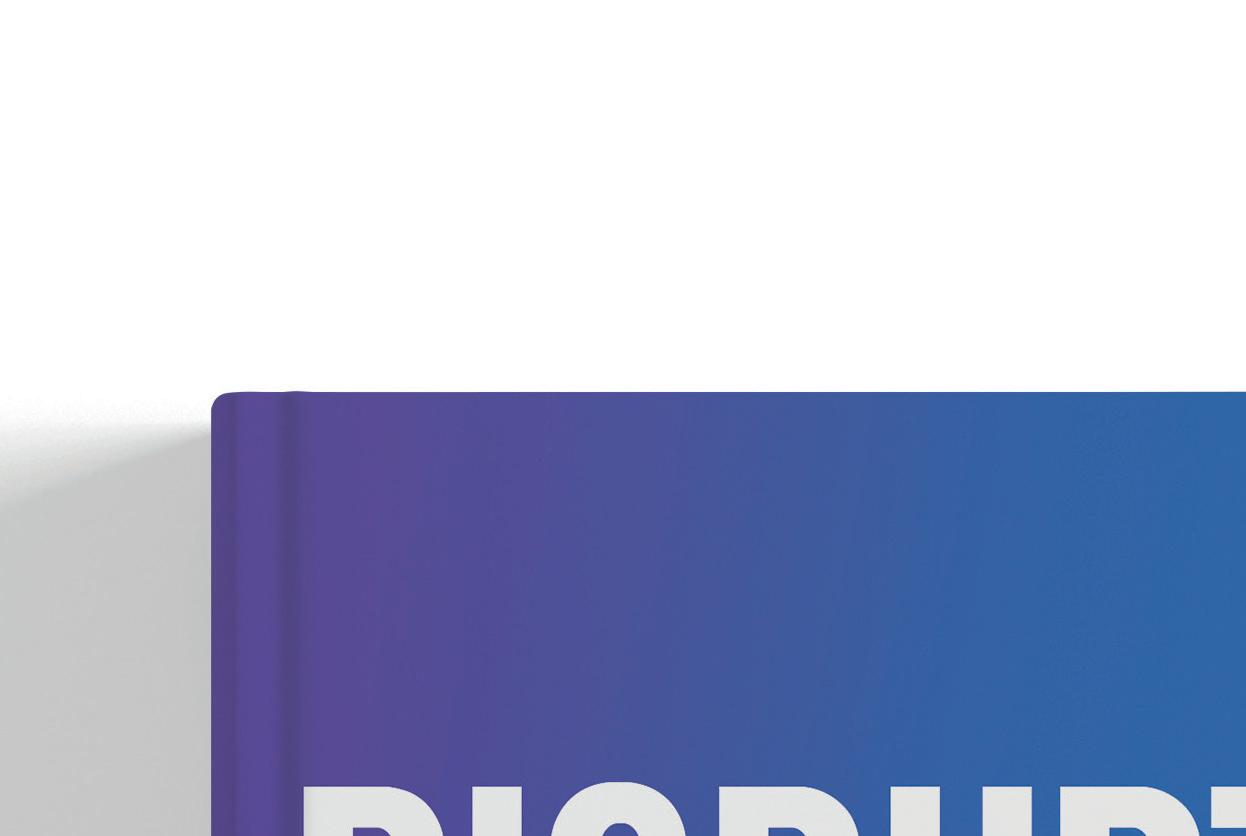
Traditional banks have a future. But they must accept that they have a different future. If bank leaders fail to make radical changes, they will perish. The time for those changes is now.
In the face of fast-moving, low-cost disruptors, bank leaders must acquire the ability to balance the short- and longterm, to reconcile equally the need to exploit existing markets and experiment with new ones – banks and their leaders must become ambidextrous

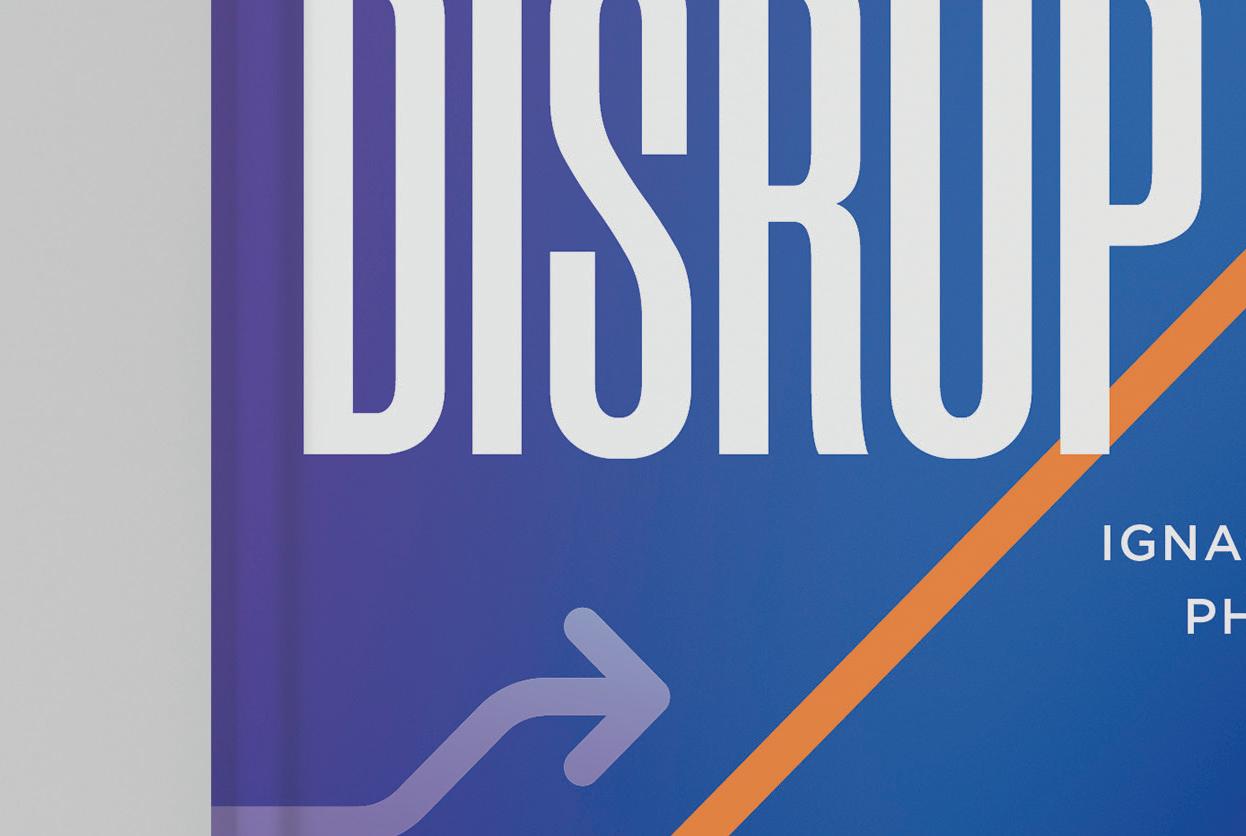






IGNACIO GARCIA ALVES is the Global CEO, PHILIPPE DE BACKER is Managing Partner and Global Practice Leader of Financial Services, and JUAN GONZALEZ is a Partner at ARTHUR D. LITTLE , one of the world’s leading management consulting firms.
































